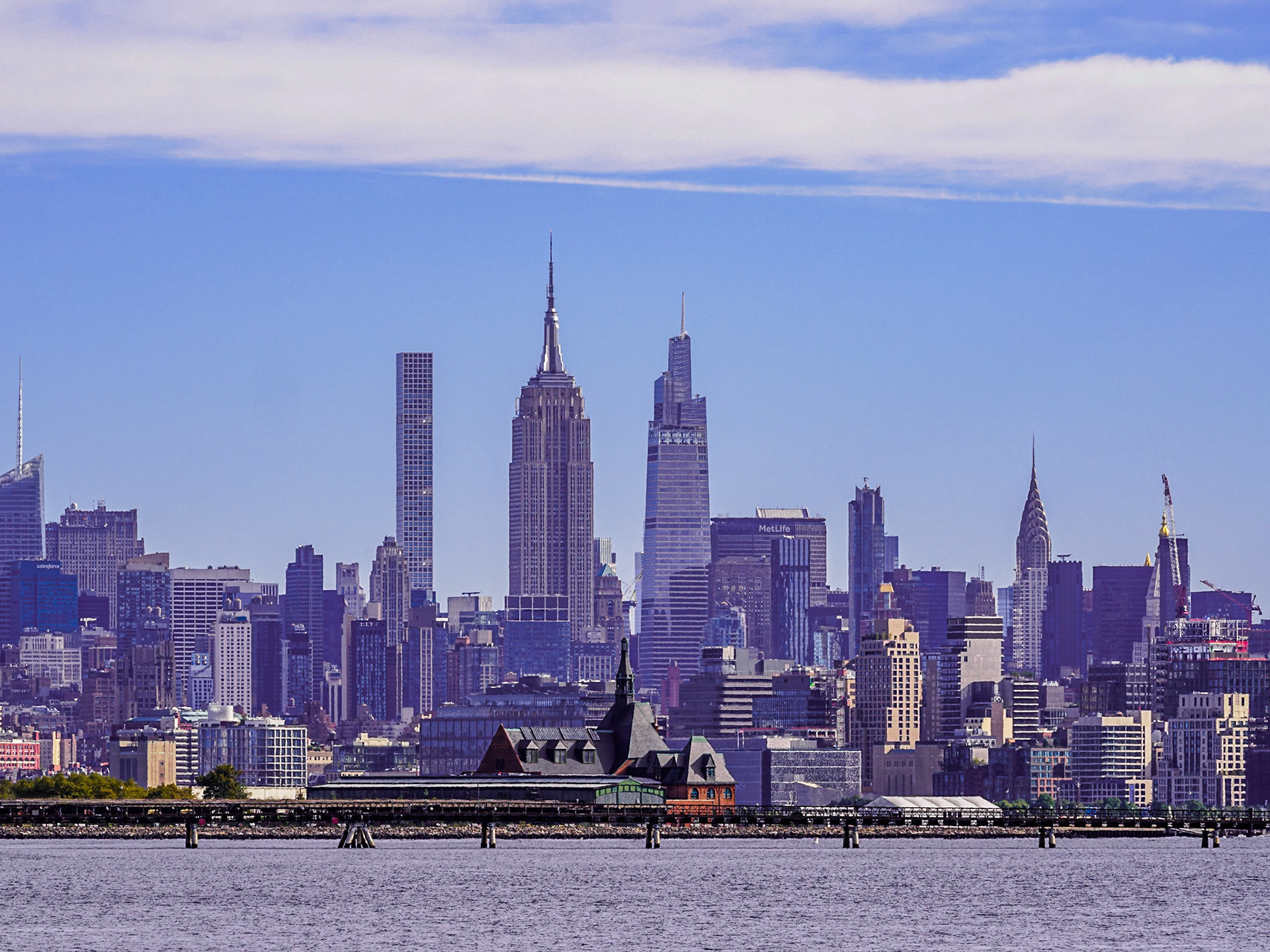It had been almost three years to the day, thanks to COVID, from the last exploration trip Denise and I took together. Back in 2019 we visited the northwest states of Washington, Idaho, and Montana. This time we visited three states in the northeast region of the country: Connecticut, Rhode Island, and Massachusetts. To describe this area, we combined their names into Connrhochucut, which seemed to appropriately reflect the region’s Native American roots (just like the name we gave to our 2019 visit to the northwestern states). Rather than fly up to the Northeast and then rent a car like we usually do, we decided to drive our own car. We got to where we were going to be spending the first couple of nights on the first day of our drive. It was a long, arduous trip with numerous slowdowns, detours, headaches, and occcasional expletives, regrettably, and took a couple of hours longer than anticipated. But we got there. If I have anything to say about it, we won’t be going back, not by car anyway. Besides, we saw everything there was to see, including:
• one of the most famous universities in the Northeast that isn’t called Harvard,
• one of the first printed Bibles,
• a number of National Wildlife Refuges,
• numerous quaint little towns,
• a seaport with a shipyard and vessels that are National Historic Landmarks,
• four state parks in the smallest state in the country,
• the house of a famous author,
• lighthouses galore,
• some of the biggest mammals in the world (and learned everything you’d want to know about them),
• a walk along a cliff,
• several “cottages” of the wealthy aristocrats that lived during the Gilded Age,
• the place where the rich would go to “get away from it all,”
• well-known, known-but-hard-to-get-to, and little-known waterfalls,
• a town so old it isn’t even spelled right,
• an old rock that’s less than it used to be,
• both reservoirs of a pumped storage hydro plant,
• the highest point in Massachusetts,
• a number of covered bridges, including the longest in Connecticut,
• the skyline of the town that never sleeps, and
• the lady that greets visitors.
We did it all (and more) in seven days, and I lived to put this collection of images together.

New Haven City Hall
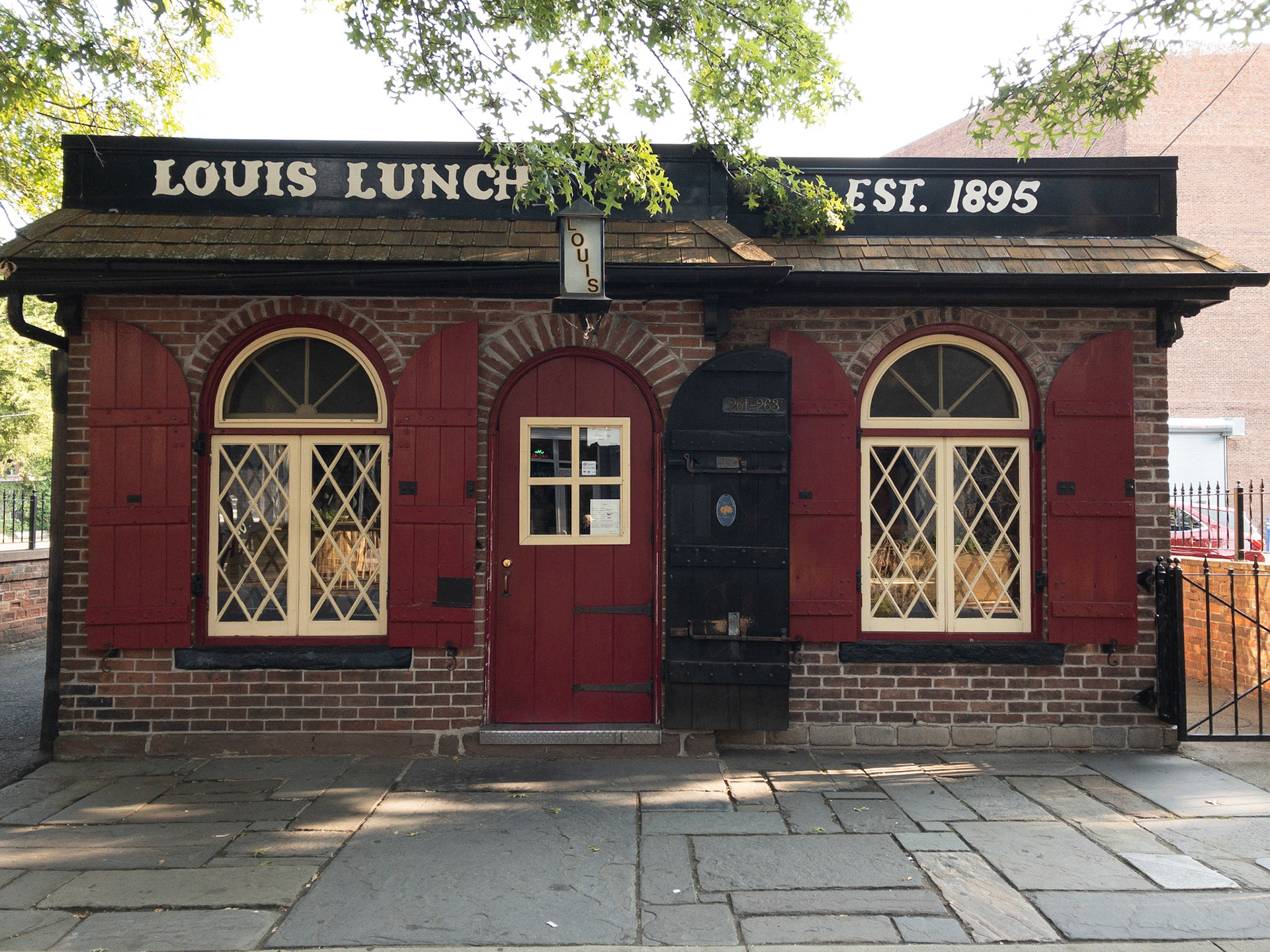
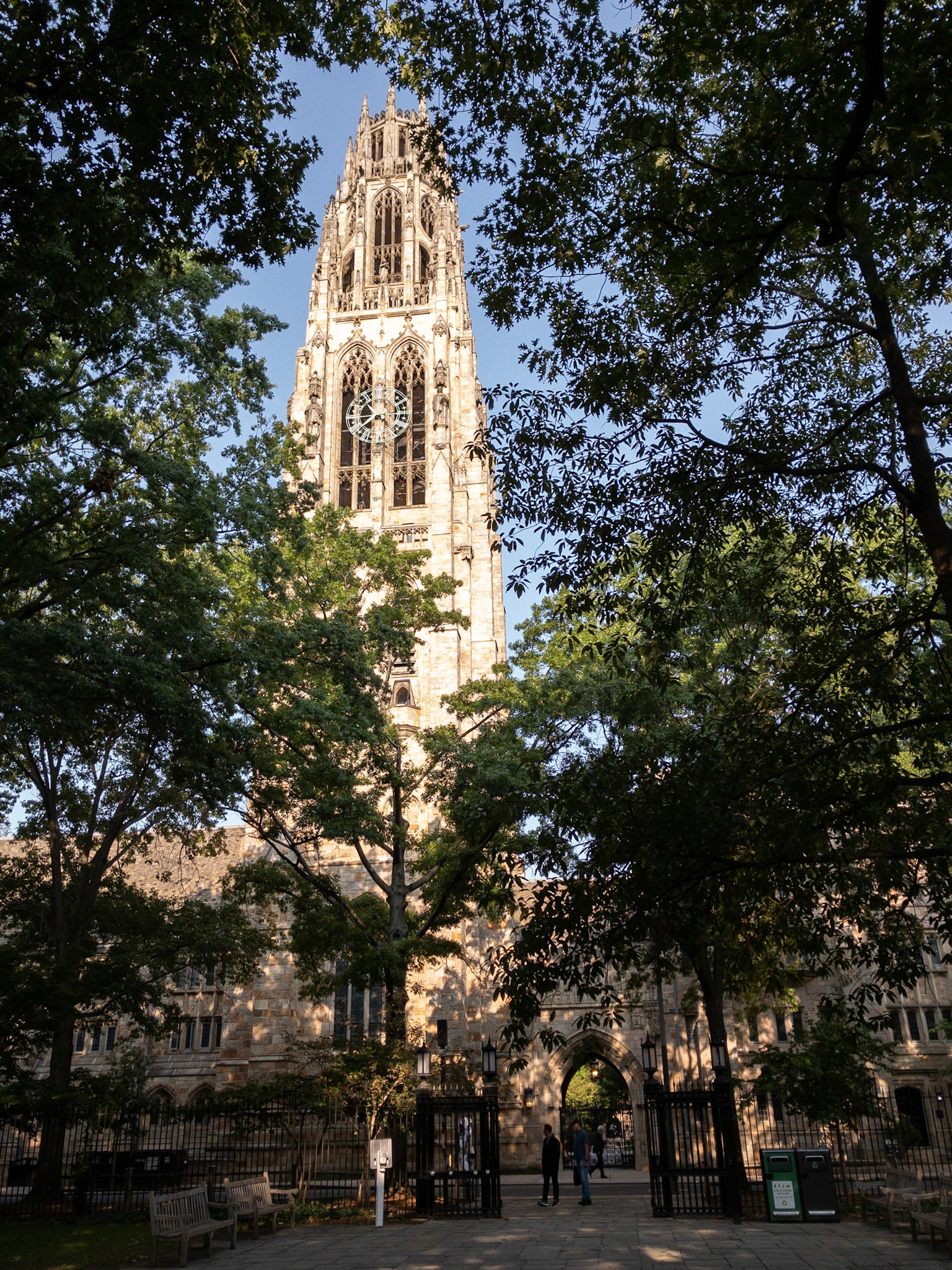
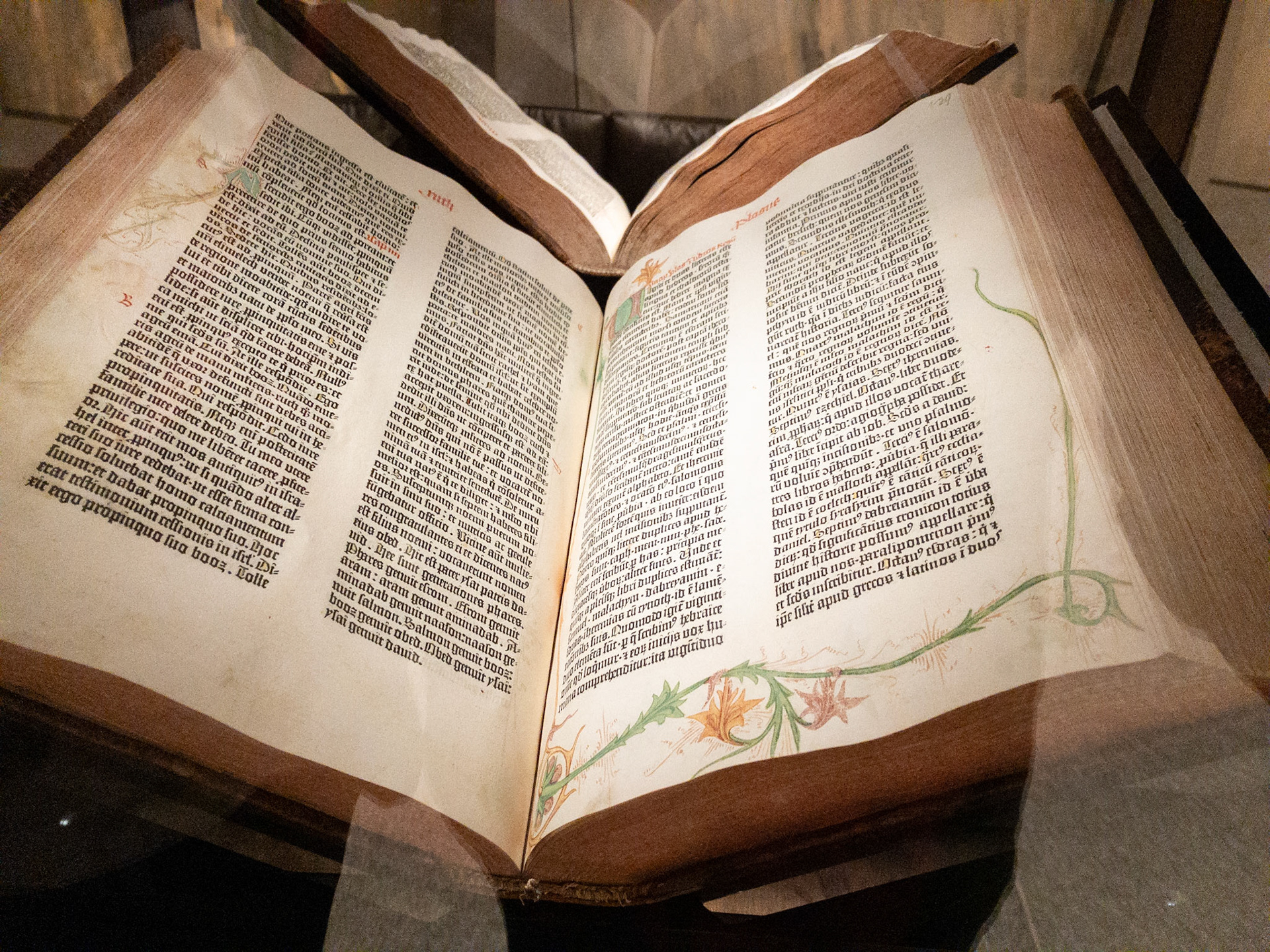
The Gutenberg Bible is difficult to read (at least for us) because of the ornate font, and the fact that it is written in Latin.

Heading northeast from New Haven, we found the small town of Chester. It was settled by families from Saybrook in 1740. Ship building flourished there after the Revolution and the town was incorporated in 1836. It was one of the quaint small towns we visited, lined with shops and restaurants.
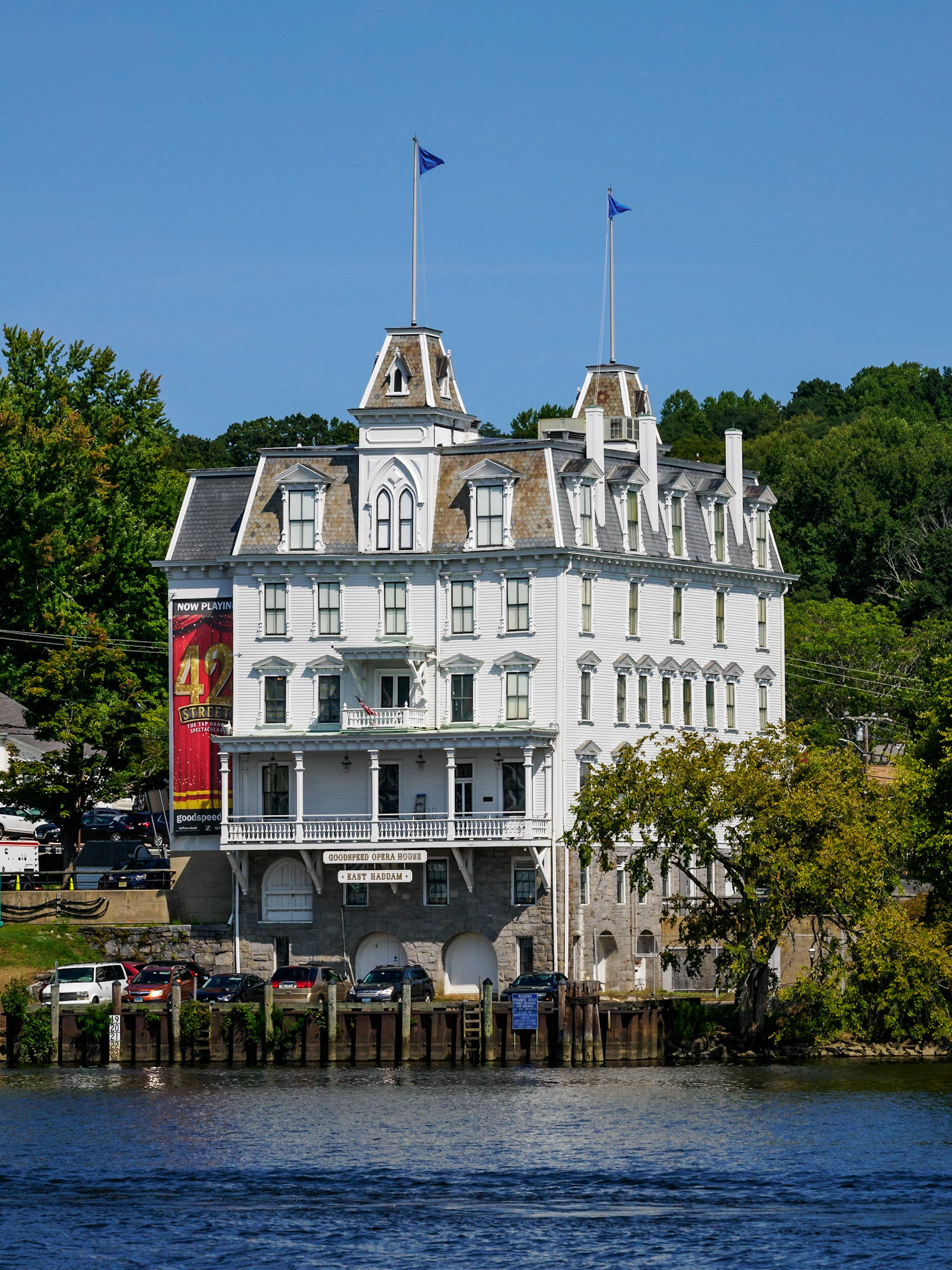
The Goodspeed Opera House in East Haddam, Connecticut
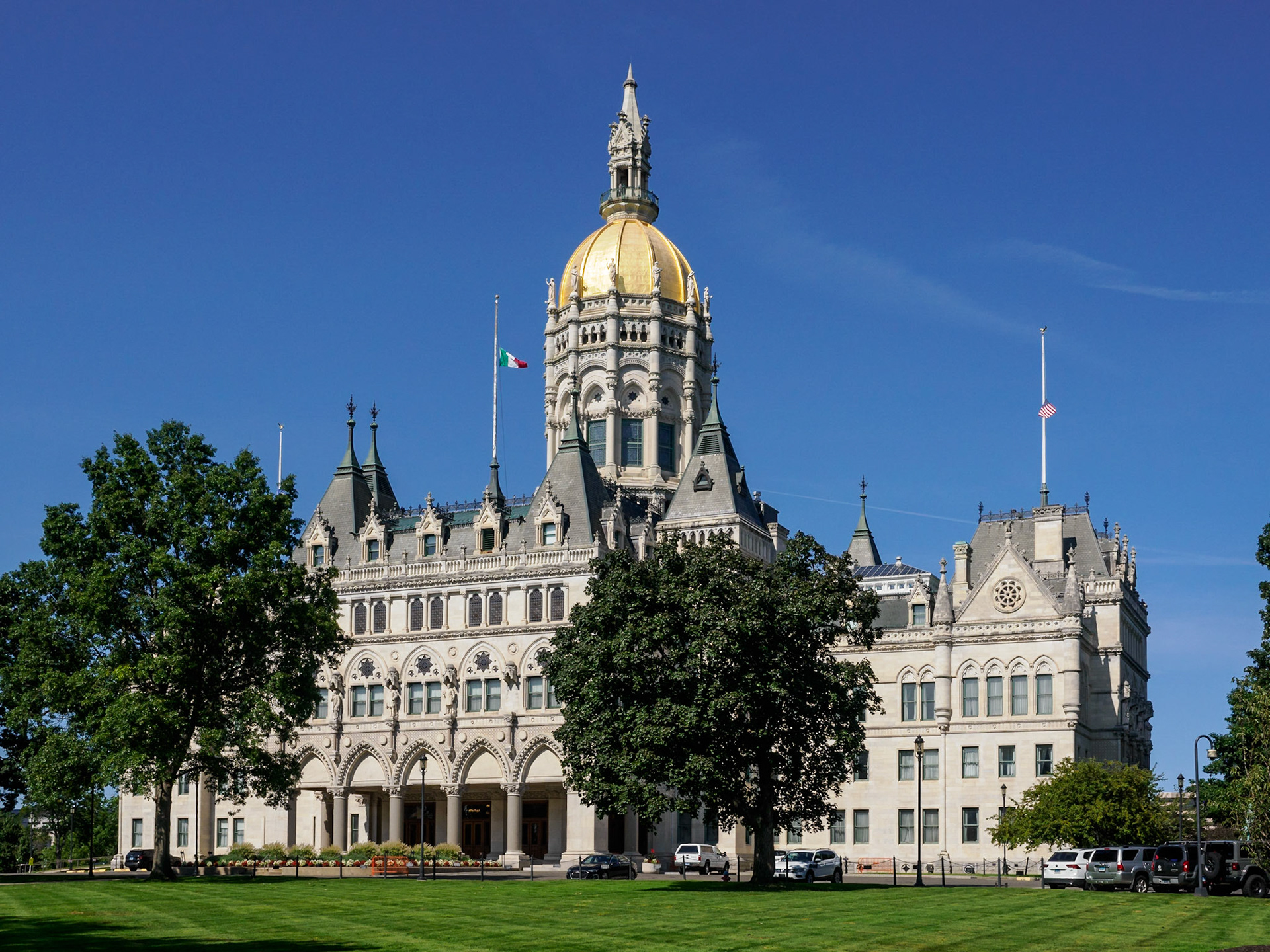
Connecticut State Capitol
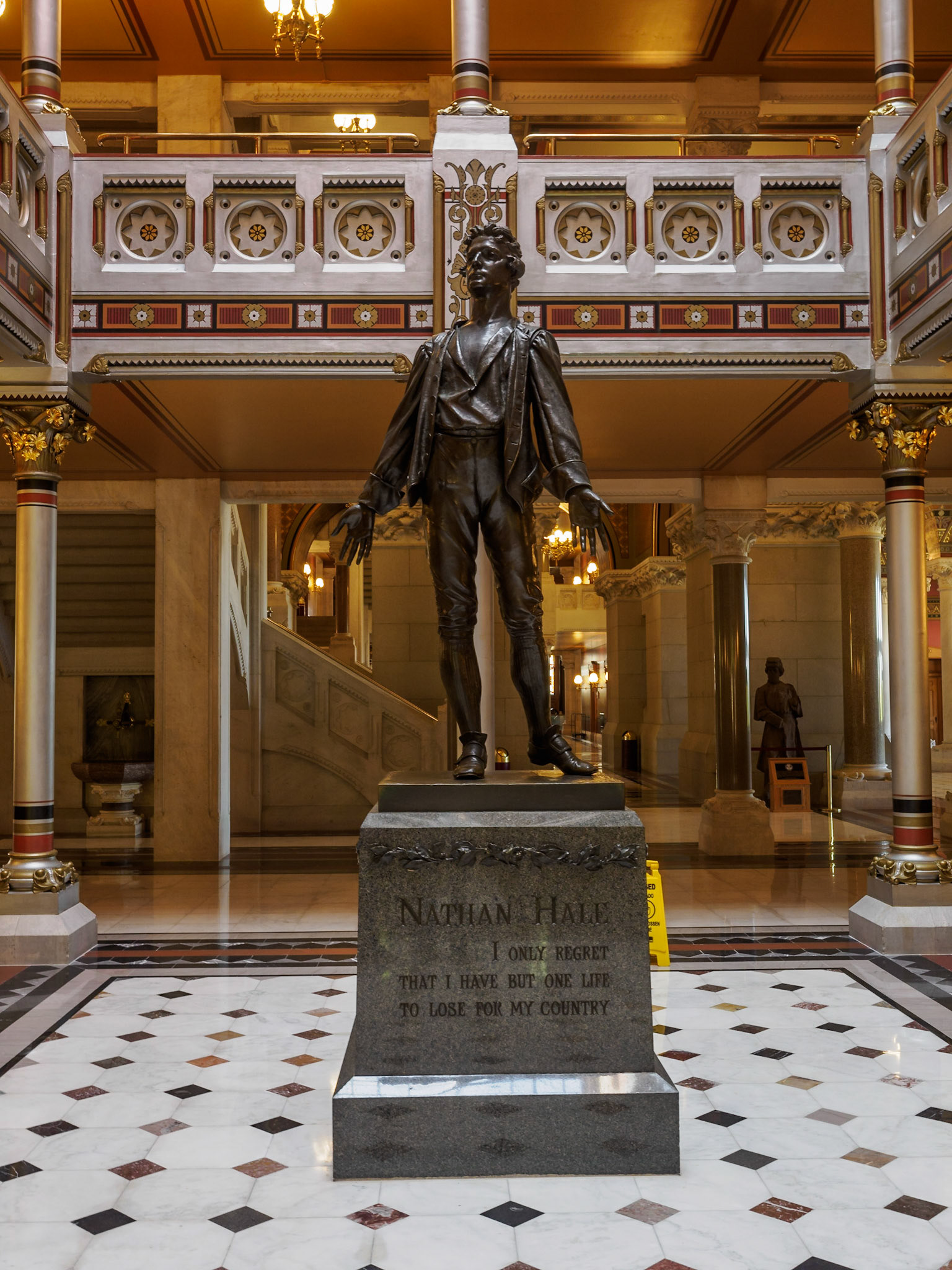
Nathan Hale, a native of Connecticut, was a spy during the Revolutionary War. His famous last words were, "I only regret that I have but one life to lose for my country," which he said before being hanged by the Brits.

The Genius of the State Capitol. This is a bronze version of the one that was on the top of the building.
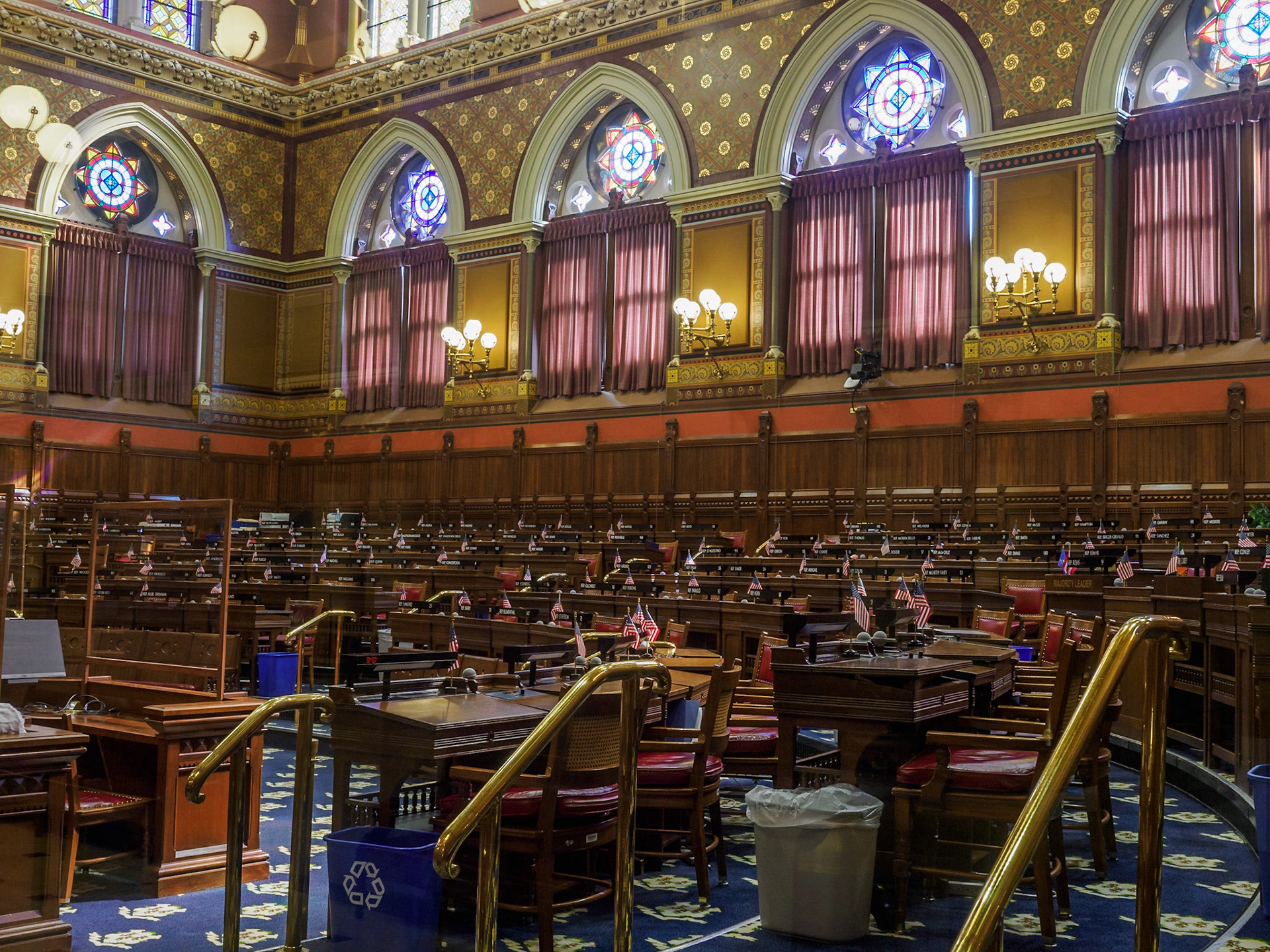
Hall of the House of Representatives
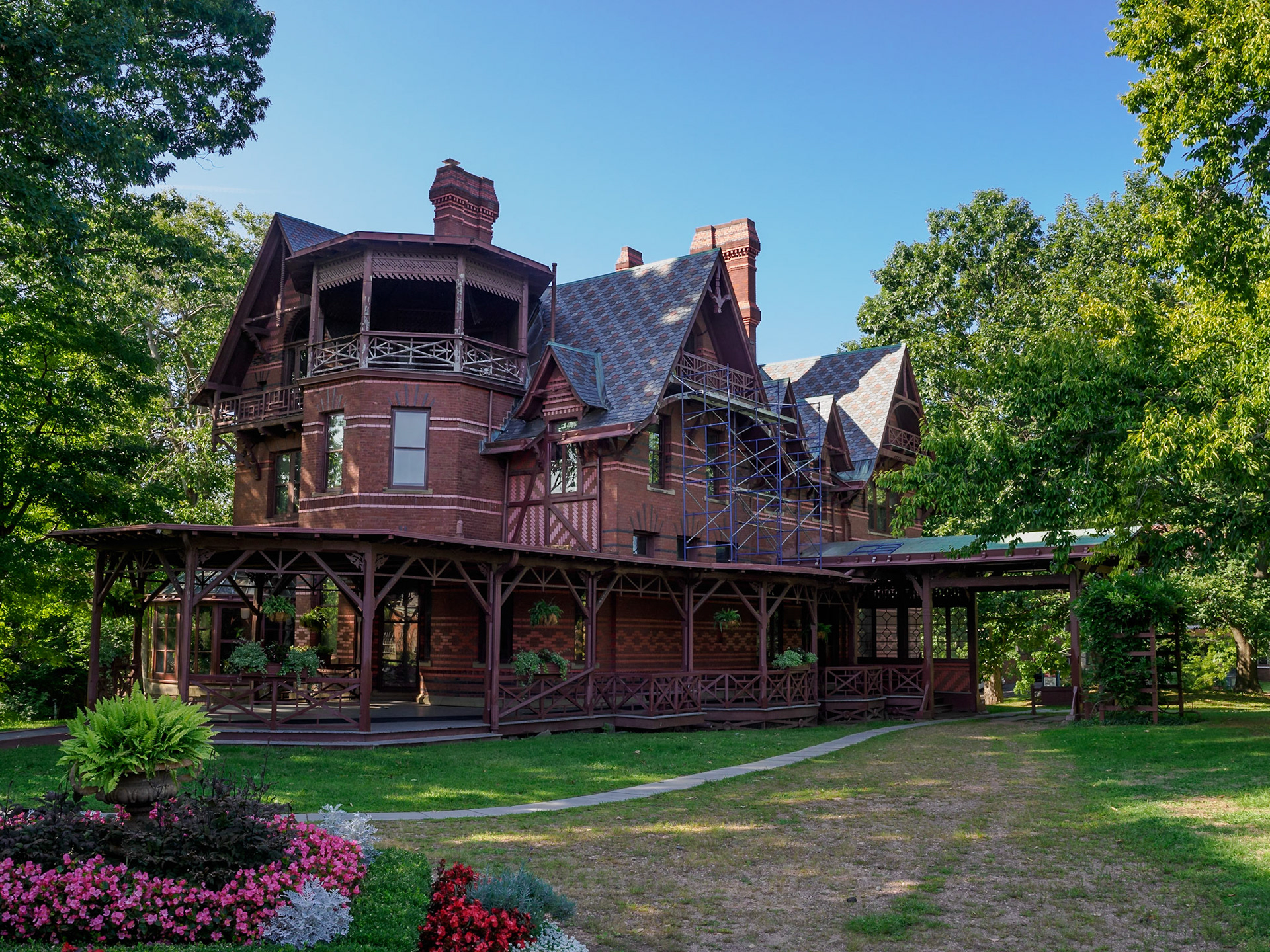
This house, not far from the capitol, was the home of Mark Twain and his family from 1874 to 1891. It is next door to the Harriet Beecher Stowe House.
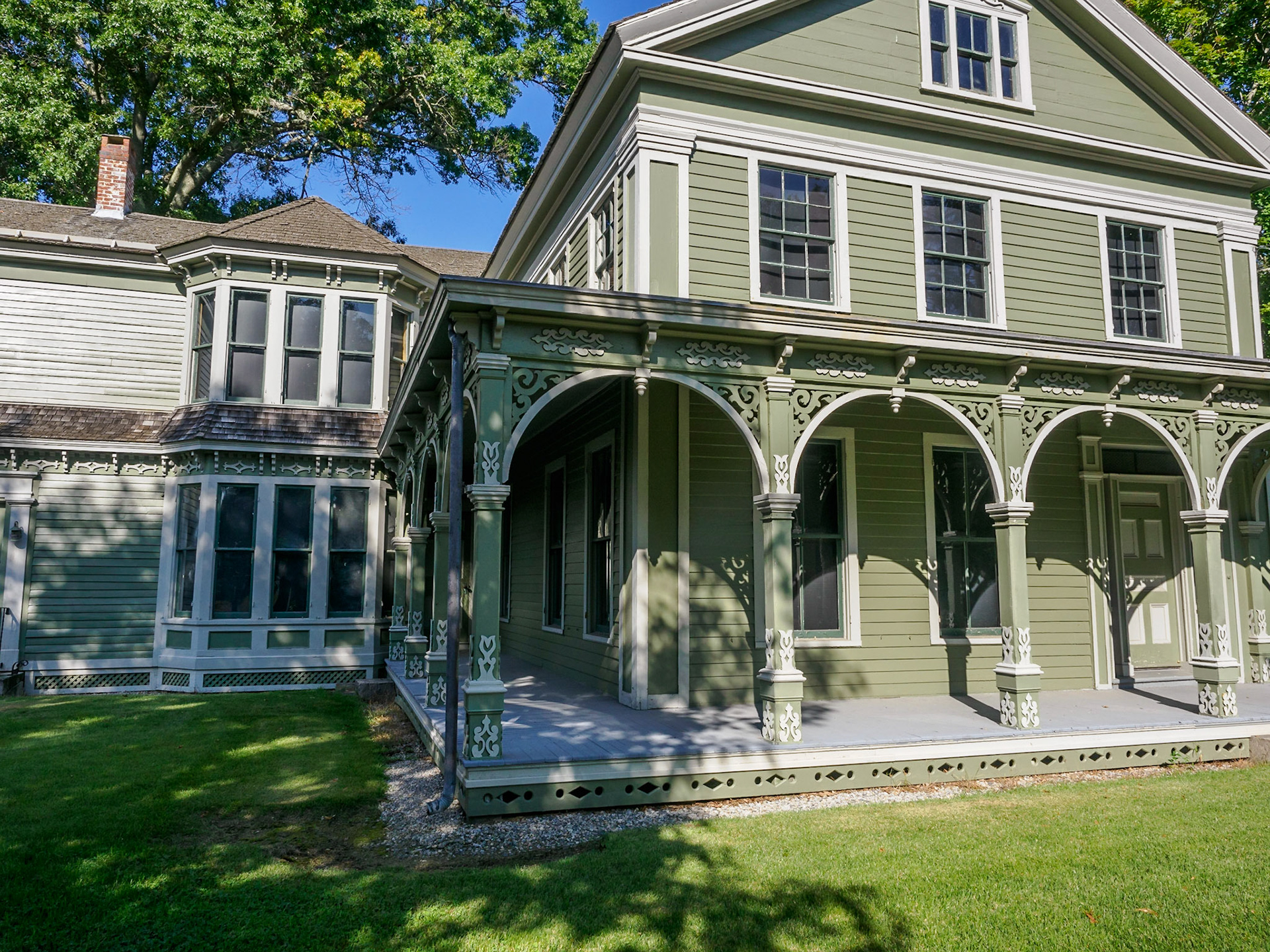
George Greenman House - George was the eldest of three brothers and founded the shipyard in Mystic. The house was built in 1839.
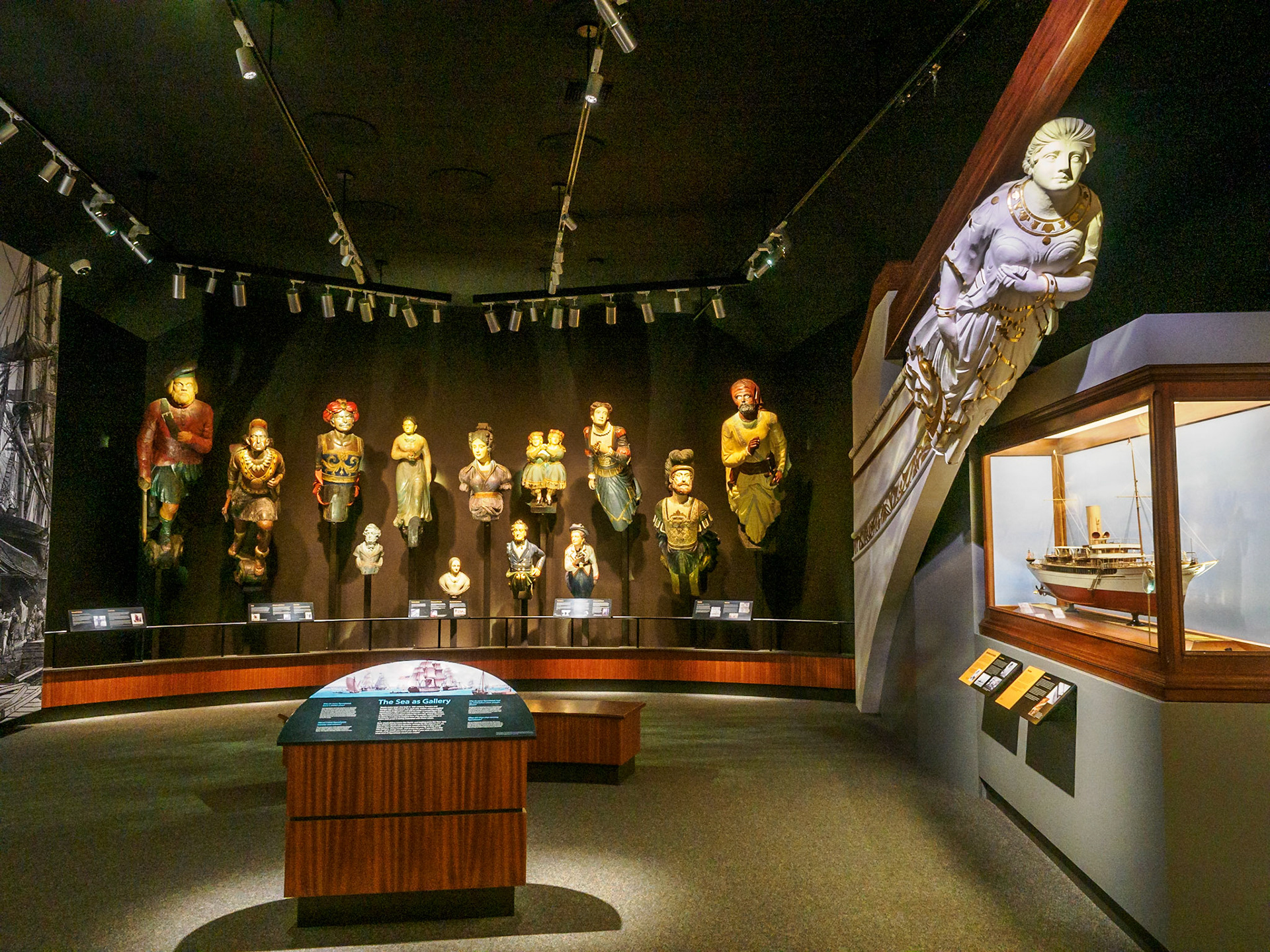
Ships' figureheads were an important form of public art in the 19th century. A figurehead gave a ship its personality.
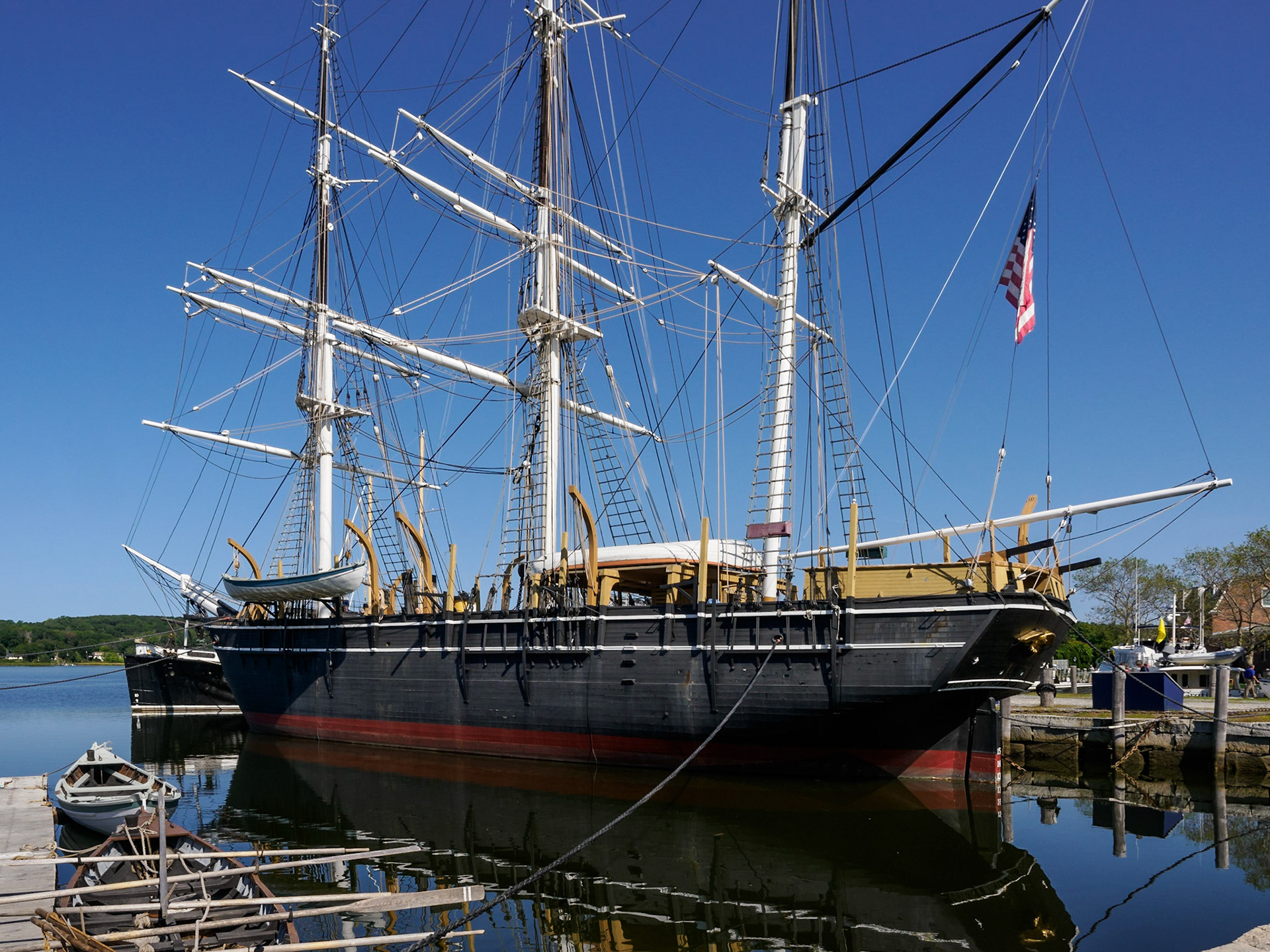
The 1841 whaleship Charles W. Morgan is America's oldest commercial ship still in existence.

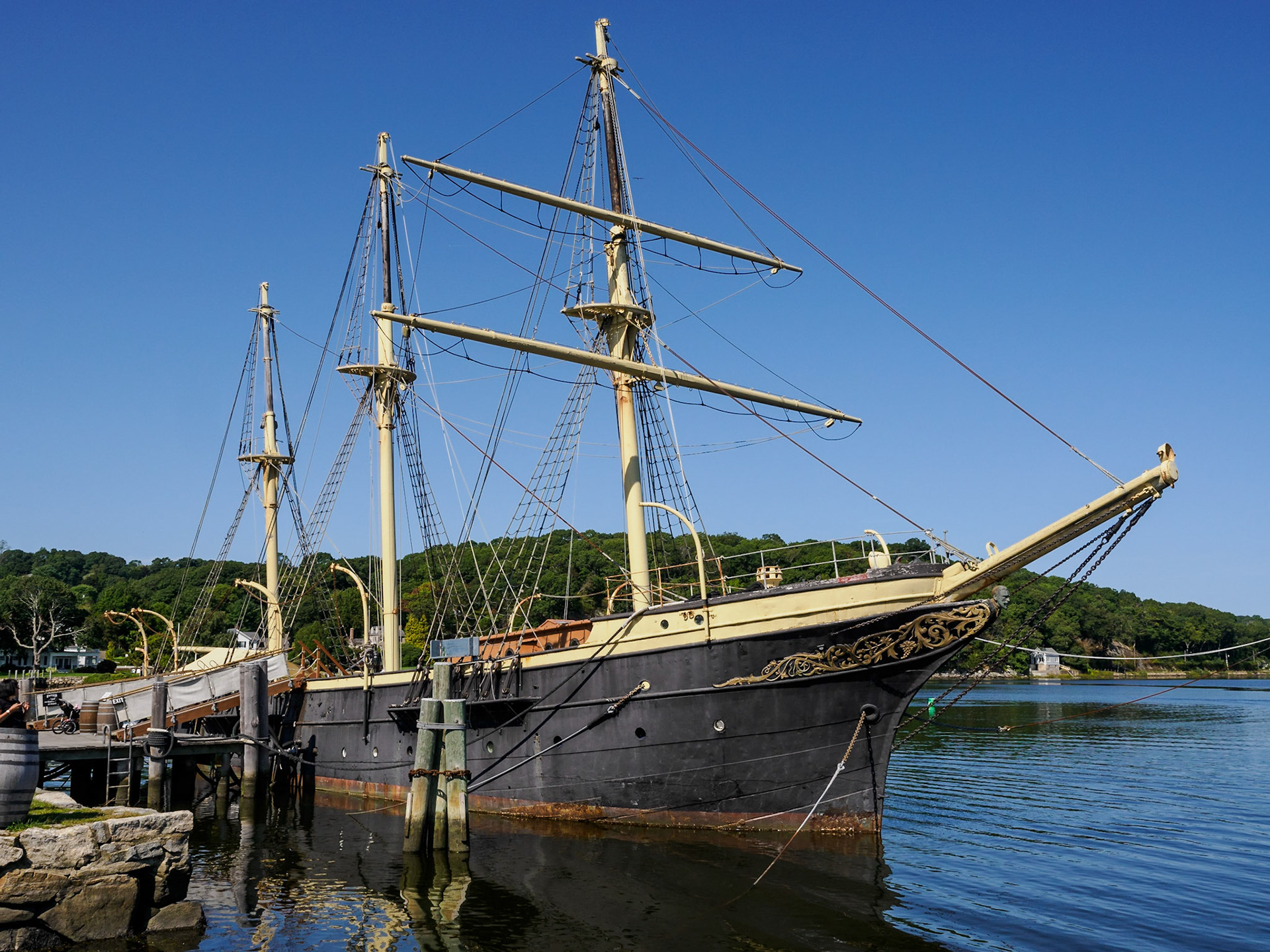
The Joseph Conrad is a training ship that was built in Copenhagen in 1882. The 111-foot vessel was designed to accommodate eighty boys in training for the Danish merchant service.
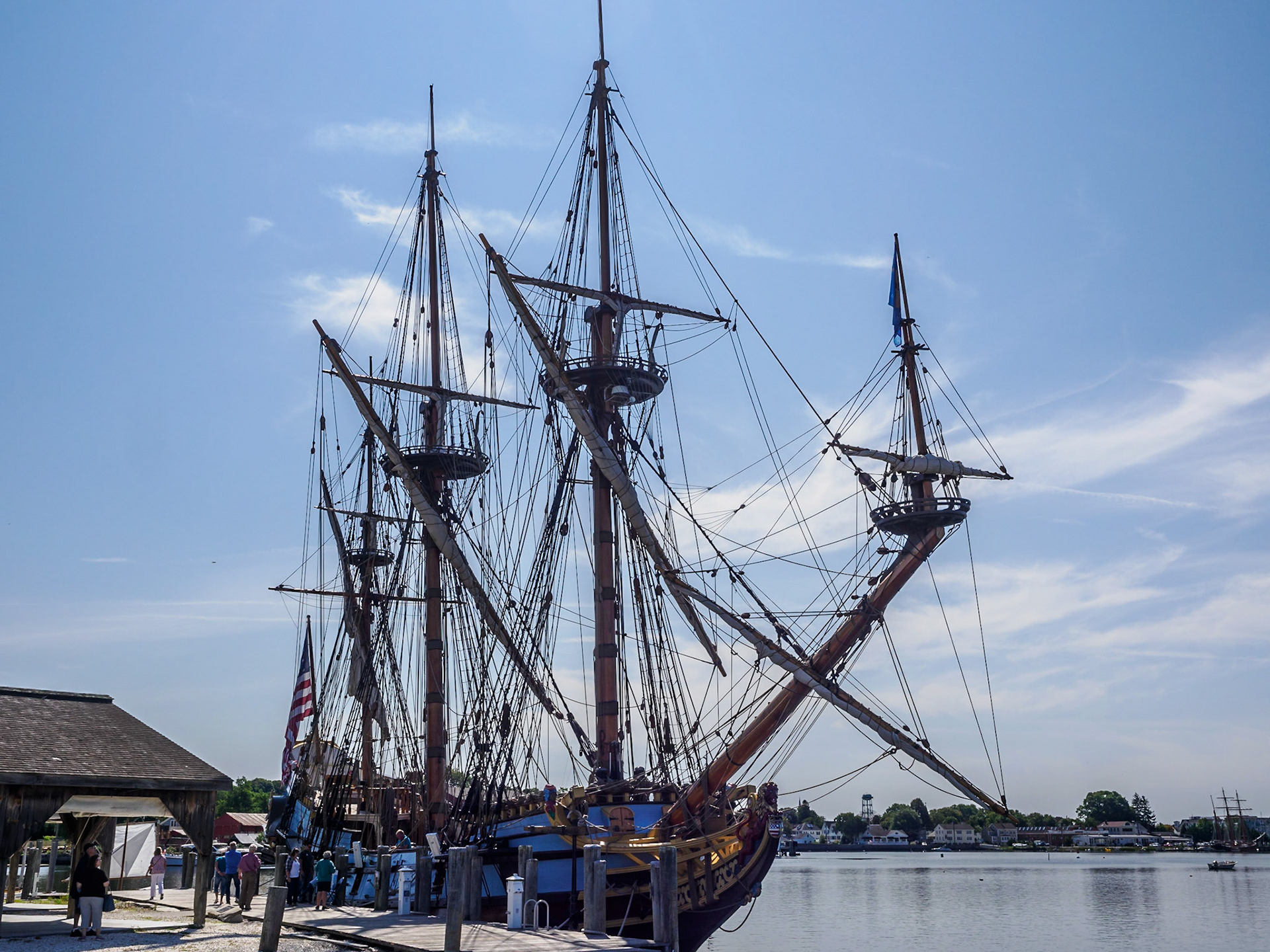
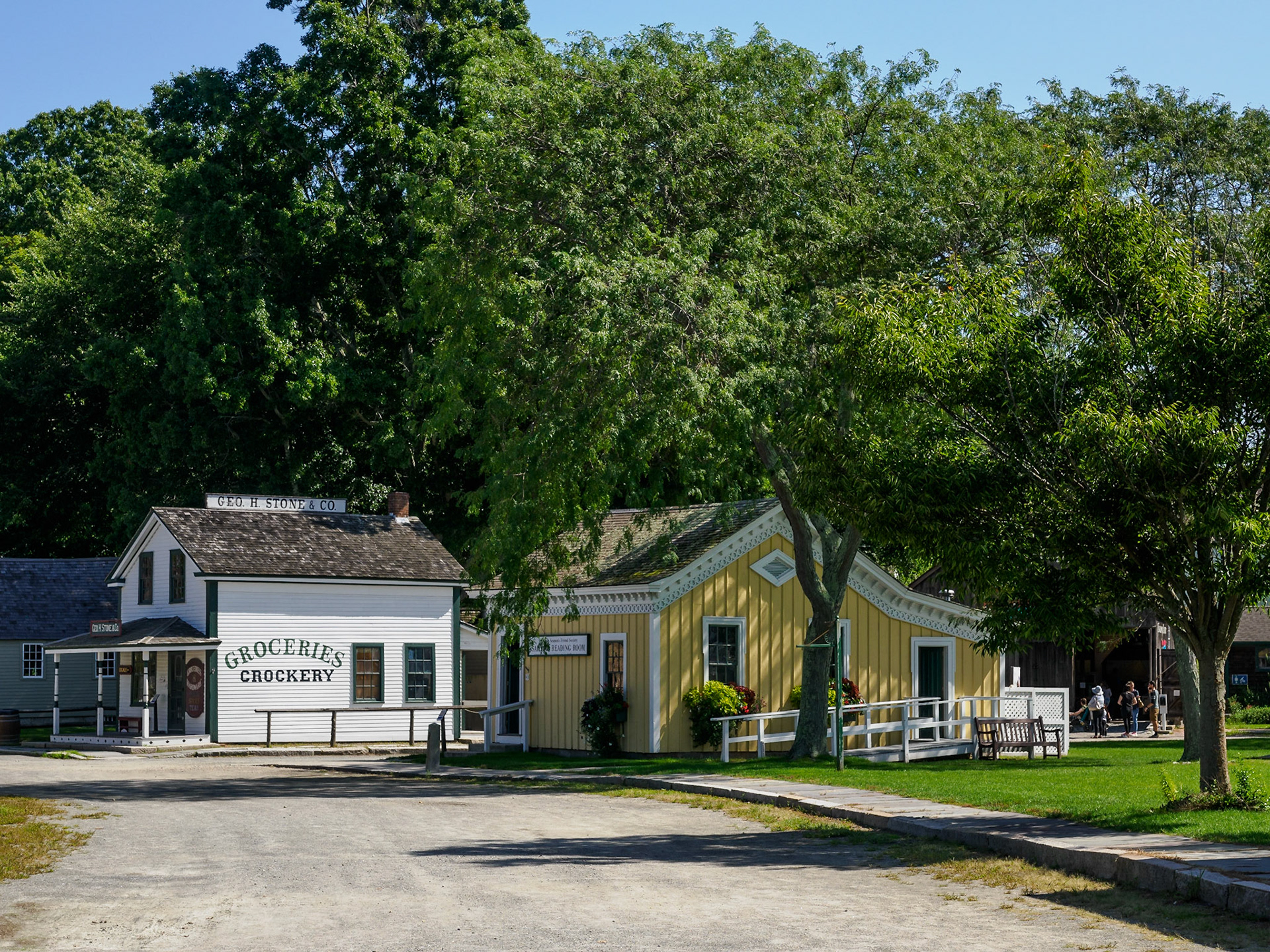
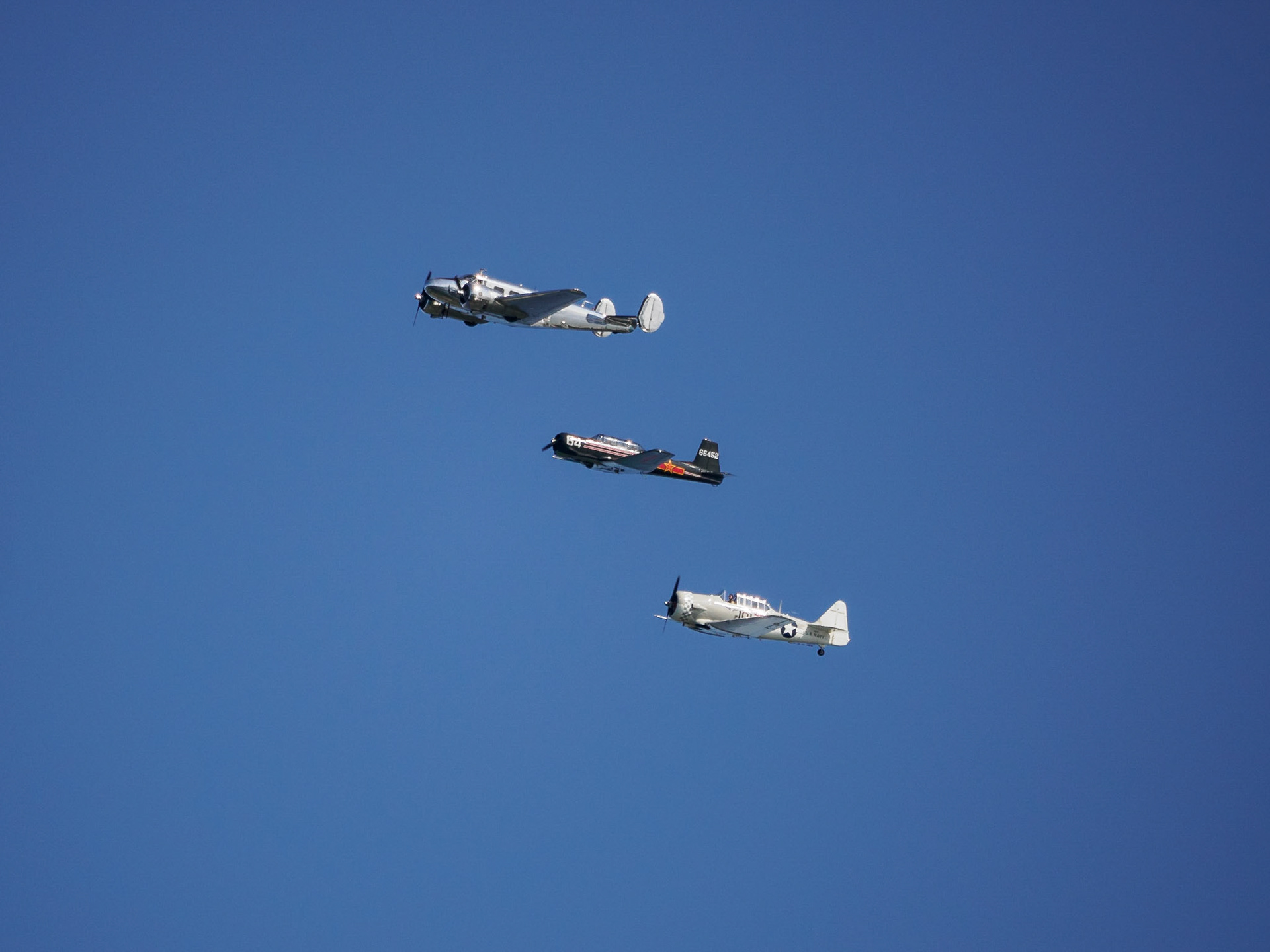
Vintage airplanes flying overhead near what used to be an old airfield (but which is now a wildlife refuge).

First Baptist Church of Wickford


Typical old home in Wickford Village, Rhode Island
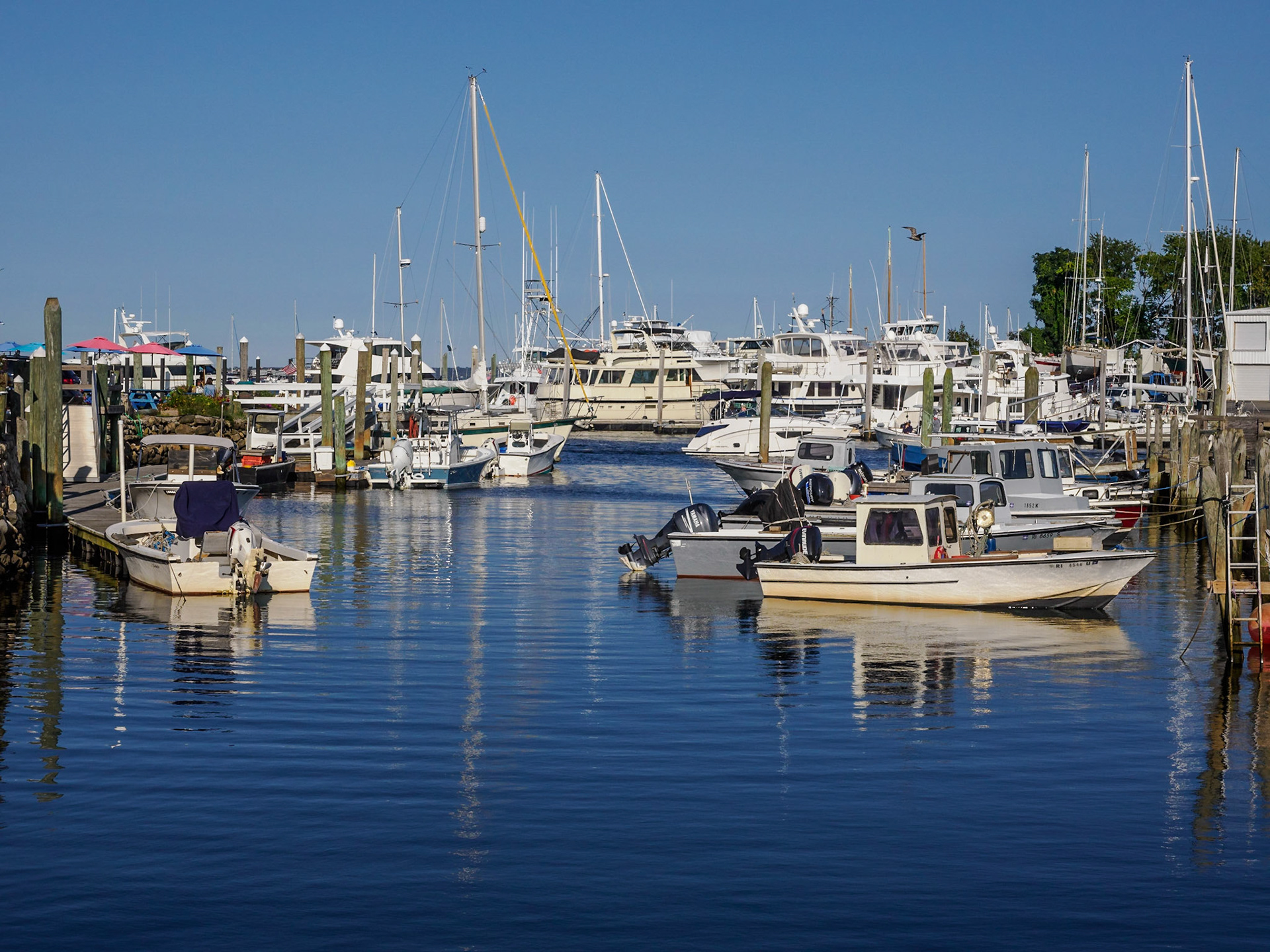
Gardner's Wharf—Starting in the mid-1800s Wickford moved from a major maritime industry to a busy port for access to Newport's elite summer mansions.
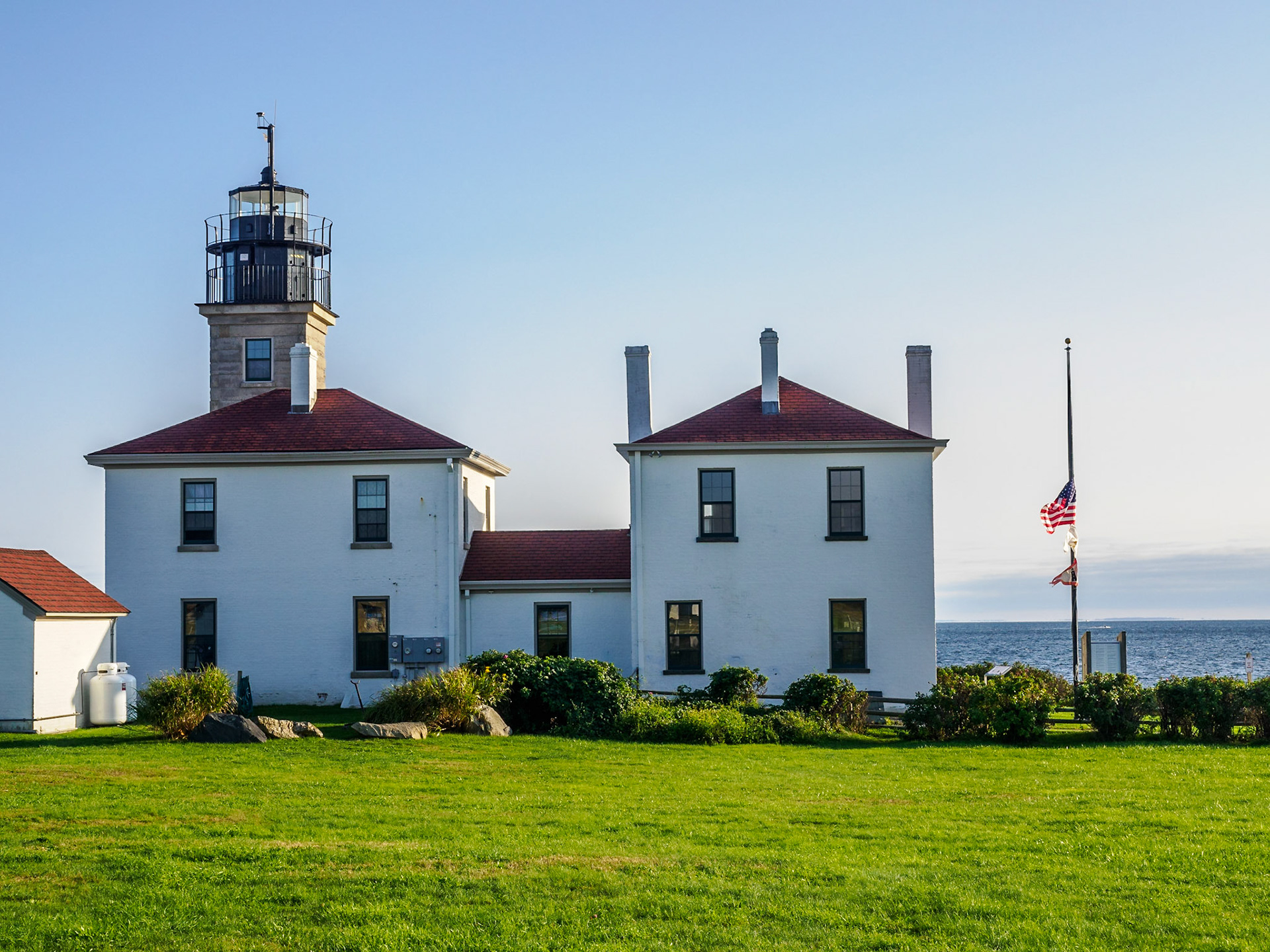
The Beavertail Lighthouse is located in Beavertail State Park

Old Slater Mill-the first water-powered mill in the U.S.
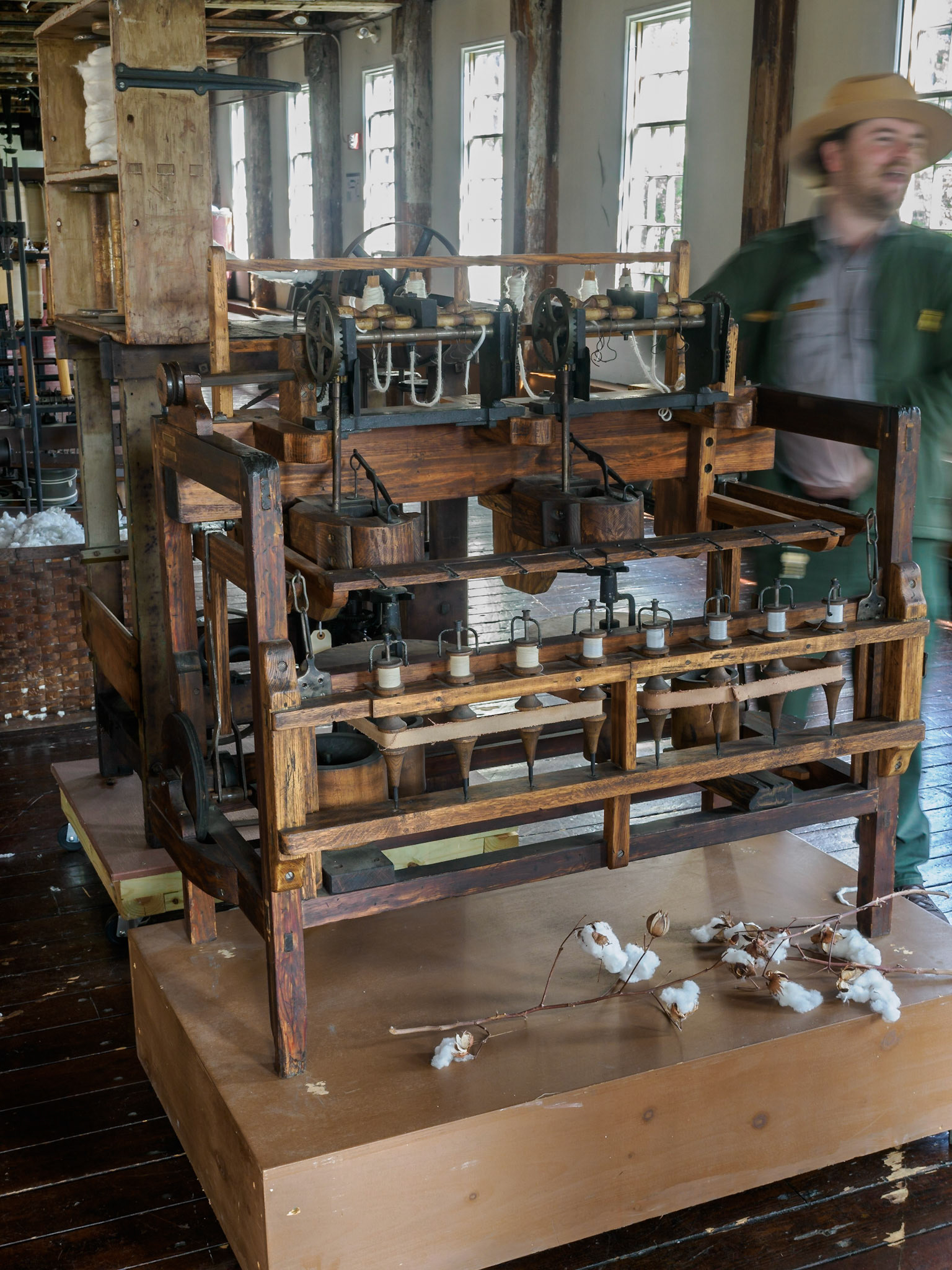
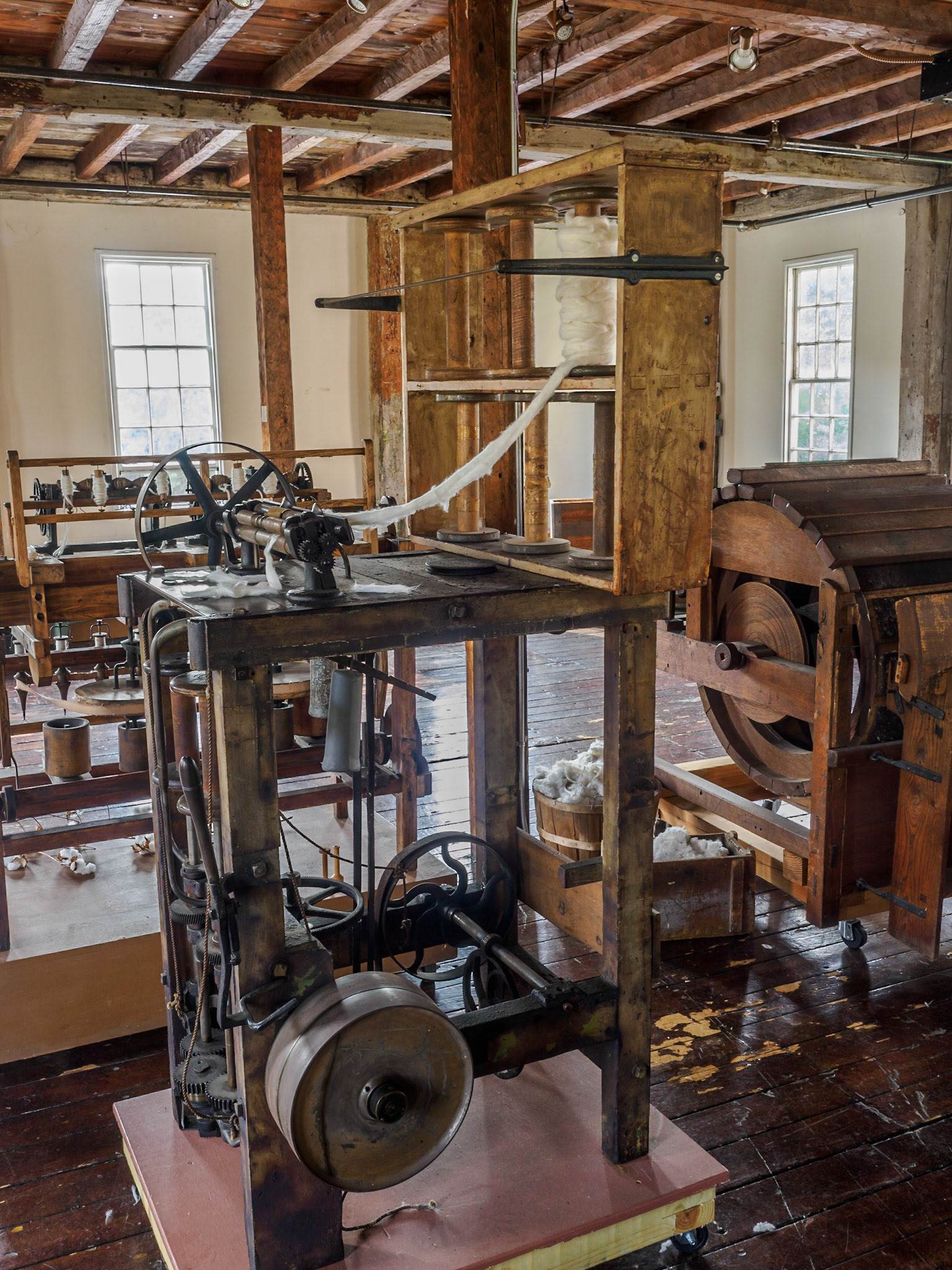
Yarn-spinning equipment
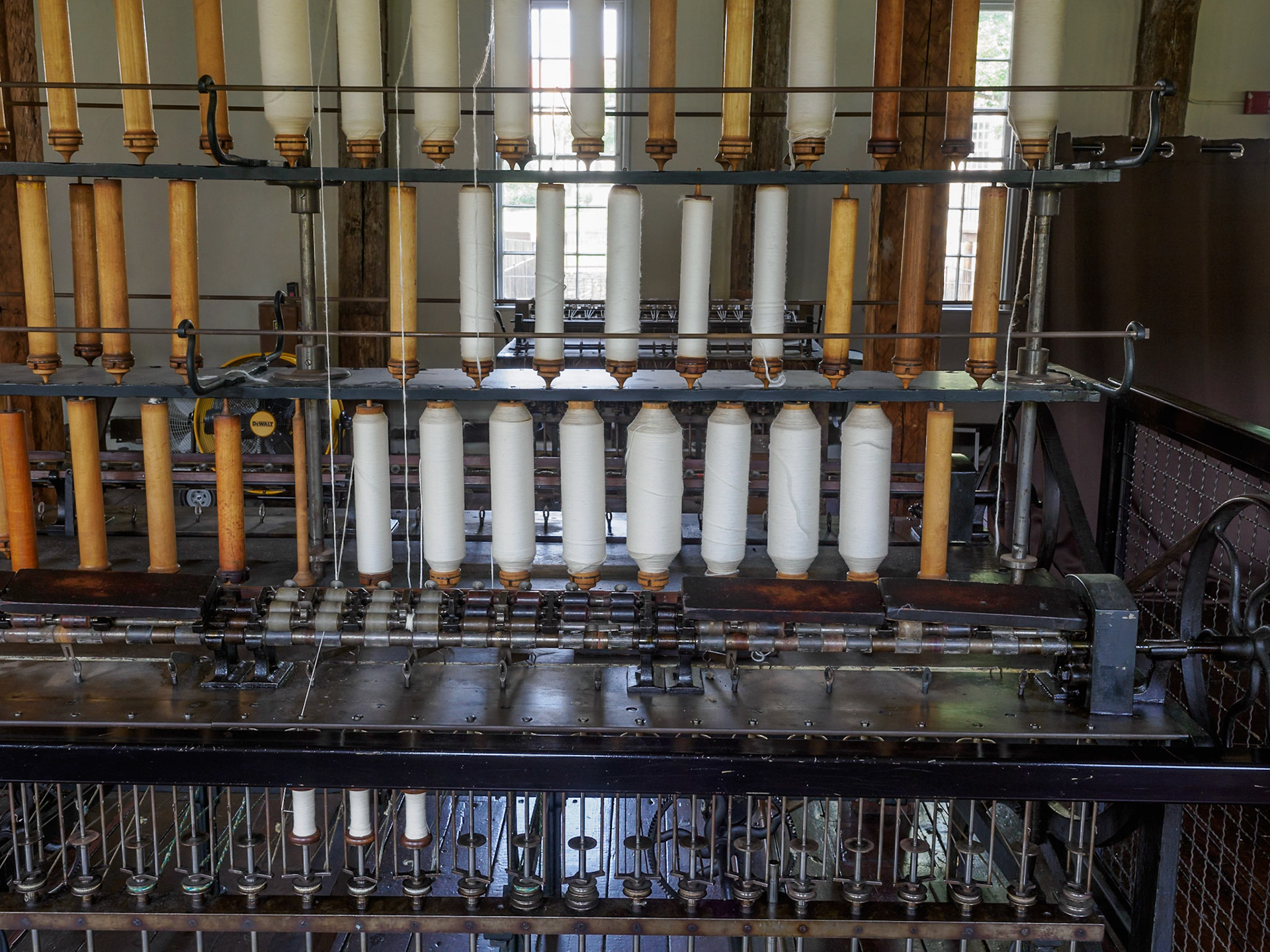
Yarn spinning equipment

The oldest Baptist church congregation in the U.S. was founded by Roger Williams in 1638. Worshiping first in private houses and later in meeting houses, the Baptists erected this building in 1775. The largest surviving wooden structure from Colonial America, it combines the simple hall of a traditional New England meeting house with the most fashionable English architectural features, such as the steeple, modeled after a version of the one at St. Martin in the Fields (1724), on Trafalgar Square in London.
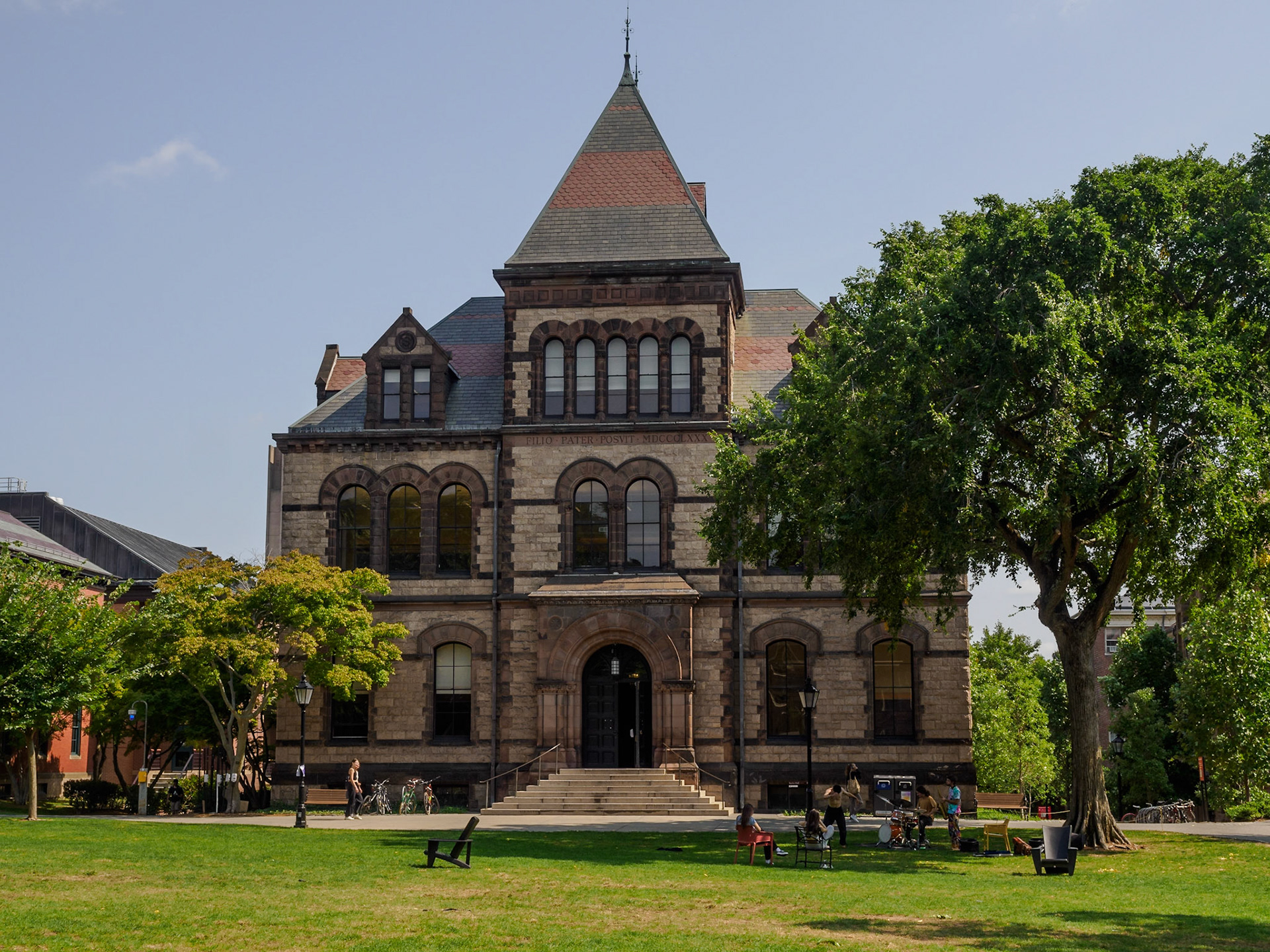
Sayles Hall

Gate into Brown University

University Hall
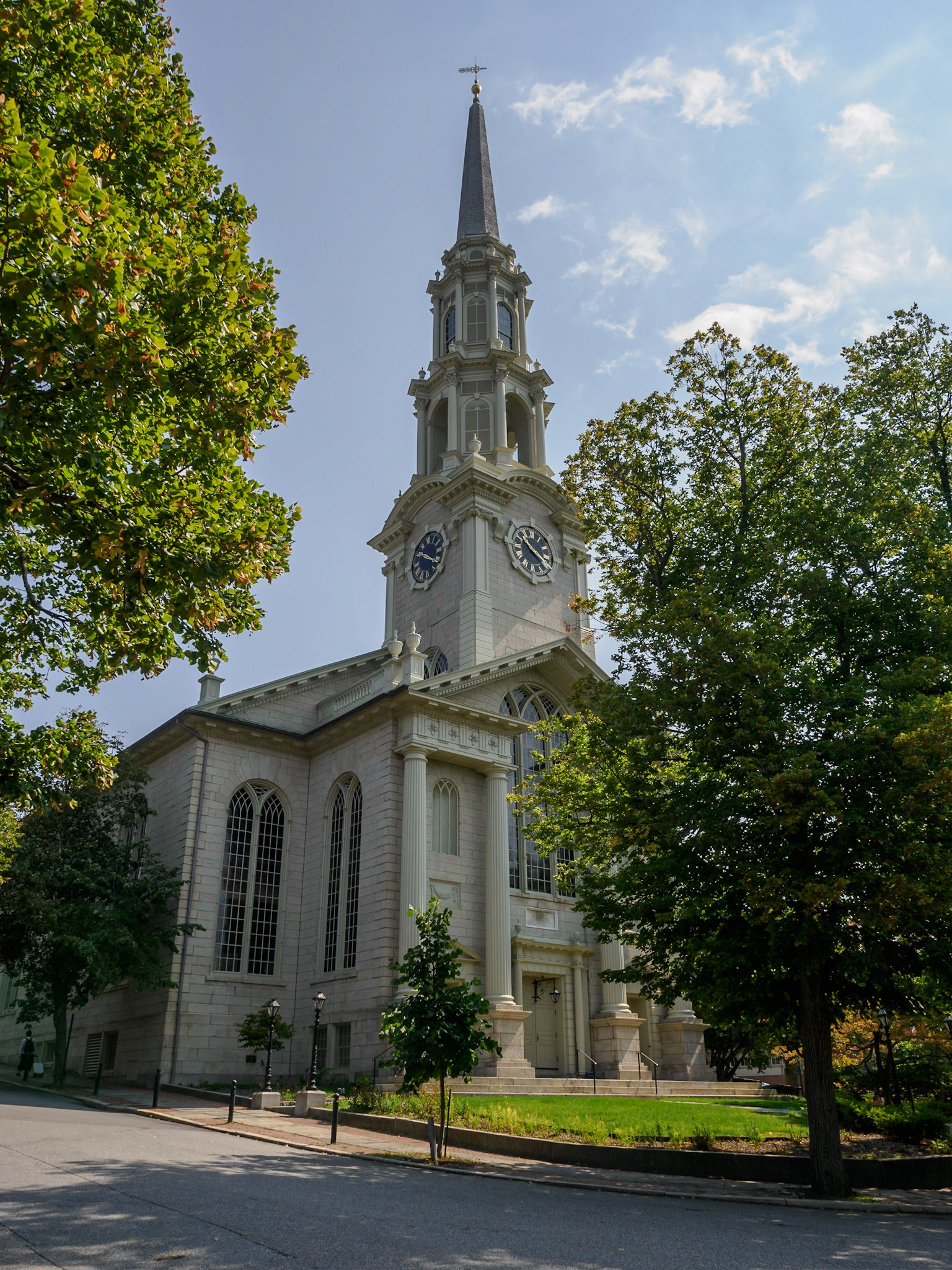
This church, built in 1818, was designed by Providence architect John Holden Greene. The Federal-style building has classical arches and urns combined with soaring pointed Gothic style windows with delicate tracery decoration. Originally the First Congregational Church, the congregation became associated with the Unitarian movement and eventually changed its name.
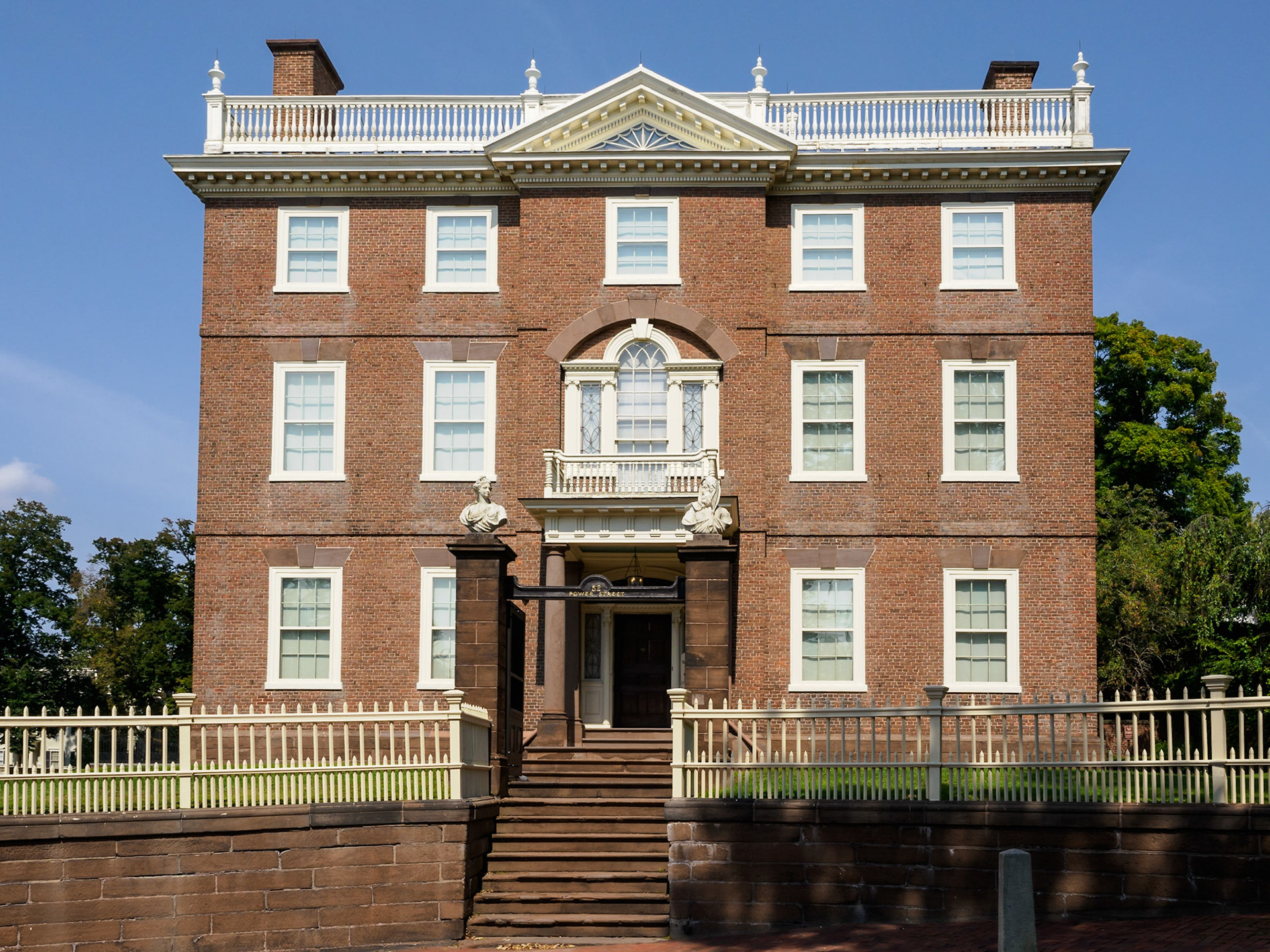
Providence resident John Brown became wealthy from his family’s shipping business, which included privateering, the Triangular Slave Trade and the China Trade. The John Brown House (and now Museum), one of the grandest in the United States, played host to presidents George Washington, Thomas Jefferson, and John Quincy Adams.
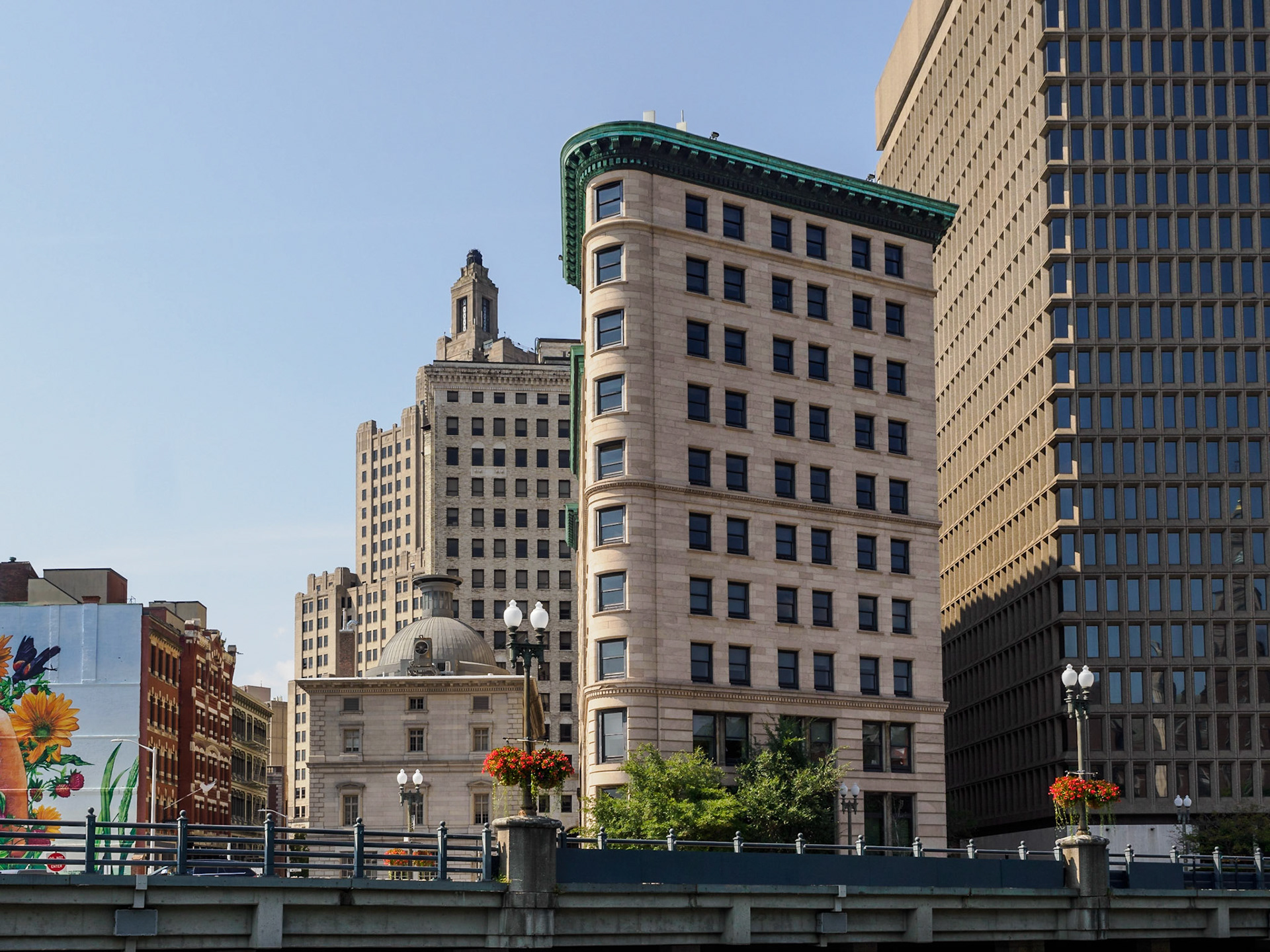
FBI Building

The majestic domed State House, clad in white Georgia marble, was built (1895-1904) at the high point of Rhode Island's industrial prosperity. Inside is the Colonial Charter granted in 1663 by King Charles II of England. The Charter was the first signed by a monarch to guarantee religious liberty. Atop the State House dome stands a statue of Rhode Island's Independent Man, representing the spirit of freedom of thought and action.
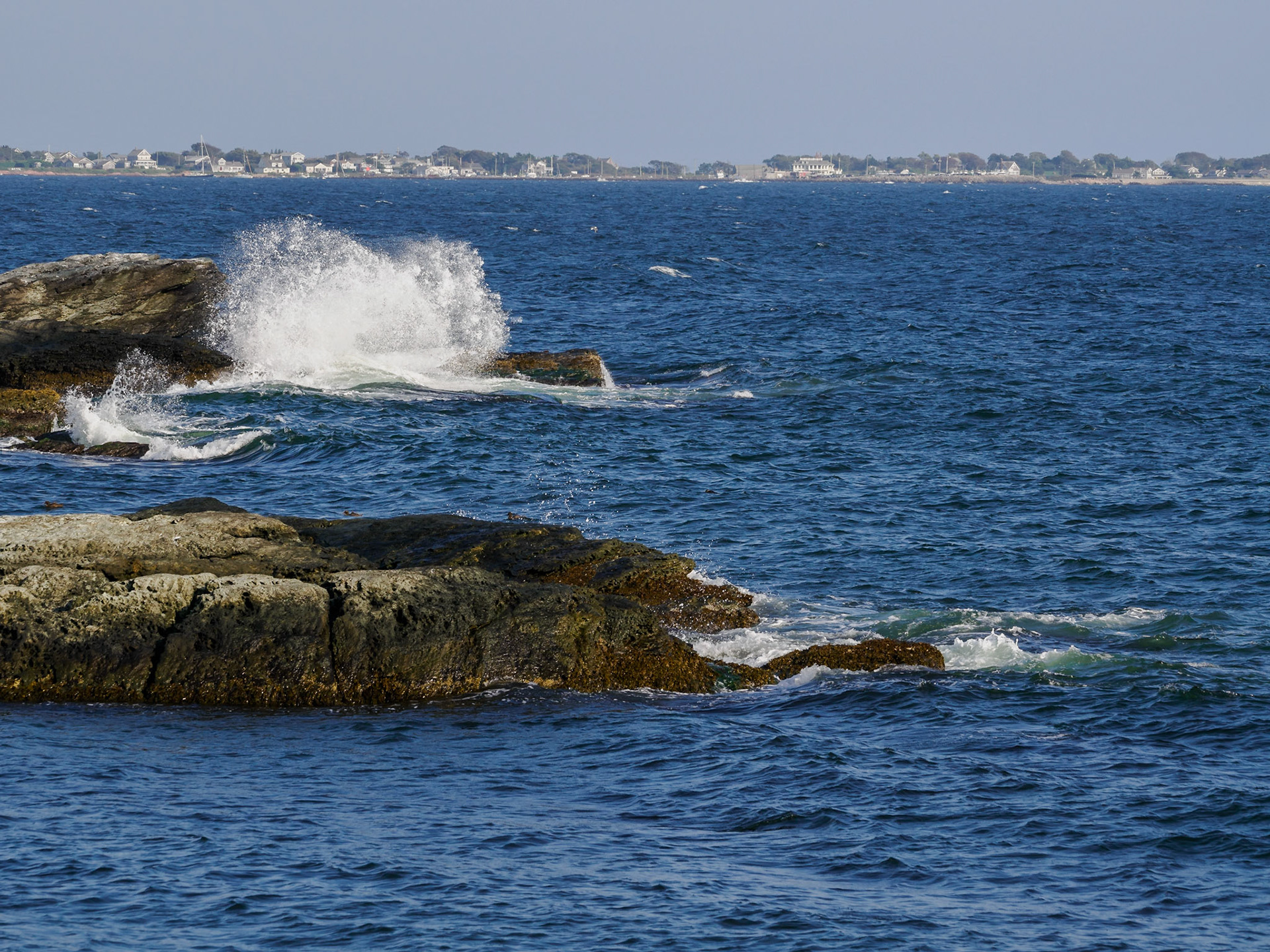
Sachuest Point National Wildlife Refuge
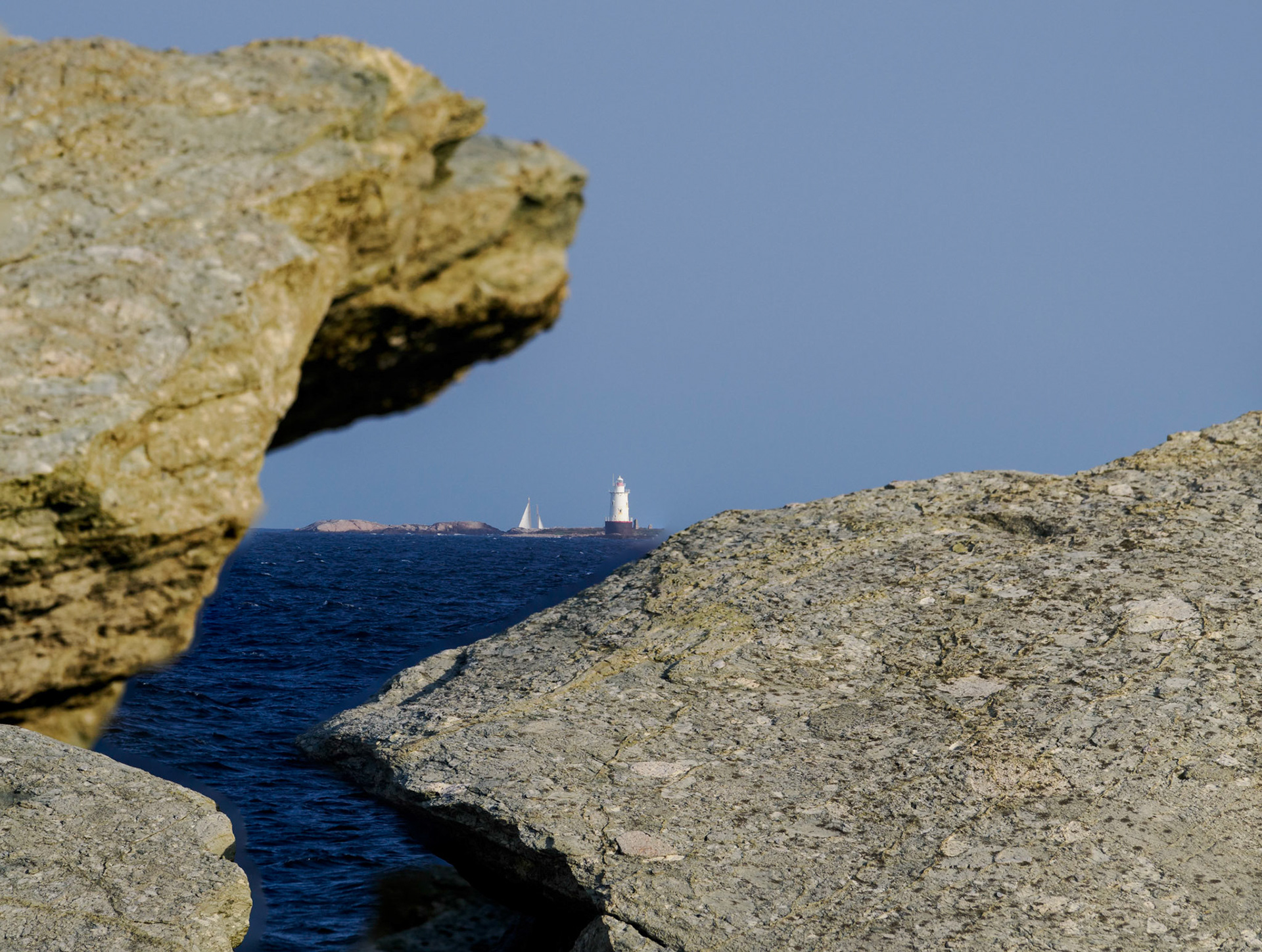
Sakonnet Lighthouse

She came, she saw, she left

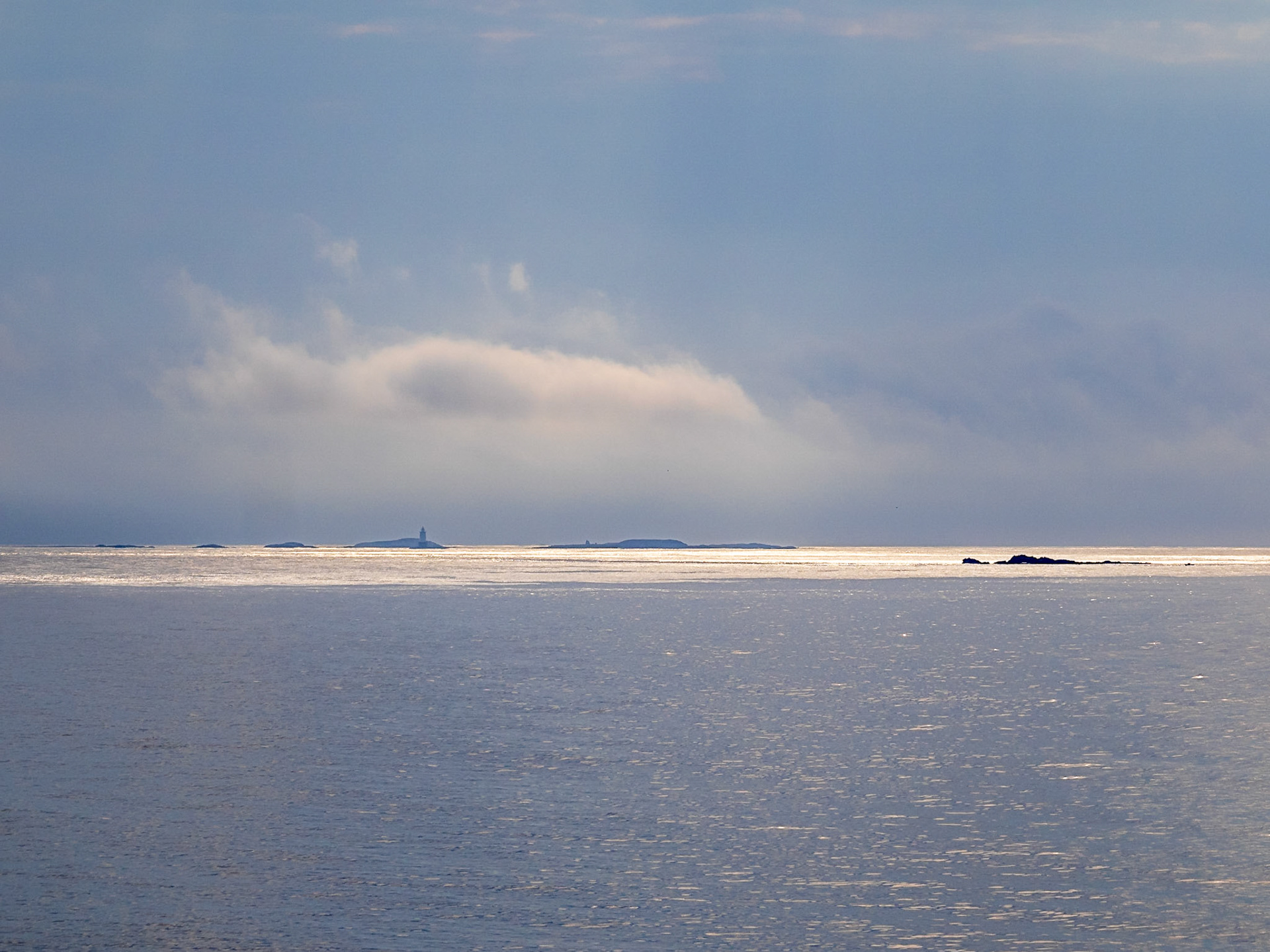
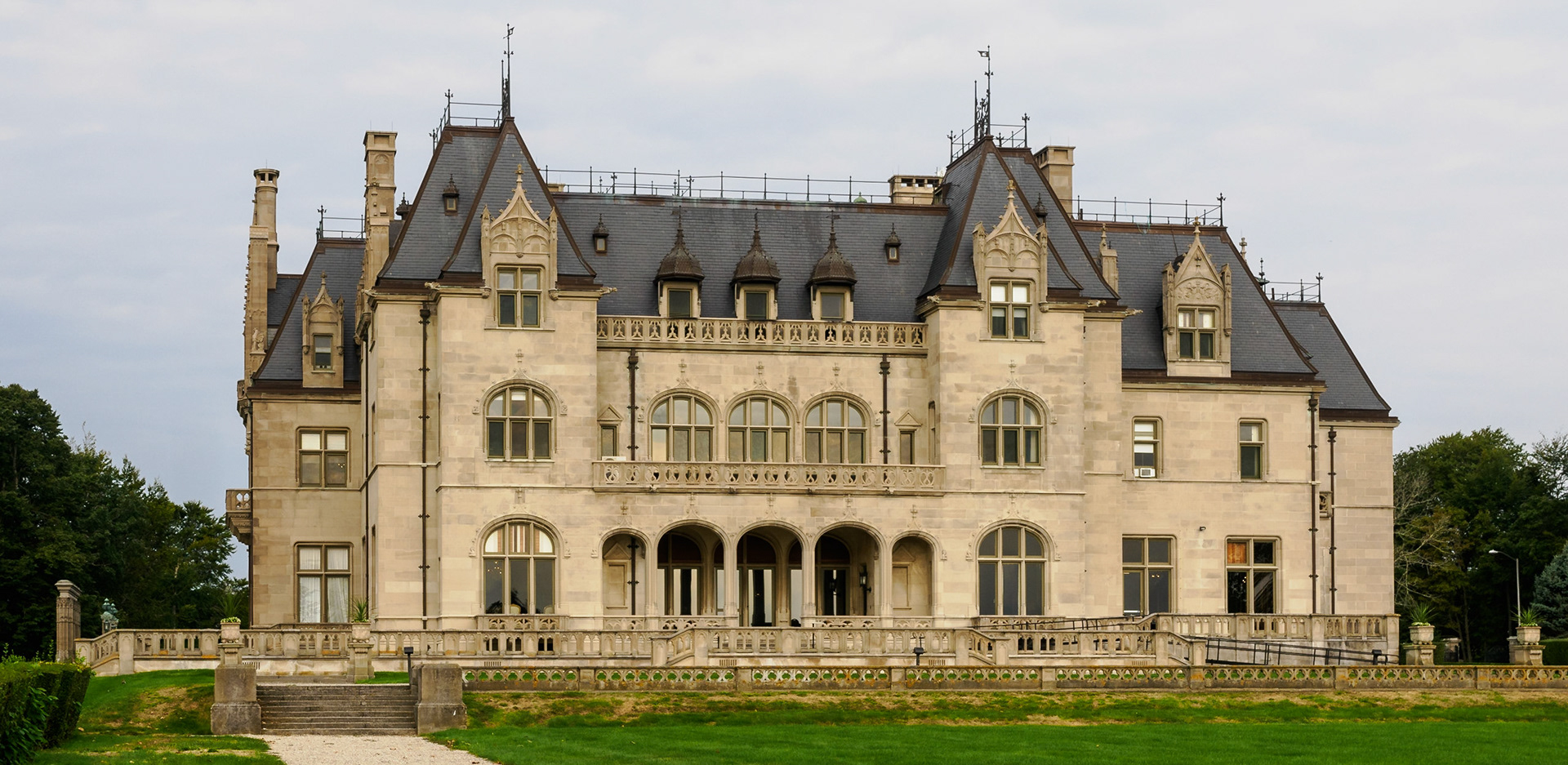
Ochre Court is now part of Salve Regina University. It was gifted to the school in 1947.
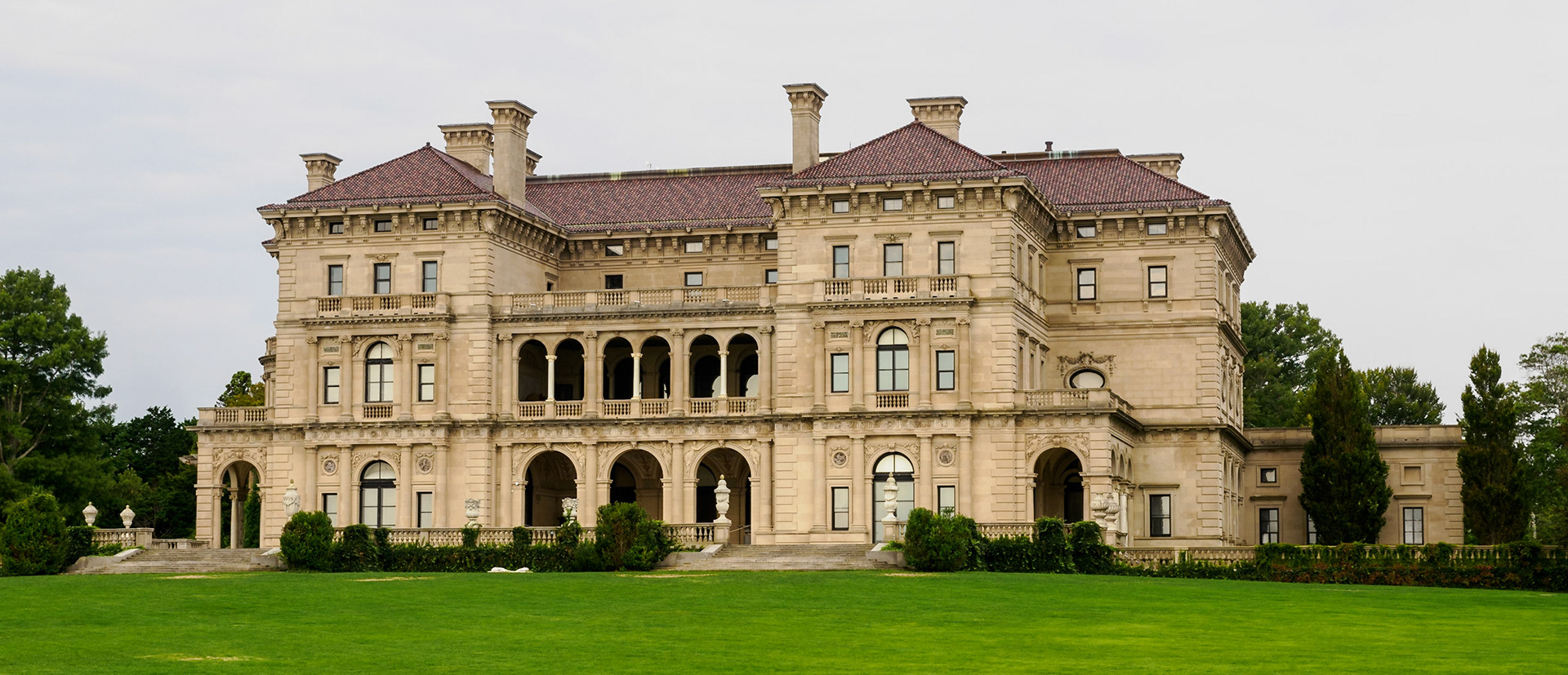
The Breakers built by Cornelius Vanderbilt II

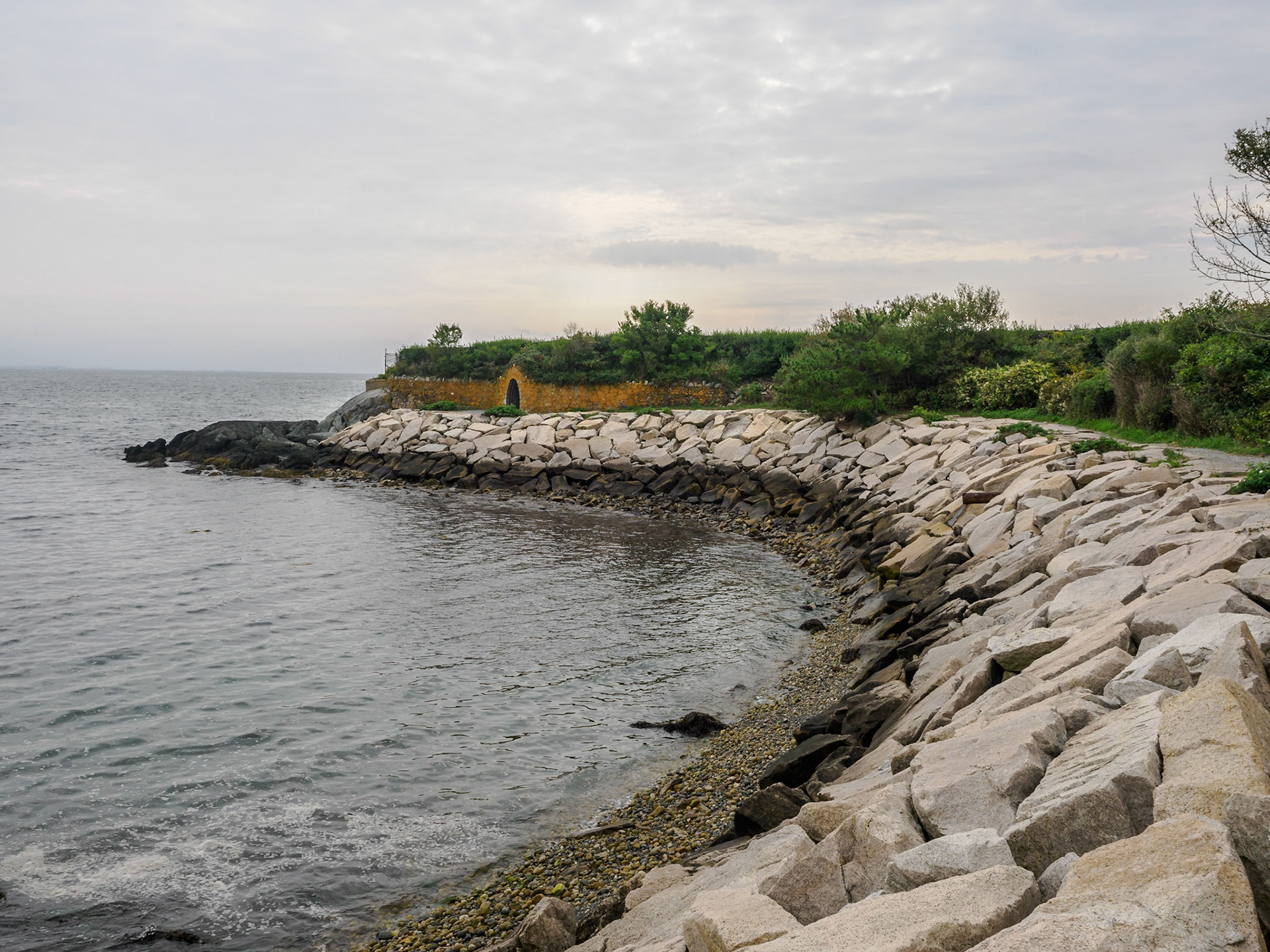

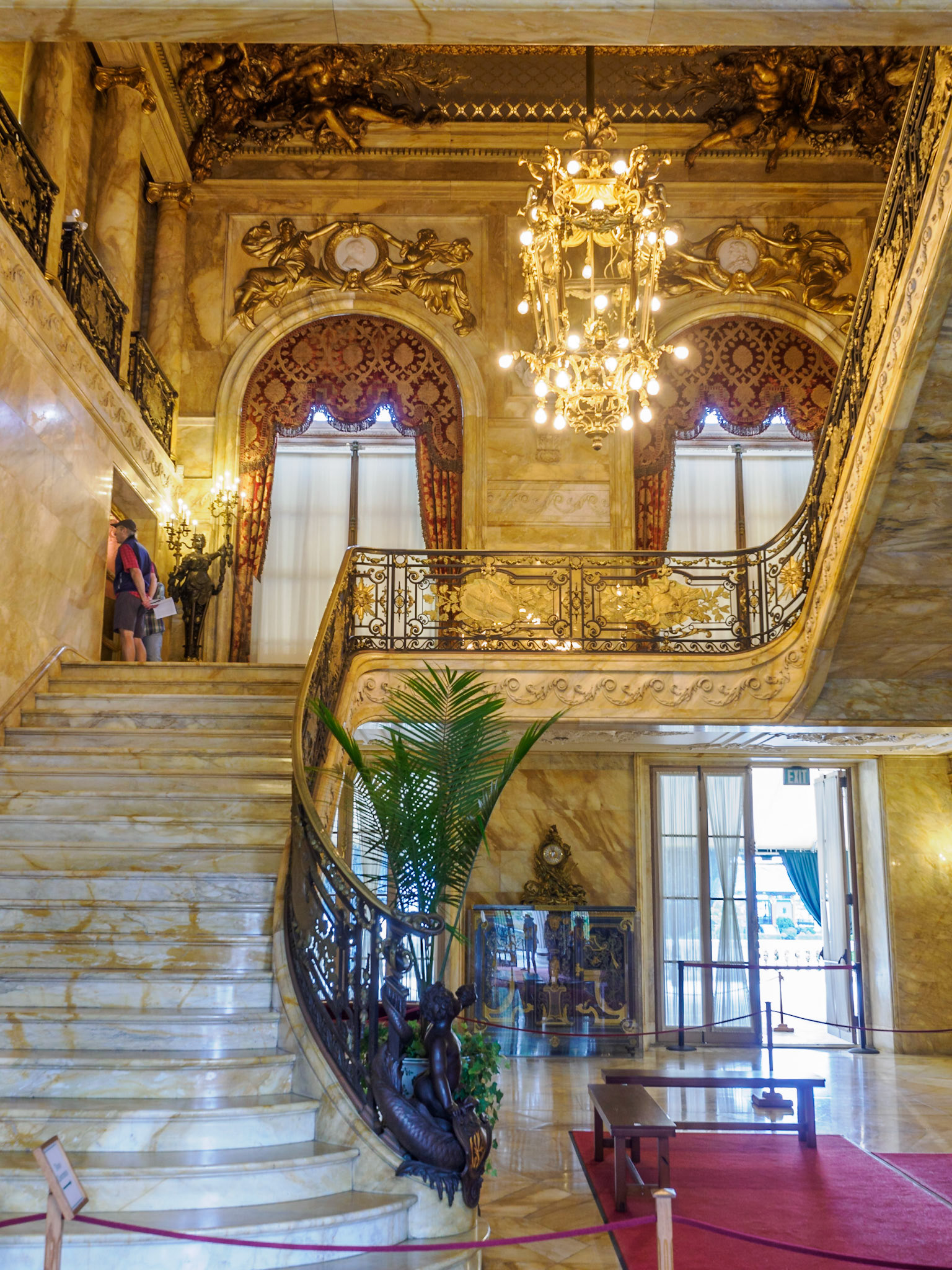
The central staircase
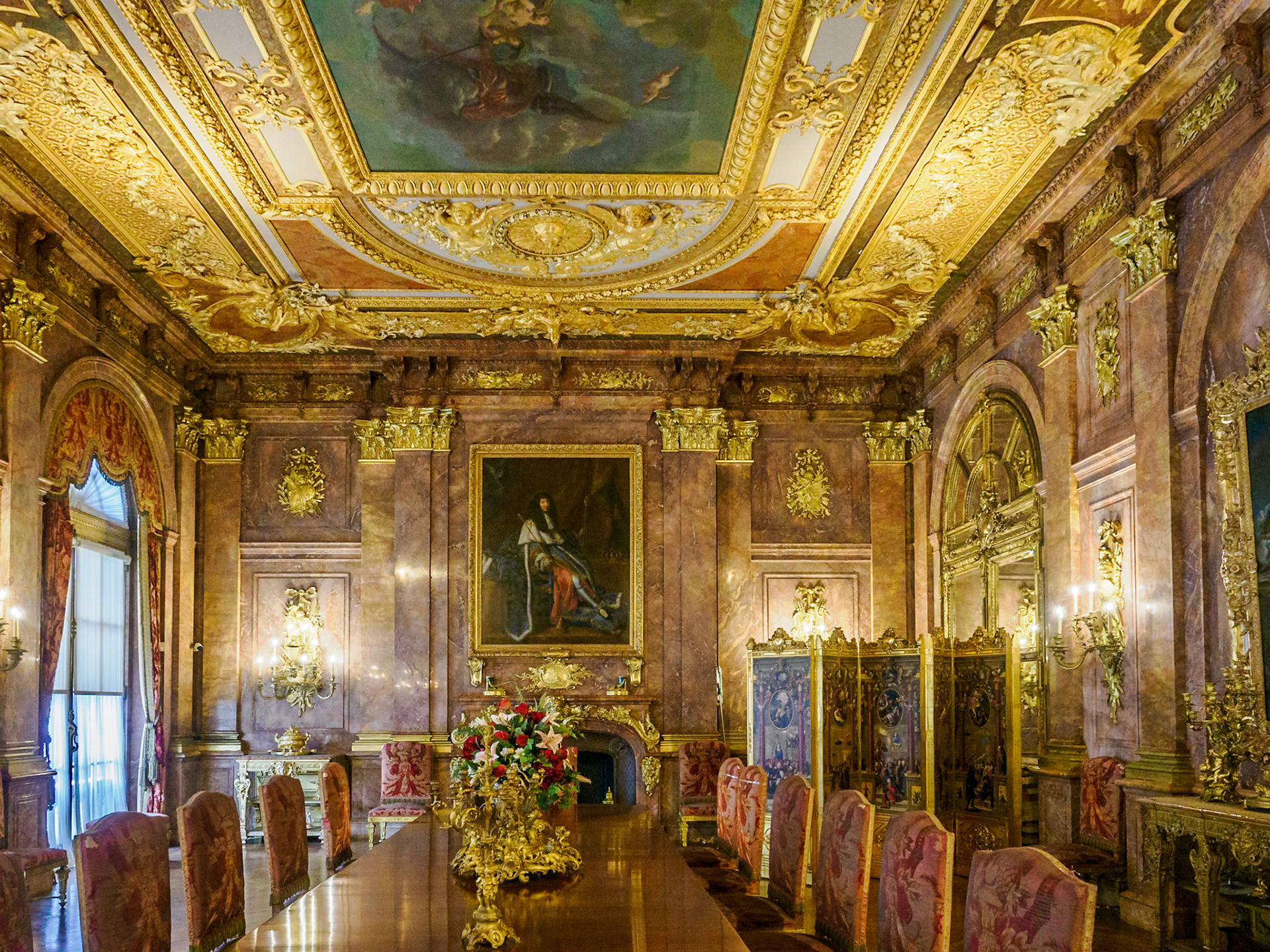
The walls of the dining room were covered in rose-colored marble from Algeria. The chairs were made of bronze covered in gold. Each weighed 75 pounds.

The Gothic Room served as a small private museum. The room was designed and executed in Paris, taken apart, shipped to Newport and put back together.
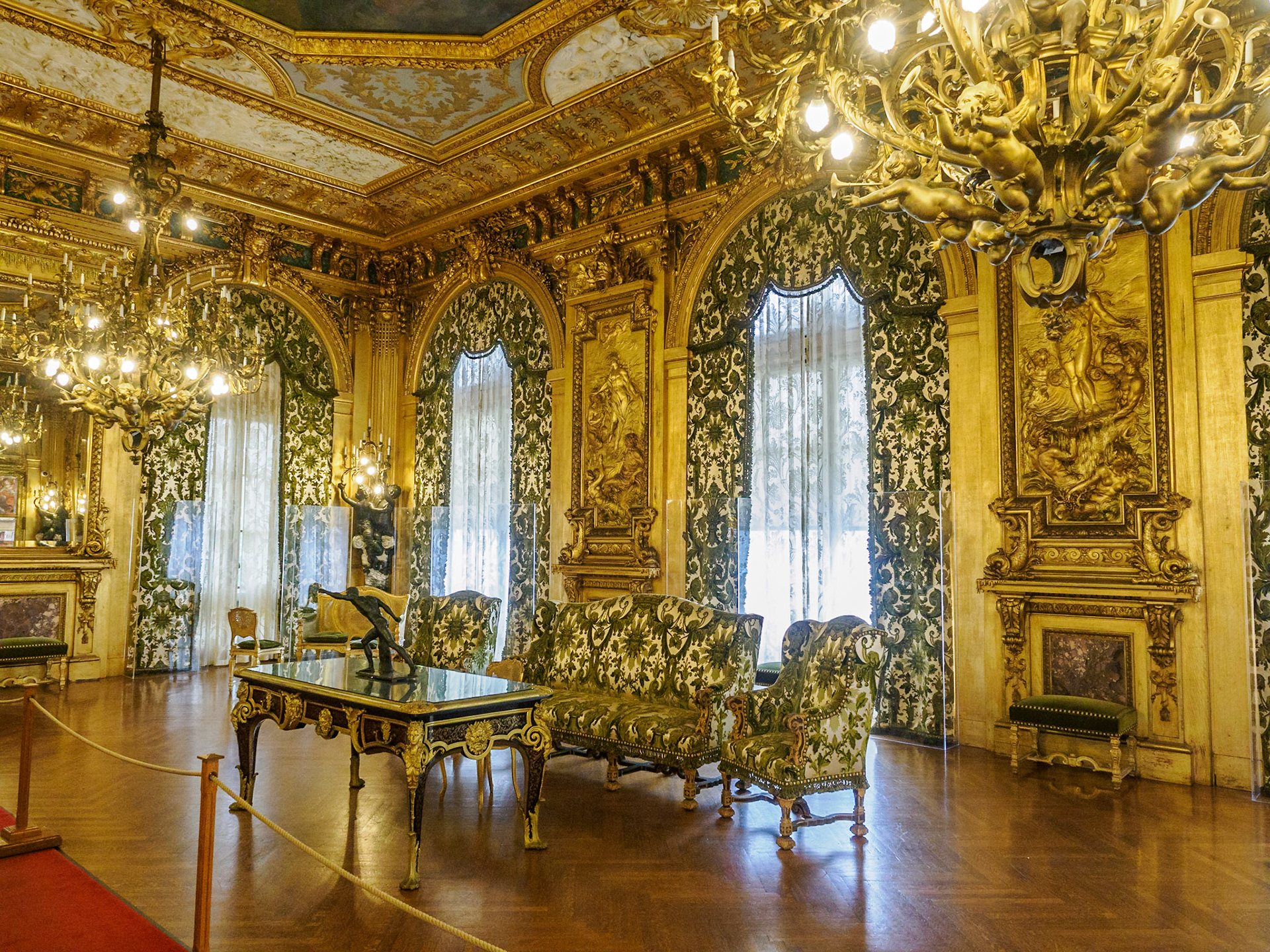
The Grand Salon is entirely covered in 22-carat gold. In 1895, at a time when the rest of Newport was lit by flickering gaslights, the Marble House was ablaze in electric lights.
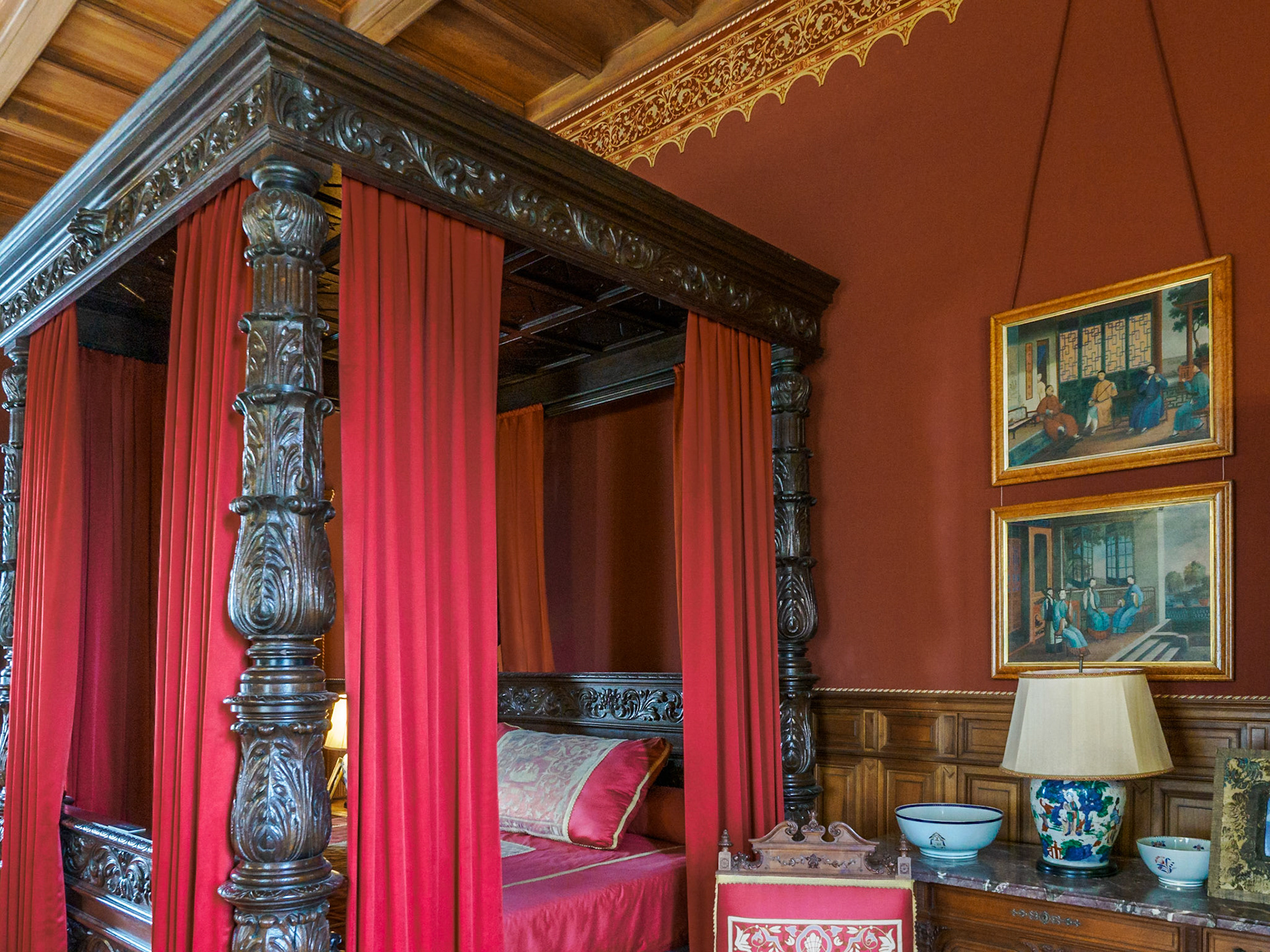
The bedroom of Consuelo, the Vanderbilt's daughter, was designed by her mother, Alva.
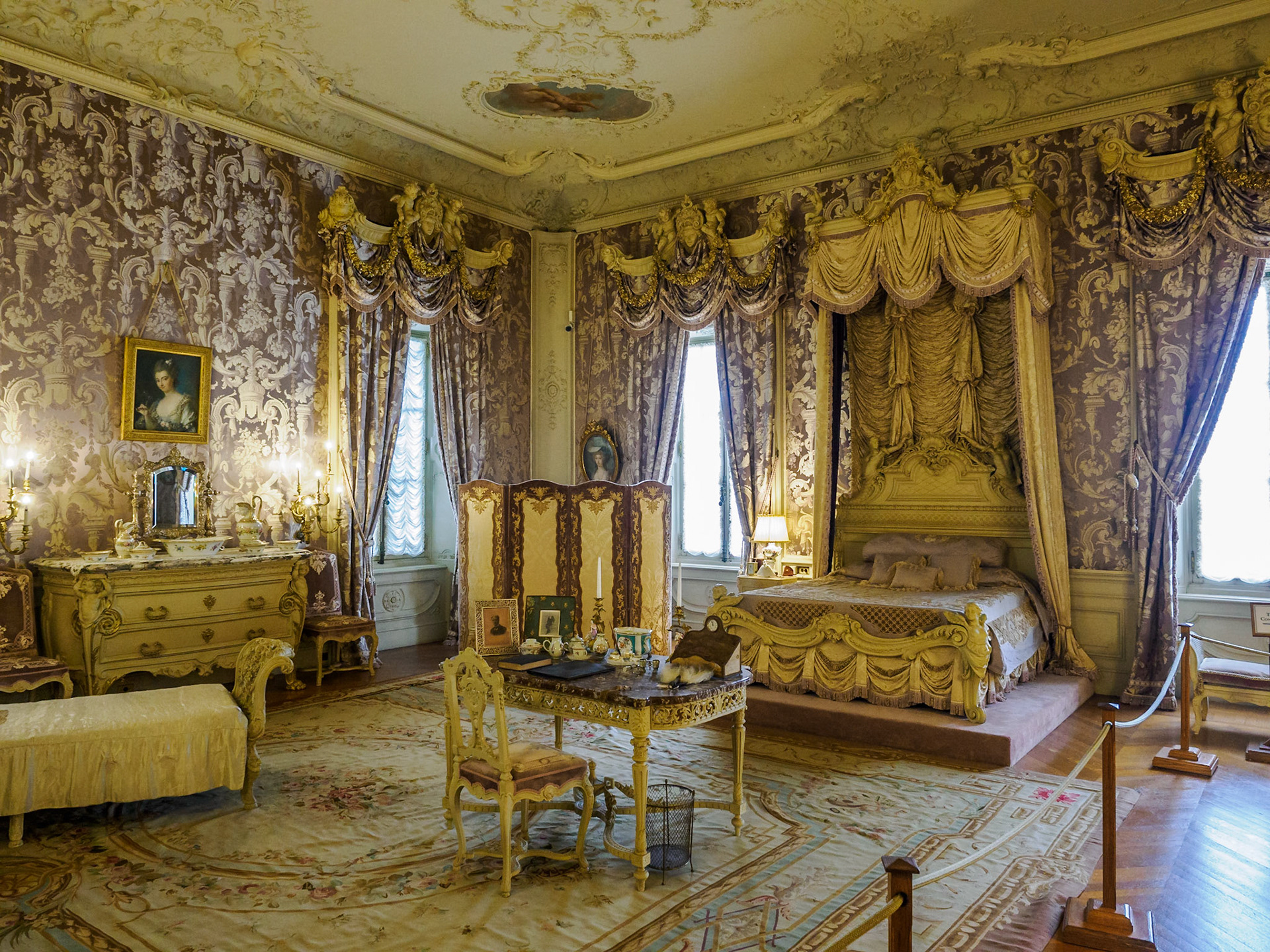
Alva Vanderbilt created a lilac bedroom for herself. It is decorated with garlands, nymphs, and cherubs. Her bed sits on a platform, like a throne.
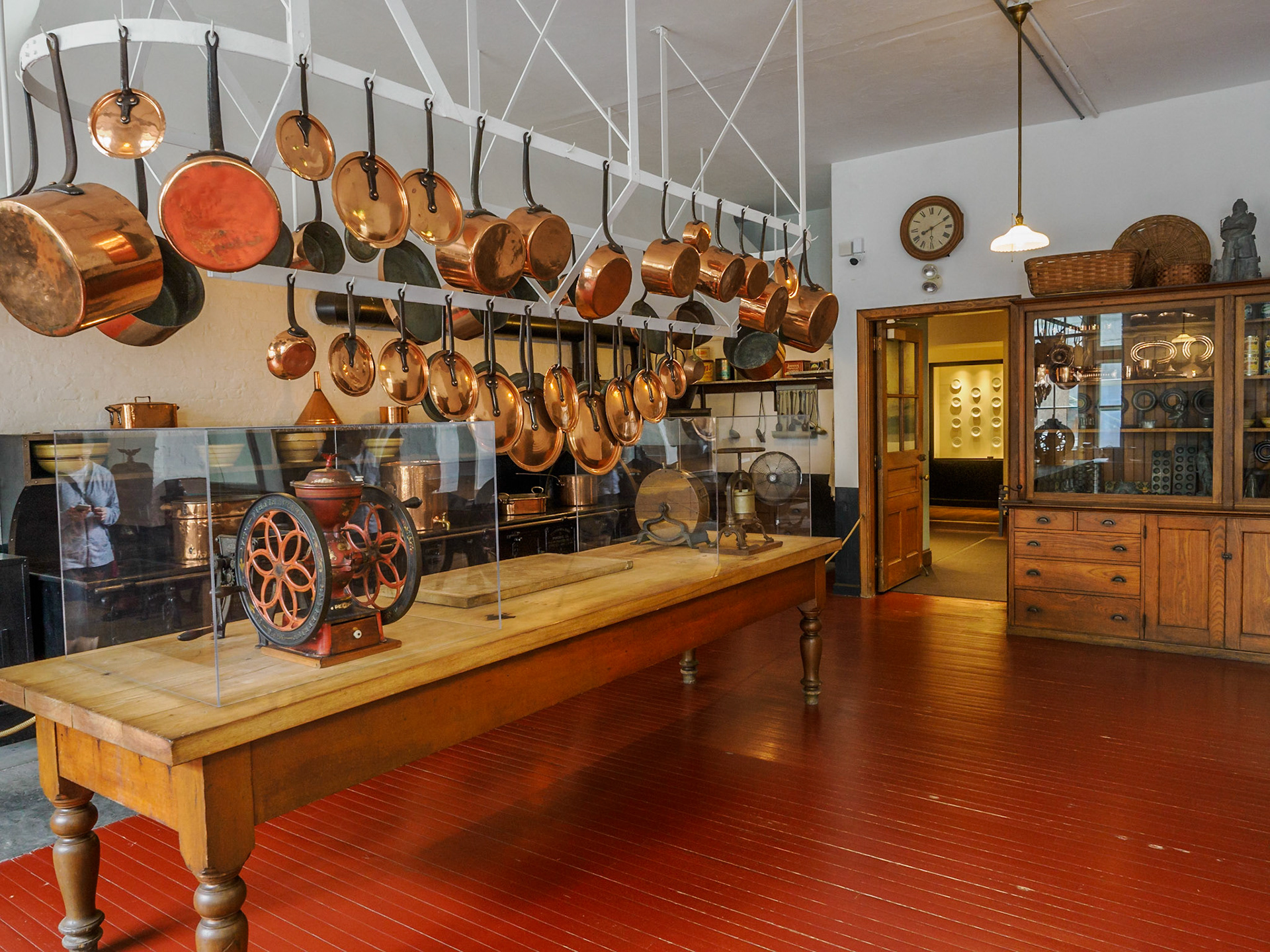
The Marble House's kitchen was equipped to feed hundreds of guests at once. The huge cast iron stove burned 30 tons of coal each summer season. An array of copper pots and pans hang at the ready.
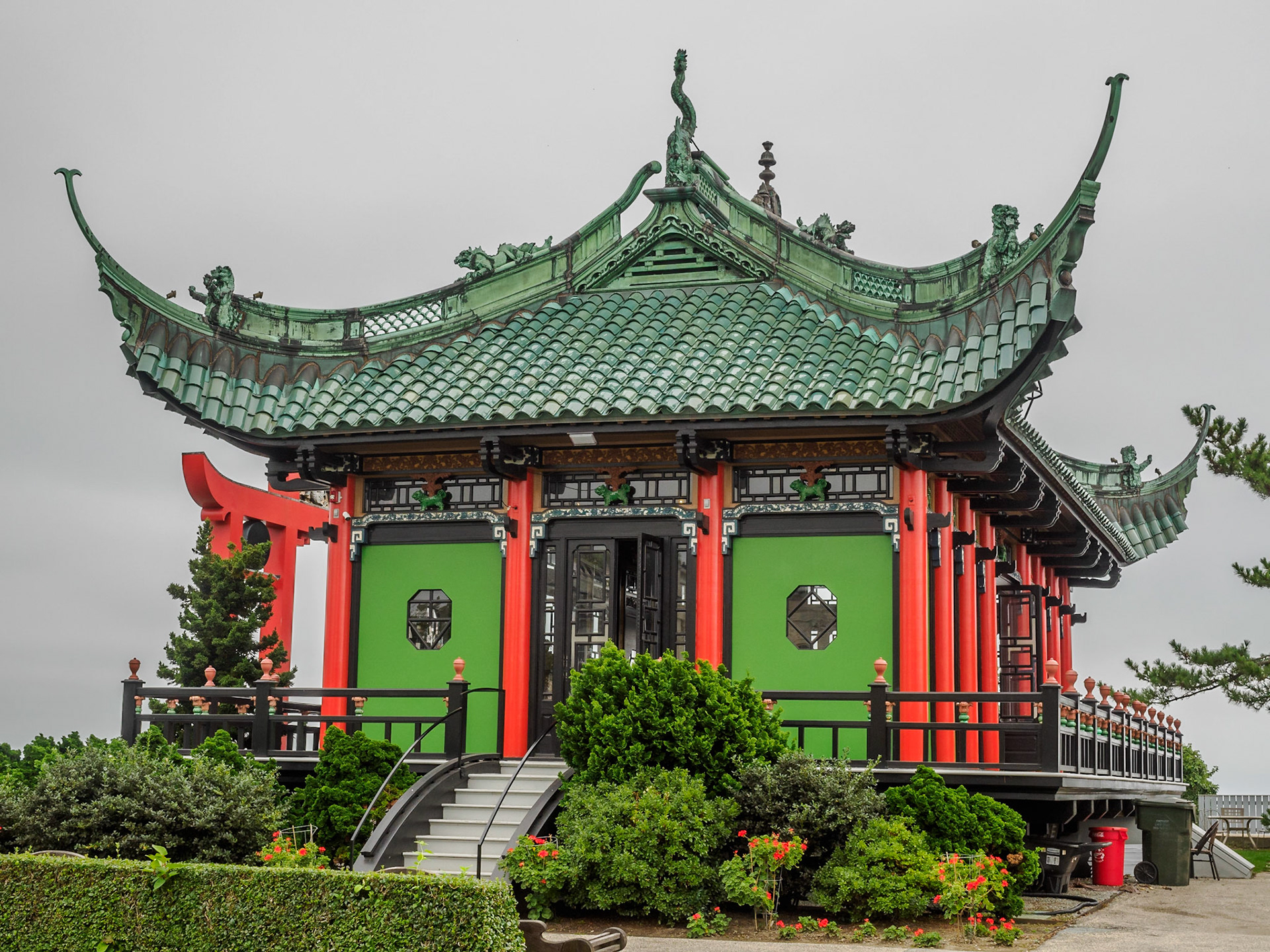
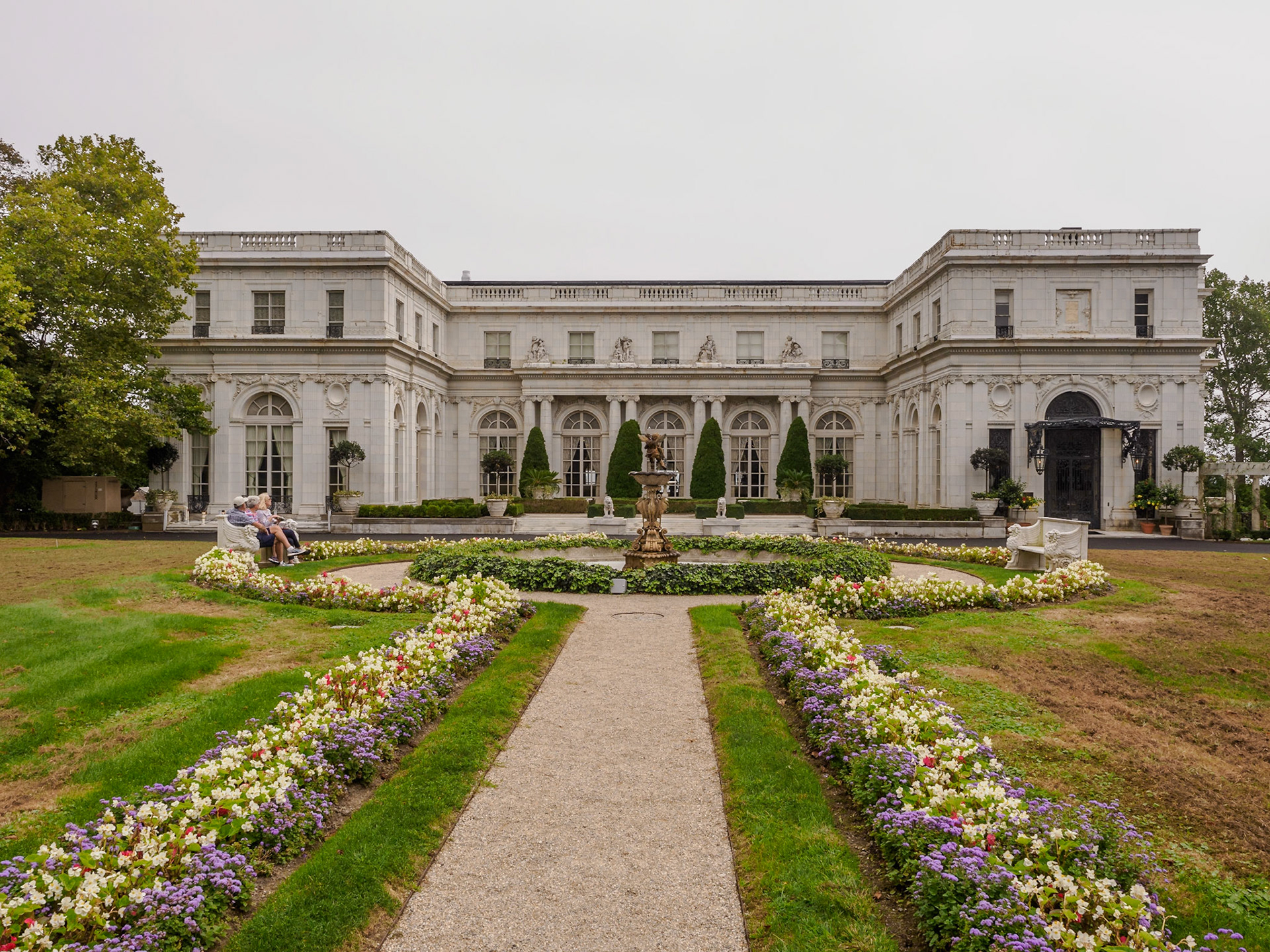
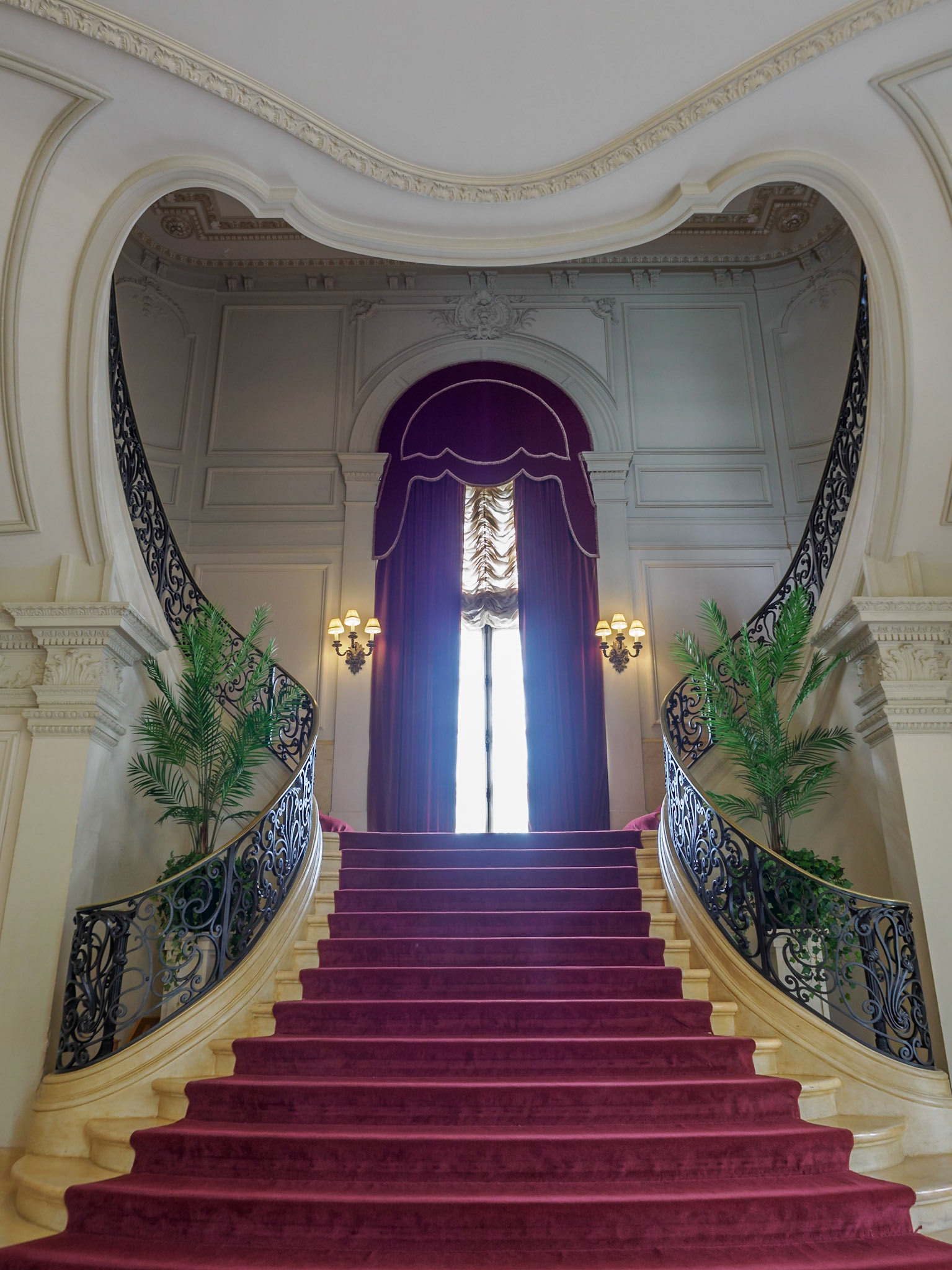
The Grand Staircase was designed for women to be seen. They would walk upstairs to deposit their wraps and then turn around to float down the sweeping staircase.
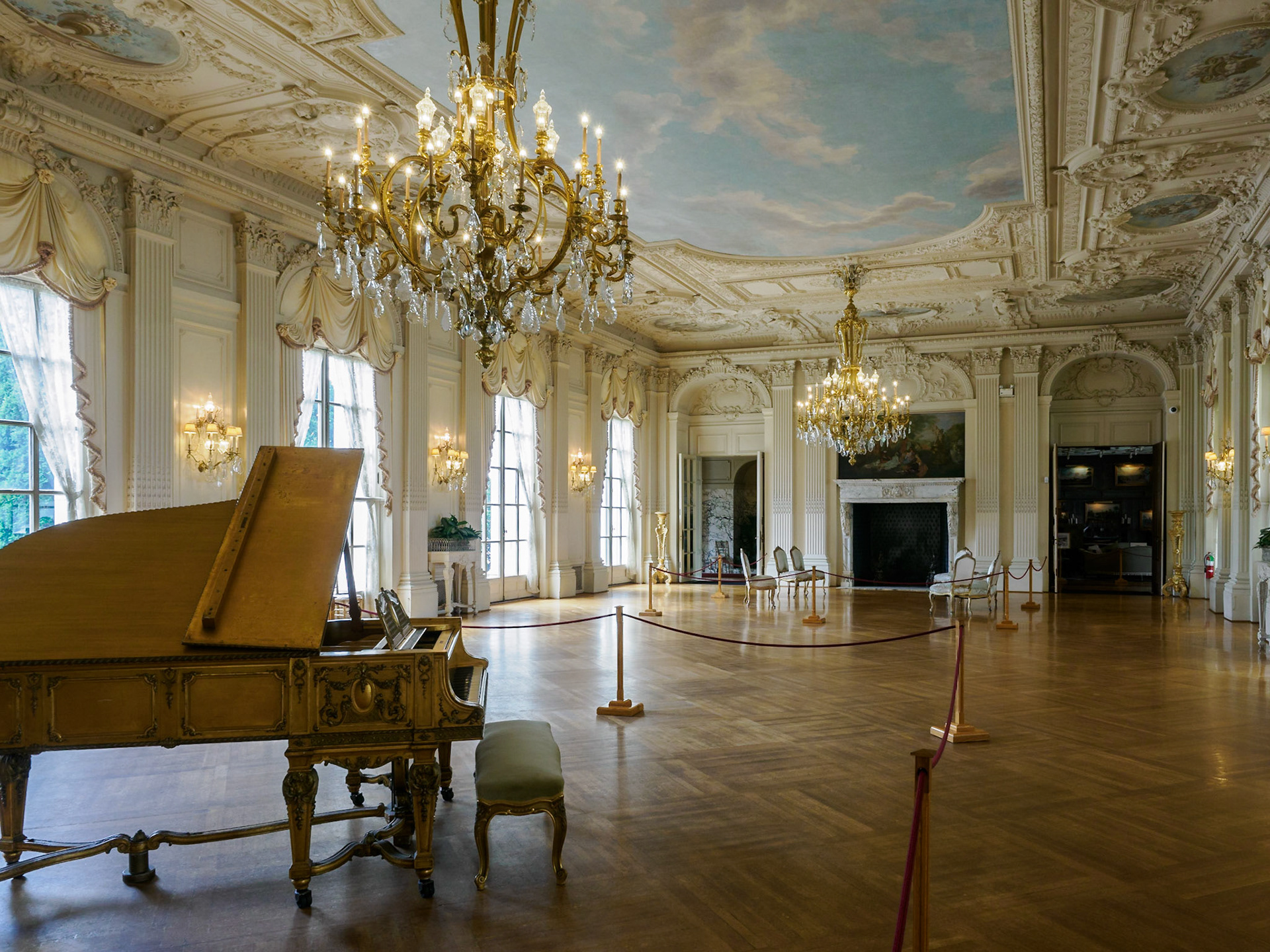
The Ballroom at Rosecliff was designed for entertaining. It is the largest single private room of any house in Newport.

The Library was the room where Hermann Oelrichs could go with his friends to relax and smoke cigars away from the women and the formality of the rest of the house.



In the dining room, the massive twin chandeliers (like the one shown here) and 12 wall sconces sparkle with Baccarat crystal.

The Music Room was constructed in France then disassembled and shipped to the United States for reassembly inside the house.

The Library was a private space for family and friends to read, relax, or play cards. The walls and cabinets are made of Circassian walnut from Russia and Turkey.

Cornelius Vanderbilt's bedroom is a reminder of when he lived on a small income. He was only able to enjoy The Breakers for one summer of good health due to a stroke in 1896.
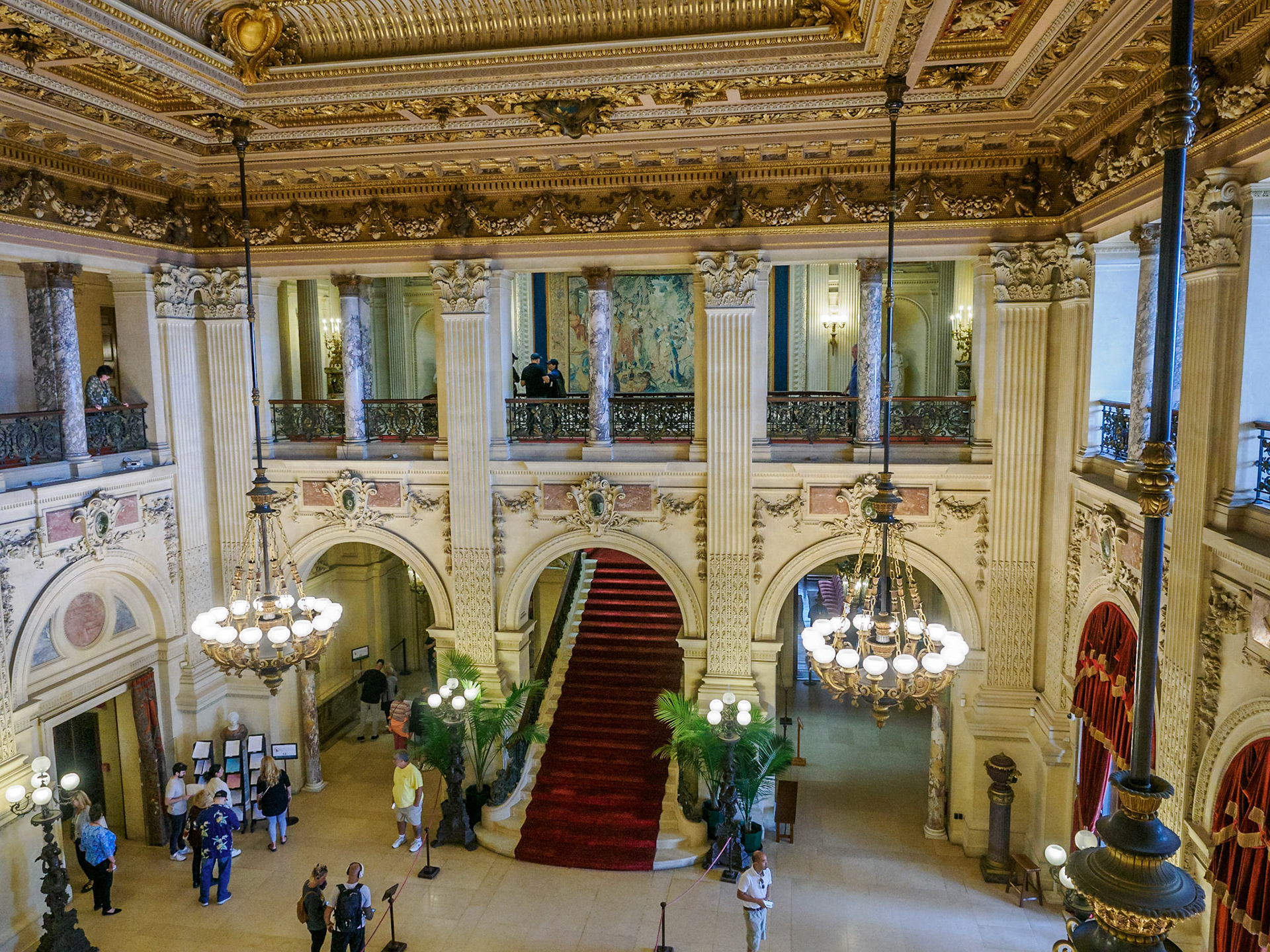
The breathtaking central Great Hall, with its 50-foot-high ceiling, was inspired by the open-air courtyards of Italy but exudes the grandeur of the Gilded Age.

The Kitchen was in a separate wing, safely away from the rest of the house in case of fire. The cast iron coal and wood-burning stoves stretch over 21 feet. The long worktable is covered with zinc, the stainless steel of the day. Copper pots for every imaginable purpose hang above.

Beavertail Lighthouse in the distance

Claiborne Pell/Newport Bridge and Rose Island Light in background

The Reefs Estate Stables & Carriage House. They have been fenced off and are routinely patrolled by park rangers.

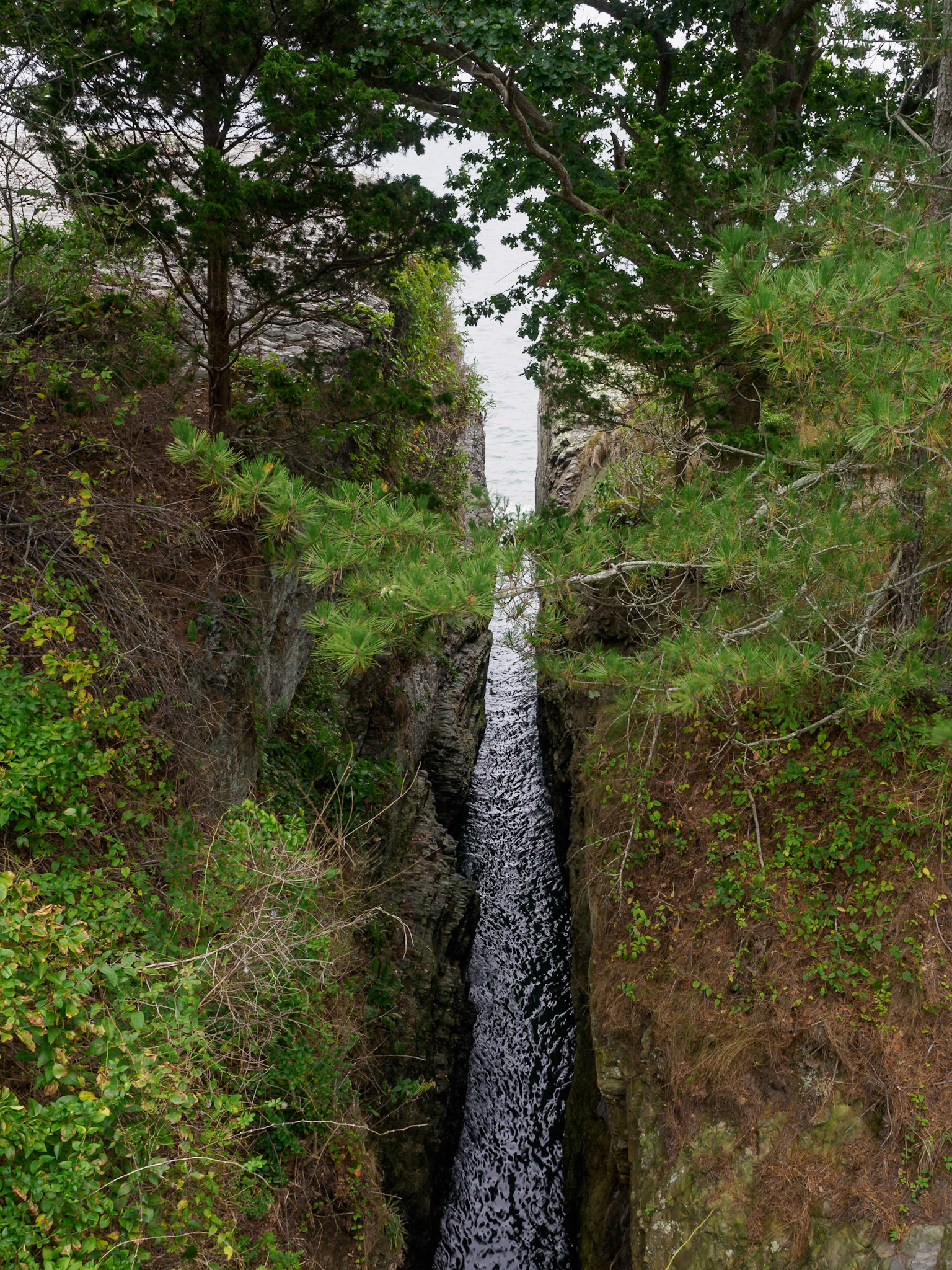
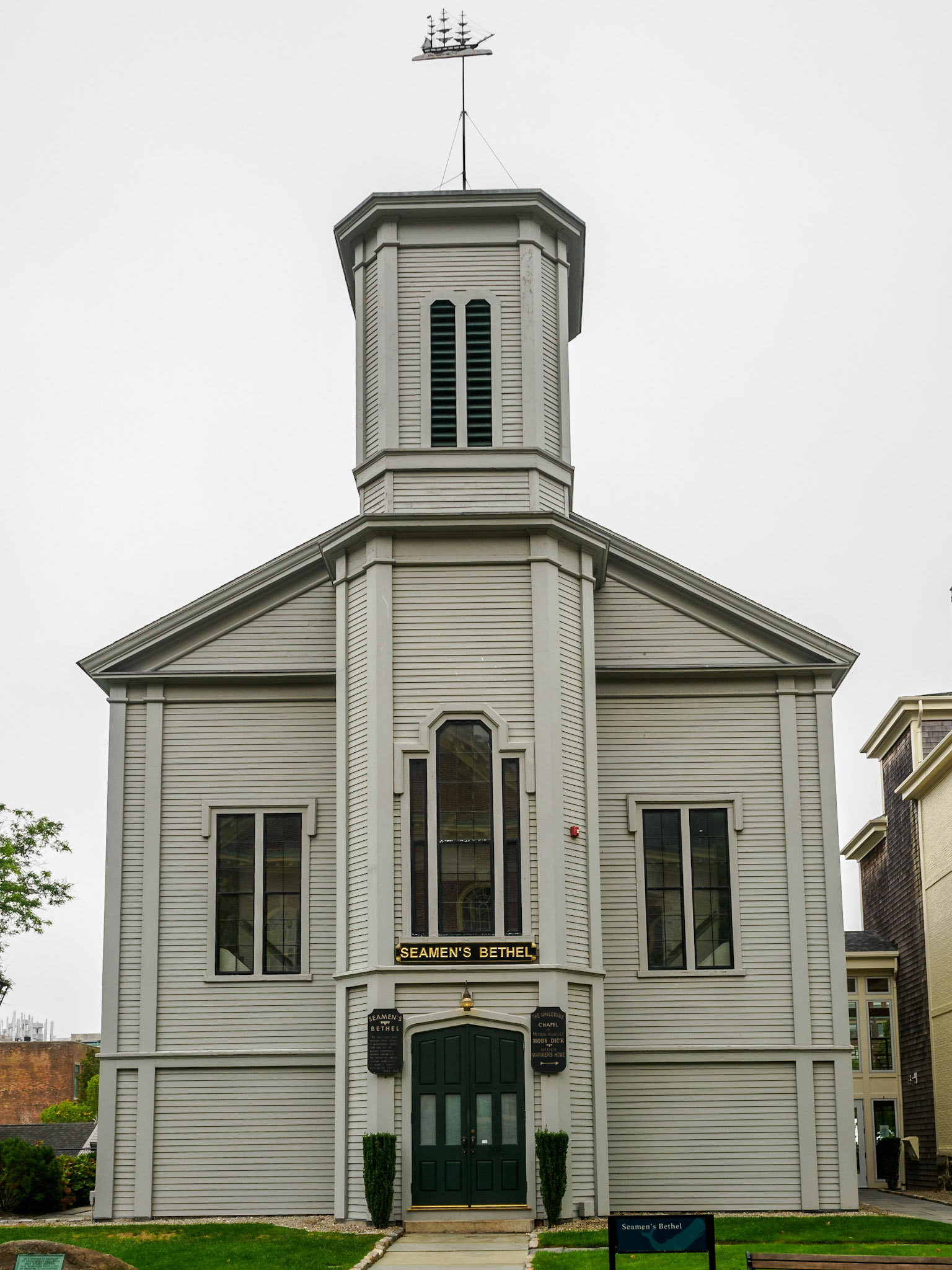
The Seamen's Bethel is a chapel in New Bedford built in 1832. The Bethel was specifically constructed for the many sailors who called New Bedford their home port (mostly whalers), and considered it a matter of tradition that one visited the chapel before setting sail.
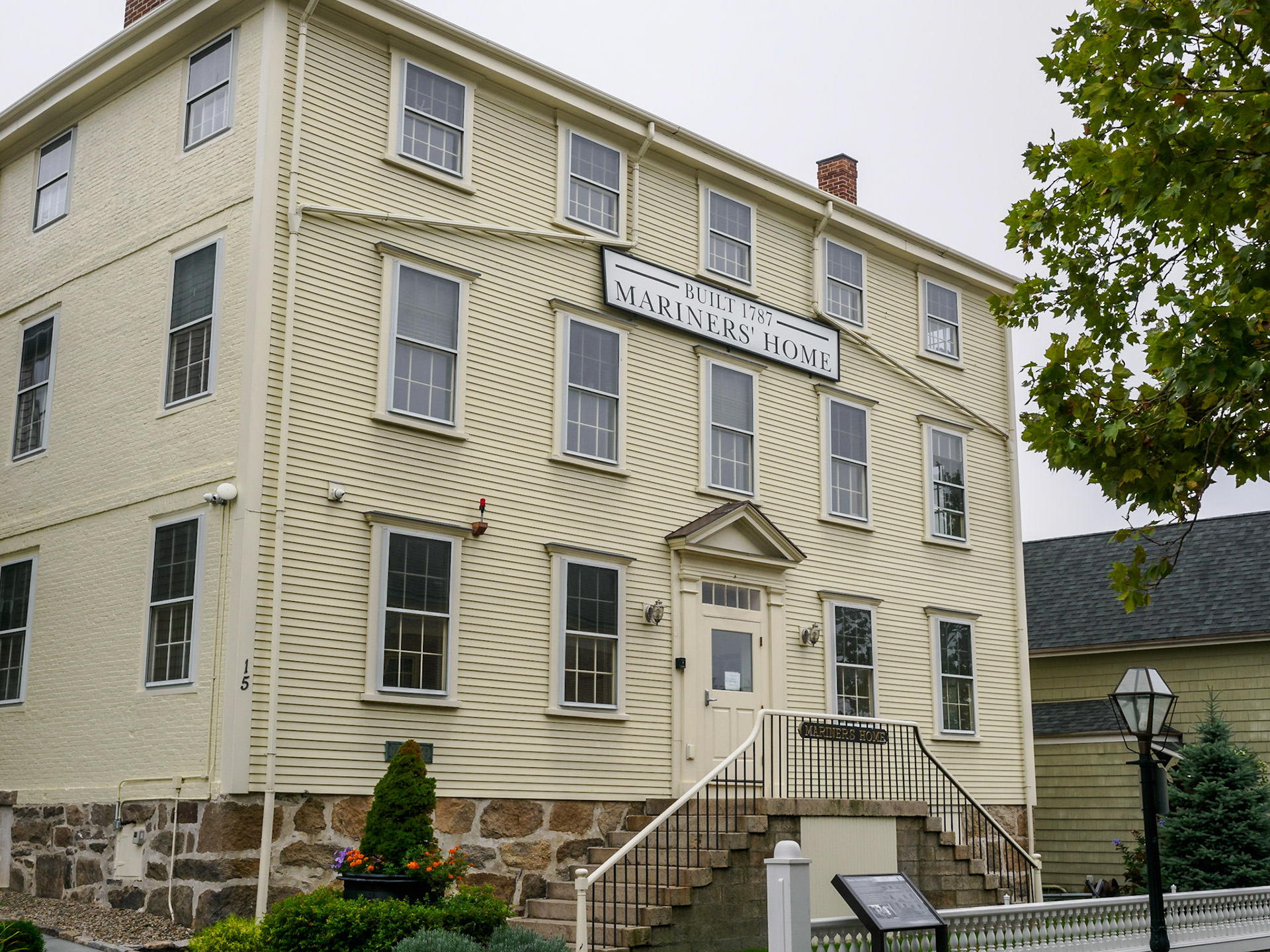
The Mariners’ Home was opened for its present use as a home for transient mariners in 1857. Originally built as a private mansion in 1787, the building was later donated to the New Bedford Port Society and moved to its present location next to the Seamen's Bethel.
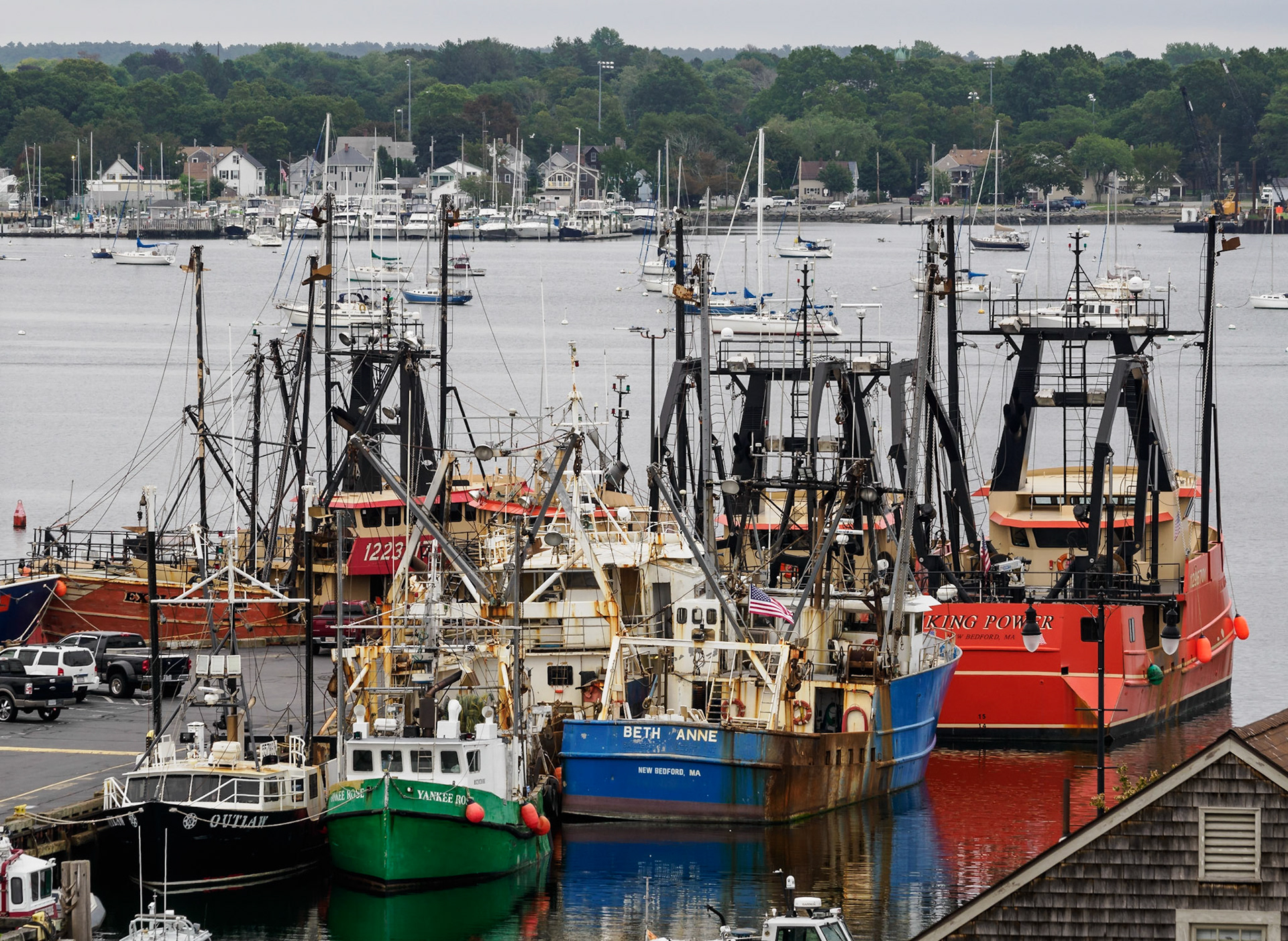
Boats docked in the New Bedford harbor, not far from the museum.
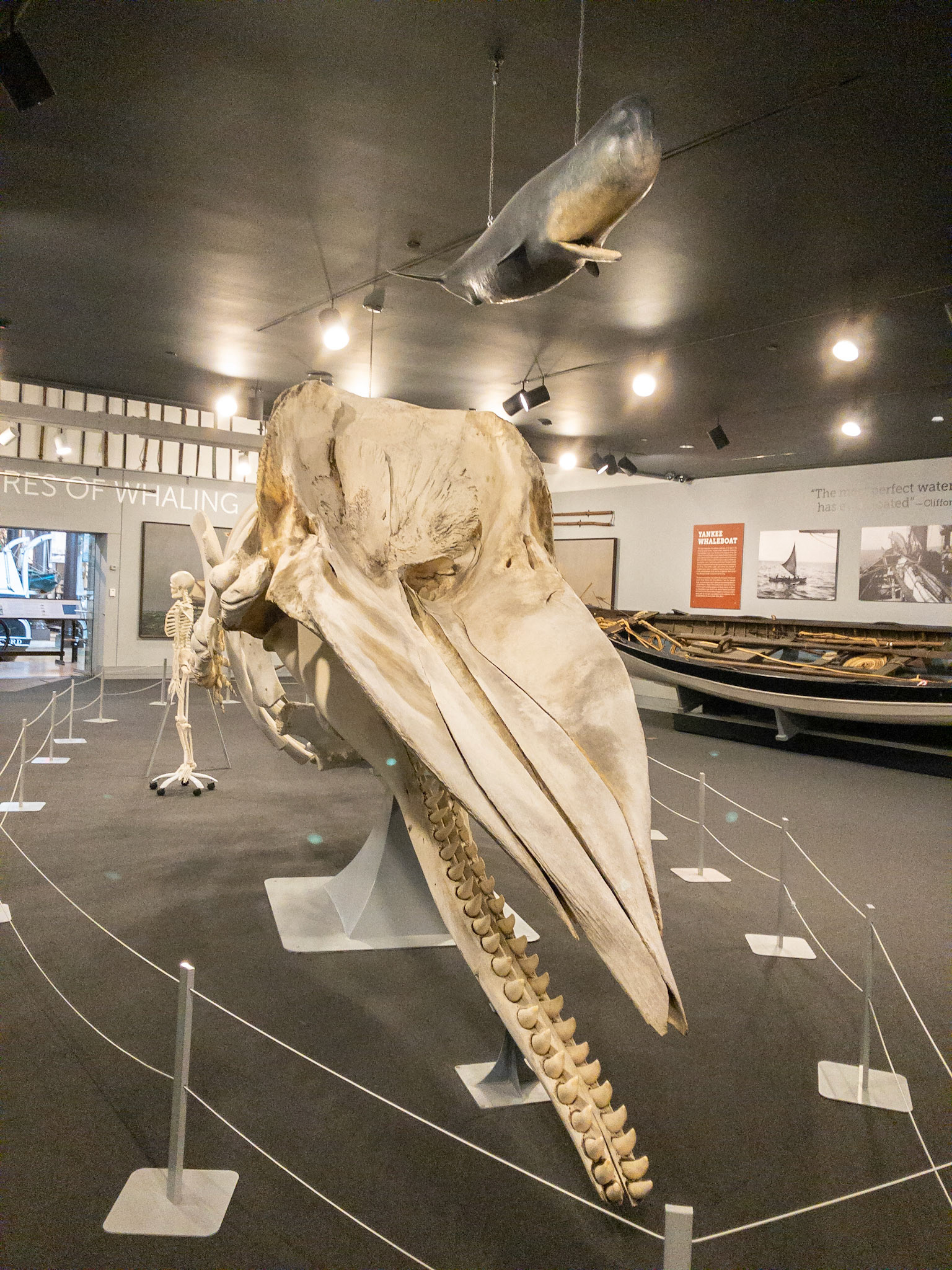

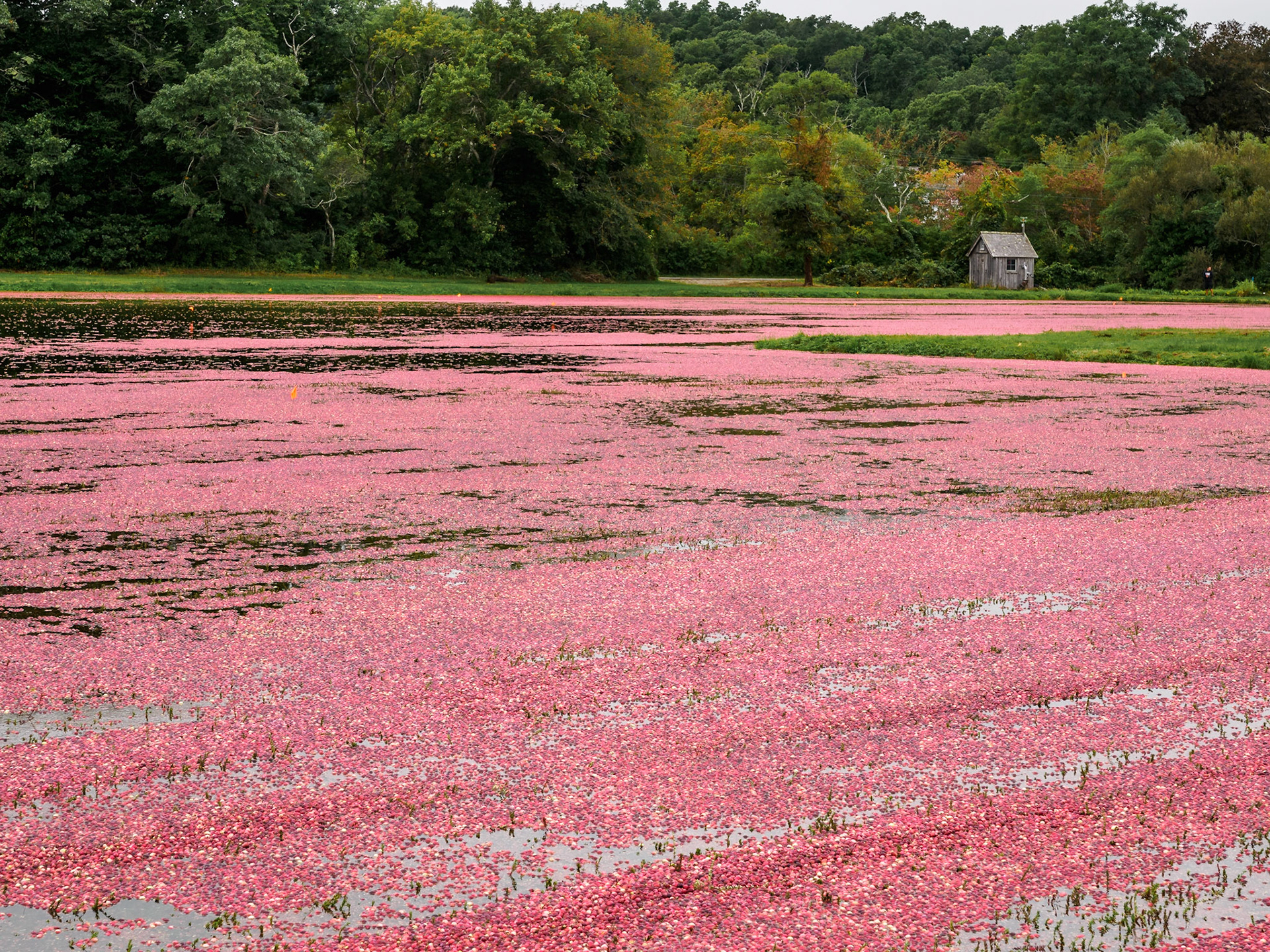
Floating Cranberries
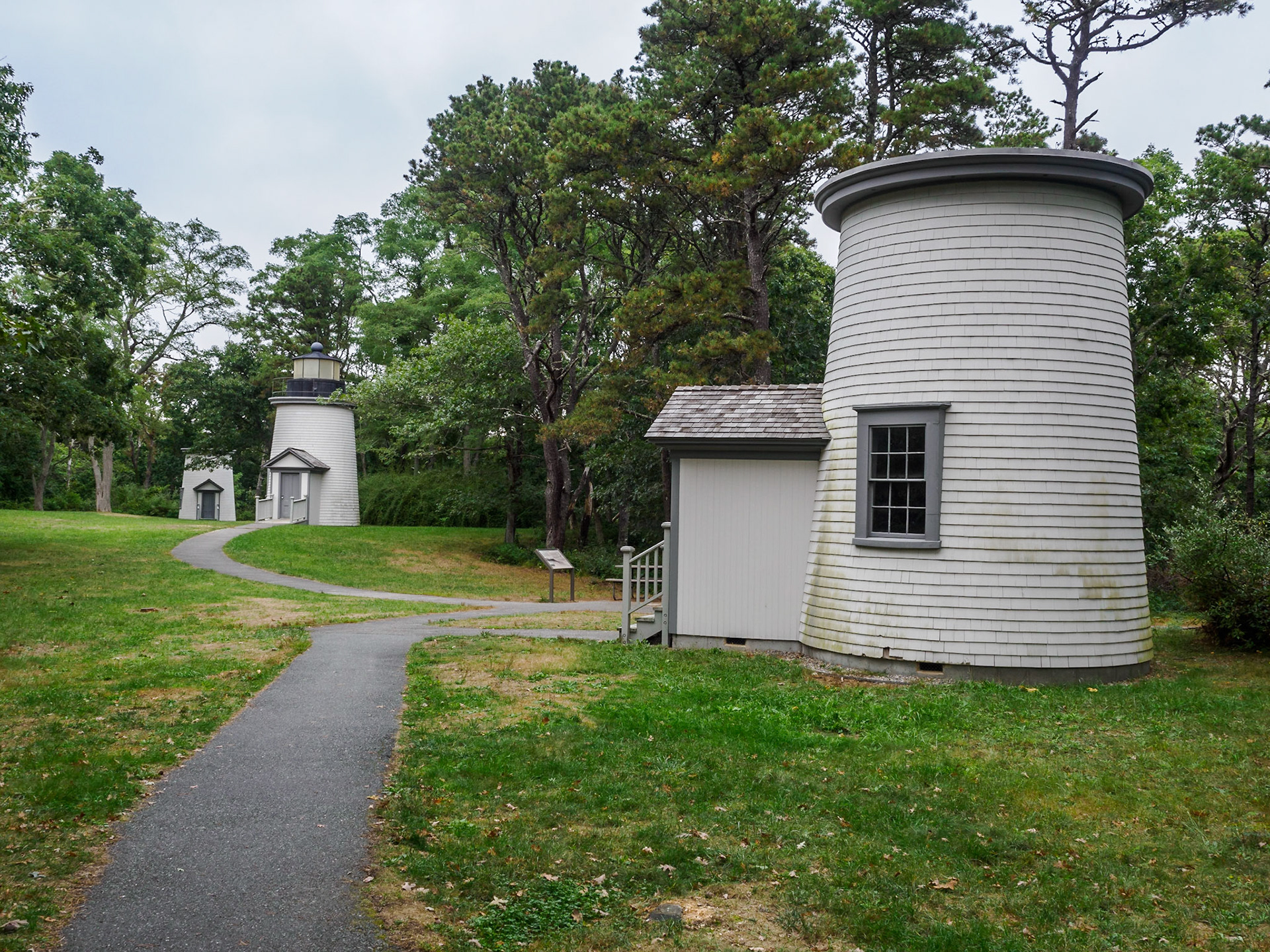
The Three Sisters of Nauset are a trio of historic lighthouses in Eastham, Massachusetts. The original three brick towers were built 150 feet apart in a straight line along the crest of the cliffs. They 15 feet tall and wide at the base, and 9 feet wide at the lantern deck. Each was painted white with black lantern decks, which lent to their looking like three ladies with white dresses and black bonnets – the birth of the name "Three Sisters." They fell into the sea due to erosion in 1890 and were replaced in 1892 with wooden towers on brick foundations. In 1983, the National Park Service moved the Three Sisters 1,800 feet west of Nauset Light, lined up in their original configuration. A restoration was completed in 1989.
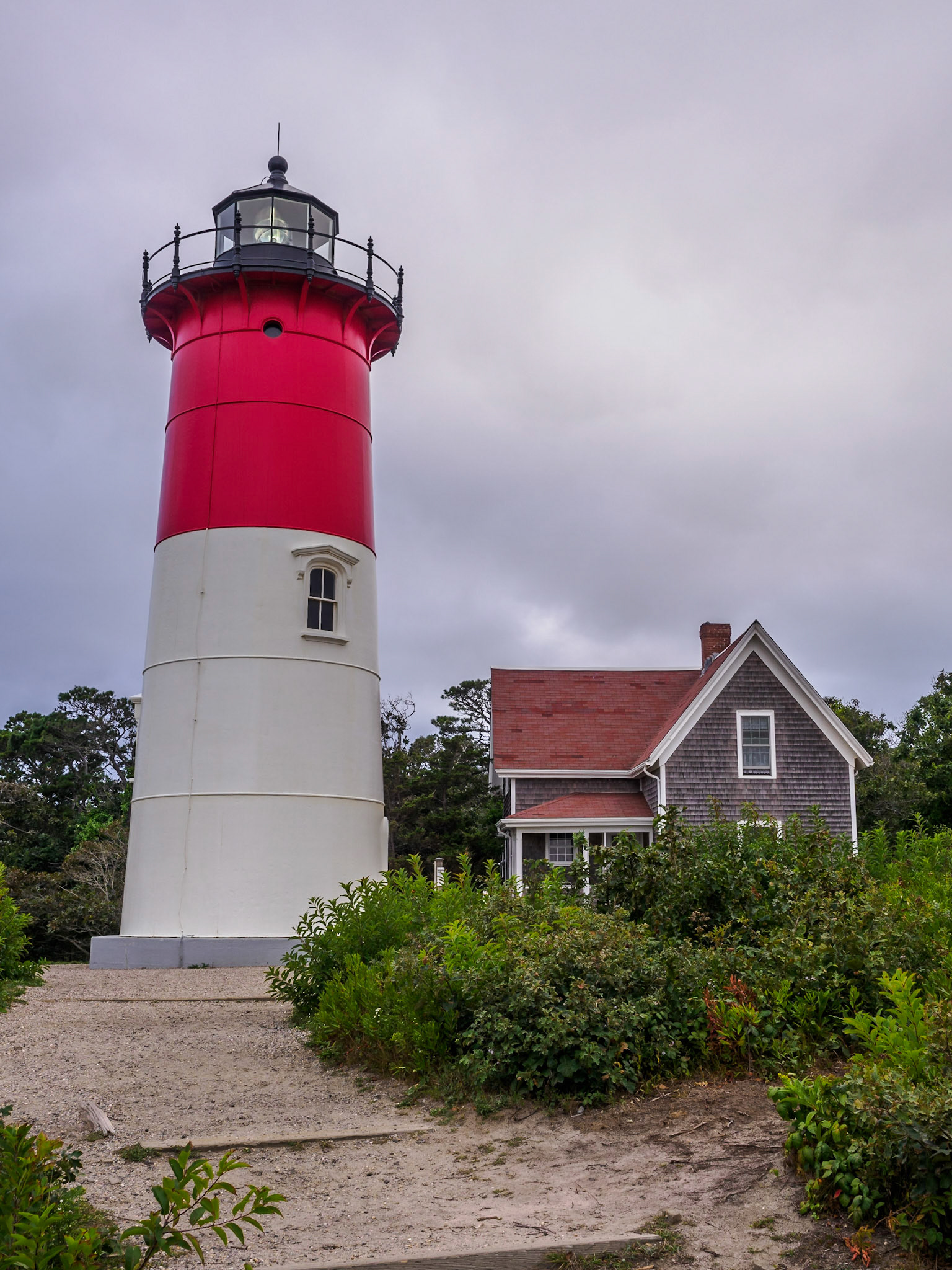
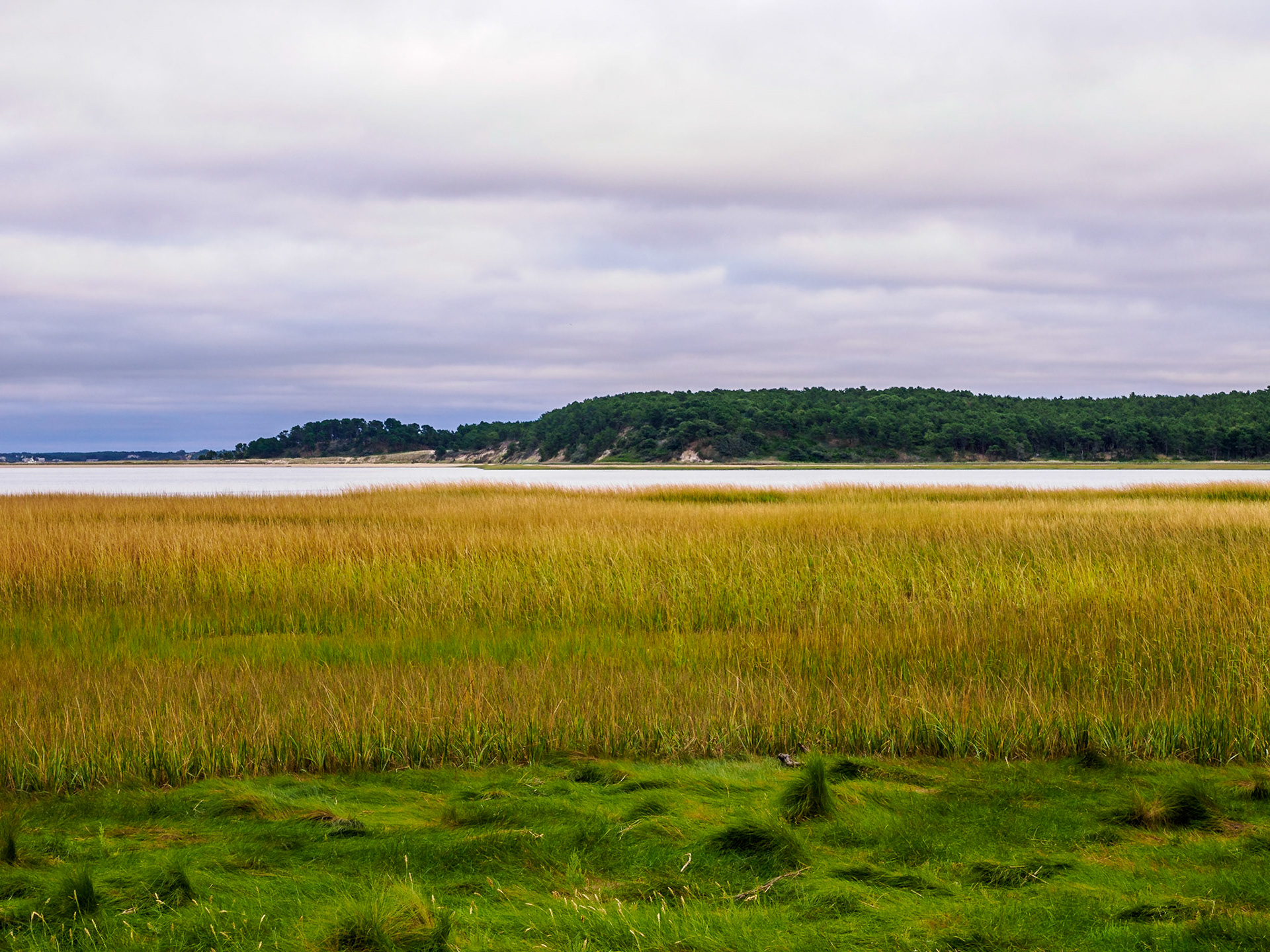
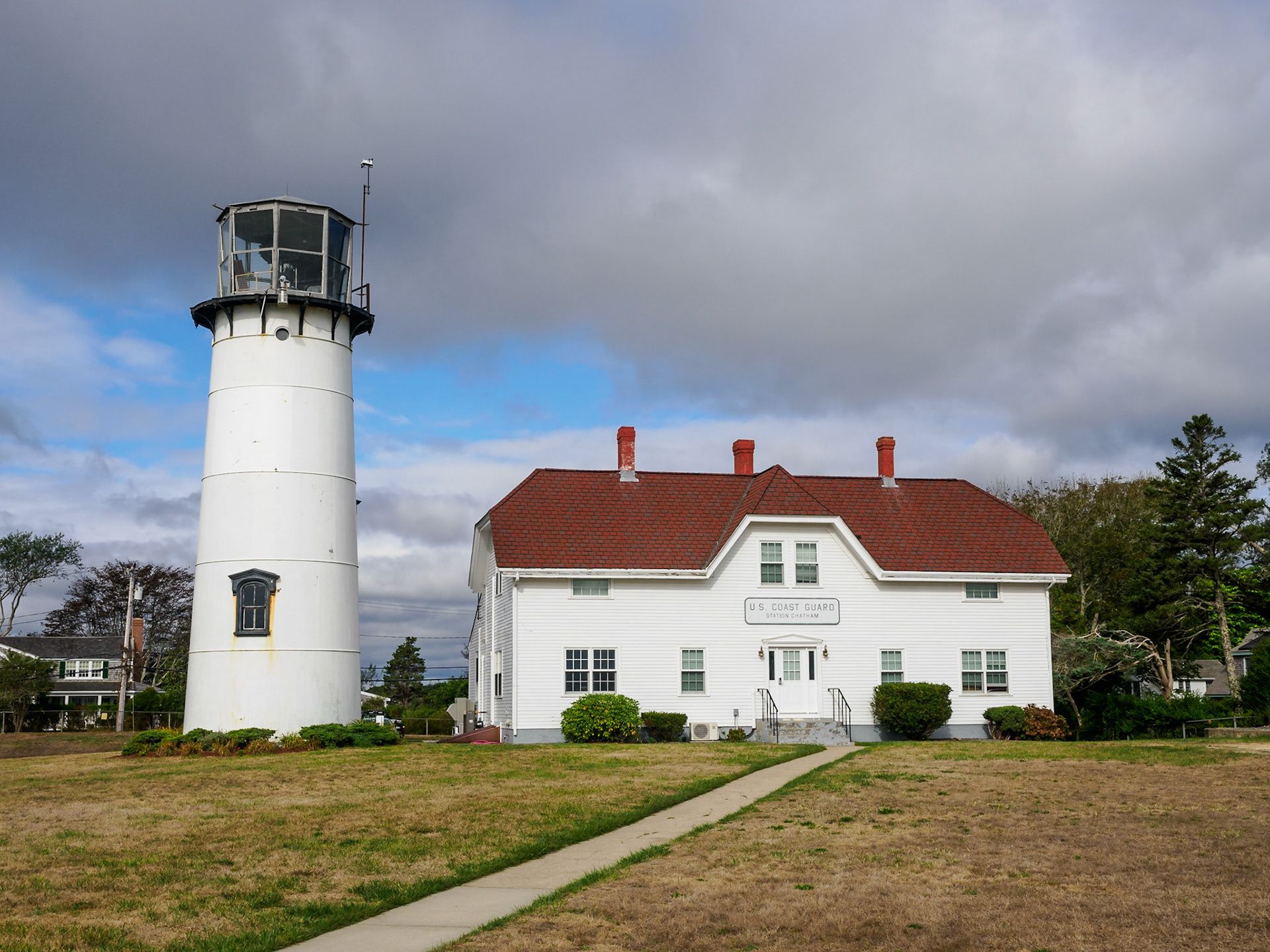
Chatham Lighthouse was one of two built in 1841. Due to ongoing erosion, the 48-foot tall light was moved to its present location in 1877 (the other has fallen into the ocean).
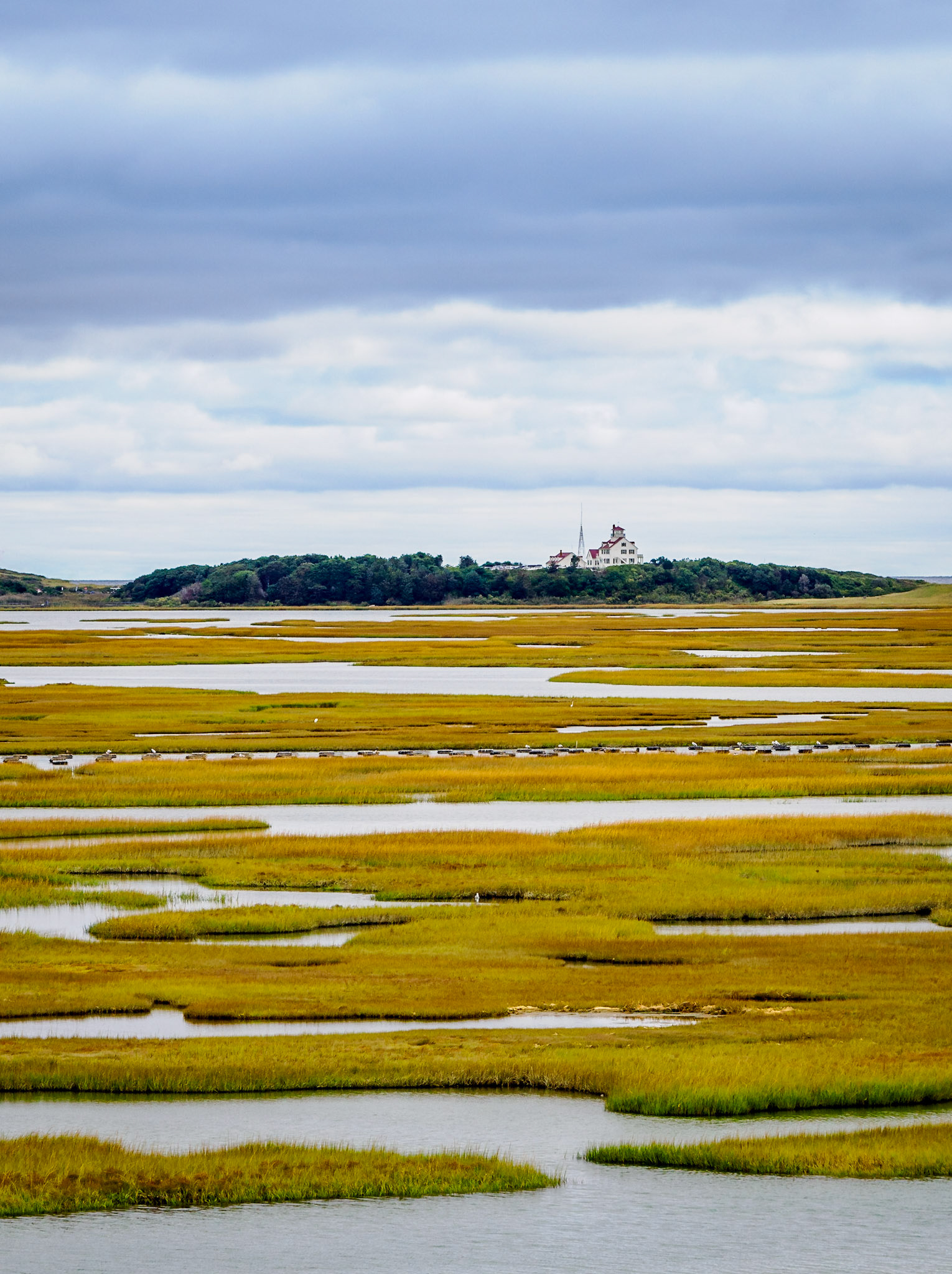
Coast Guard Station at Nauset Bay from Indian Rock
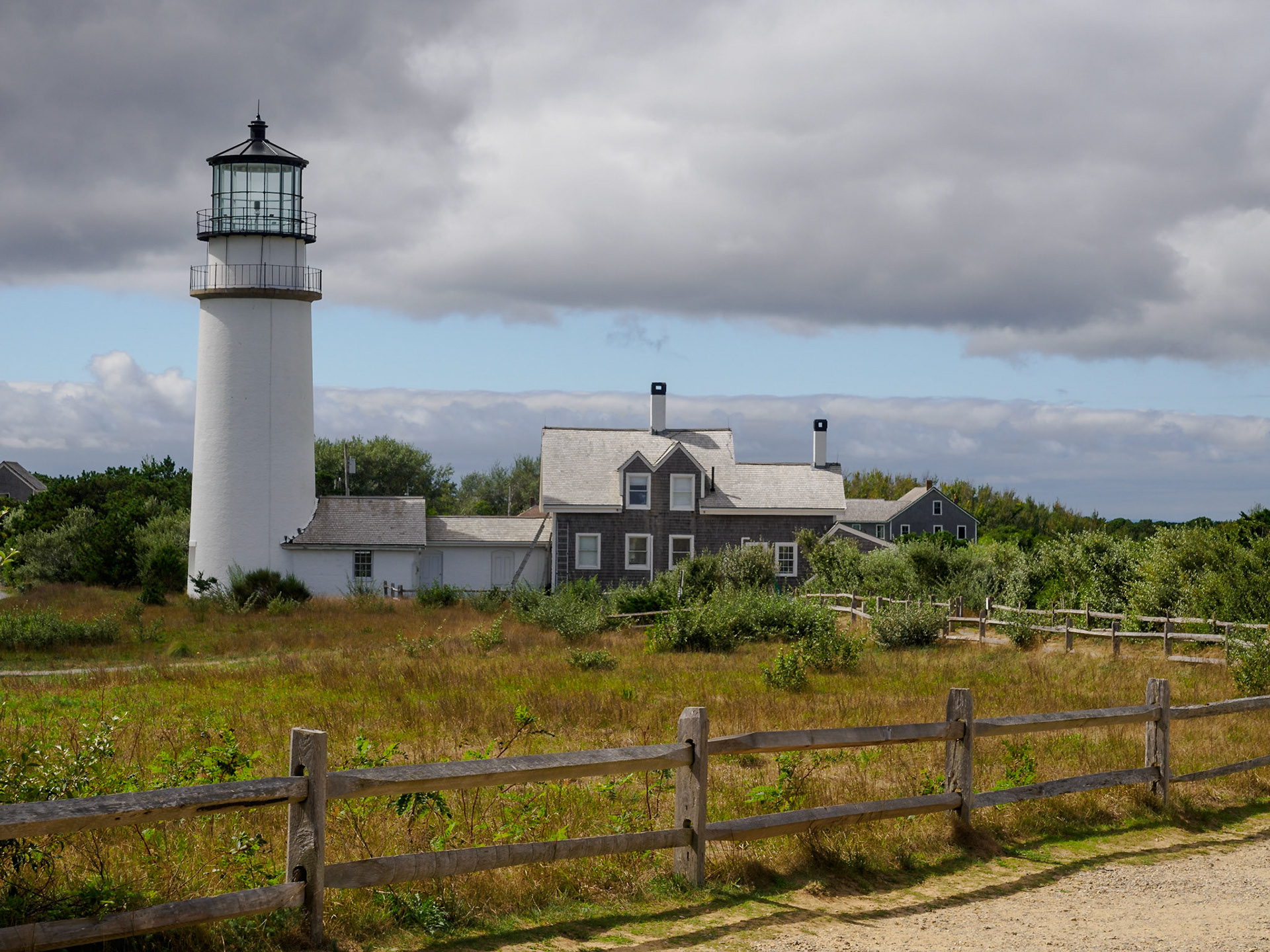
Highland Light
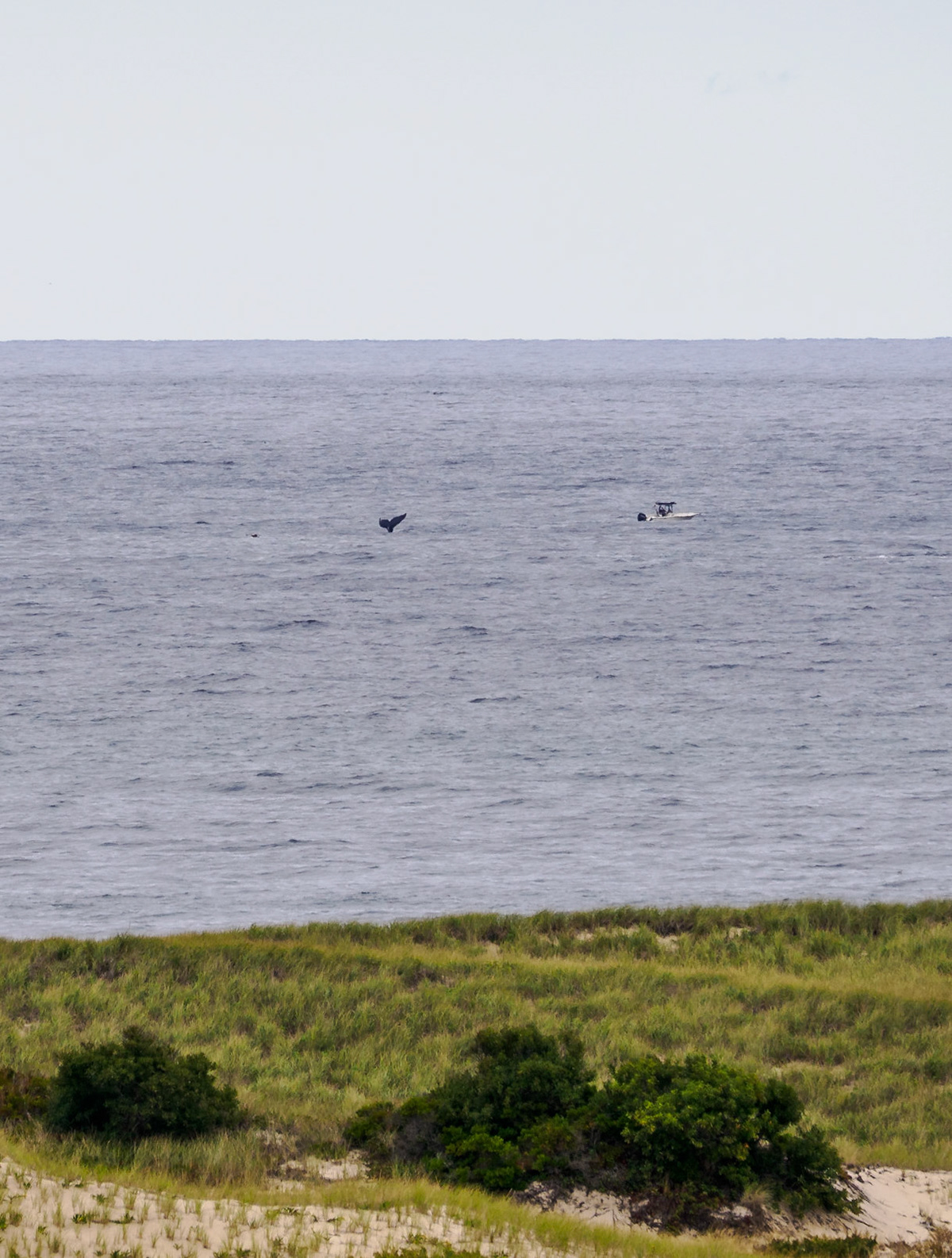
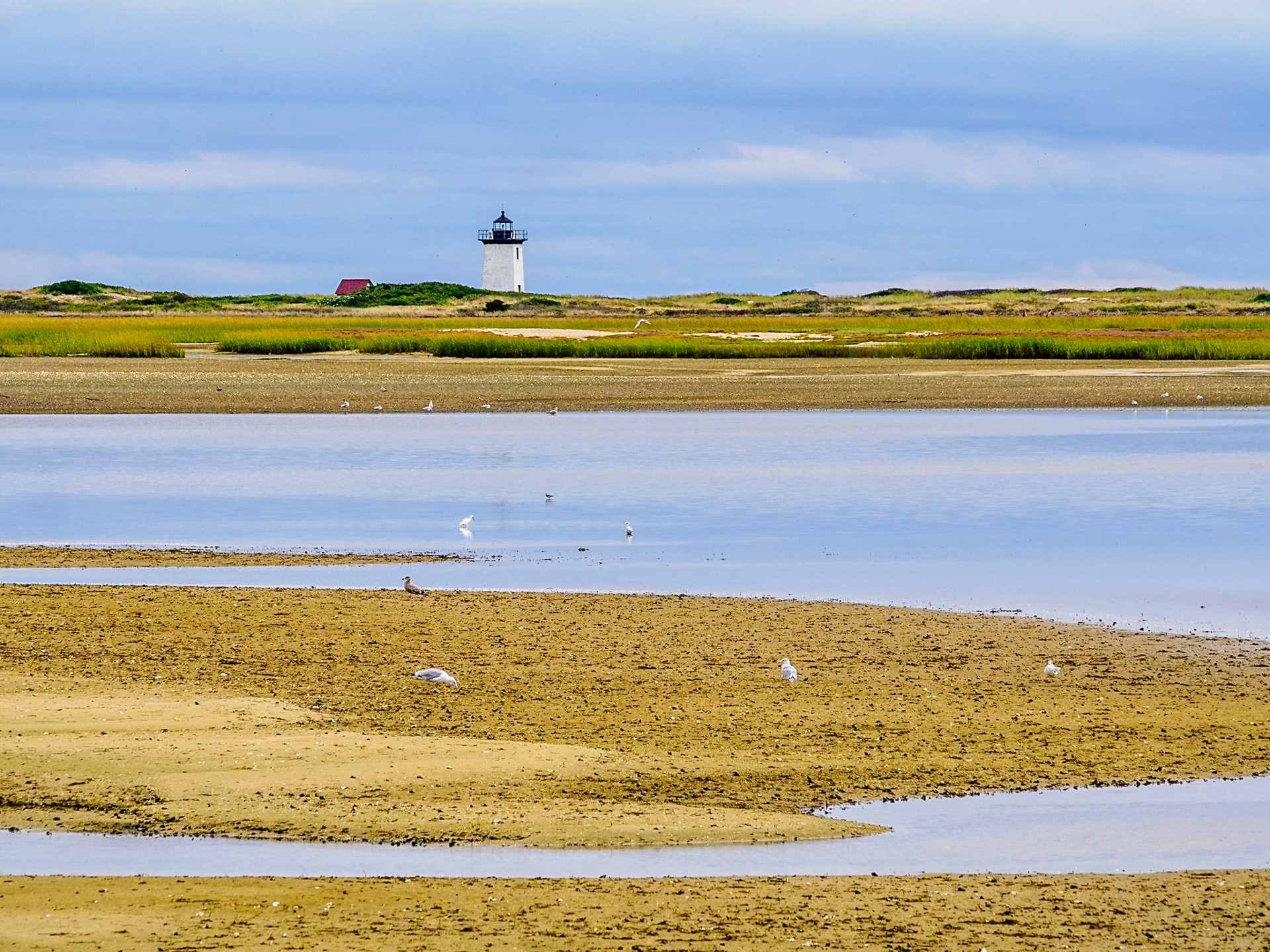
Wood End Lighthouse
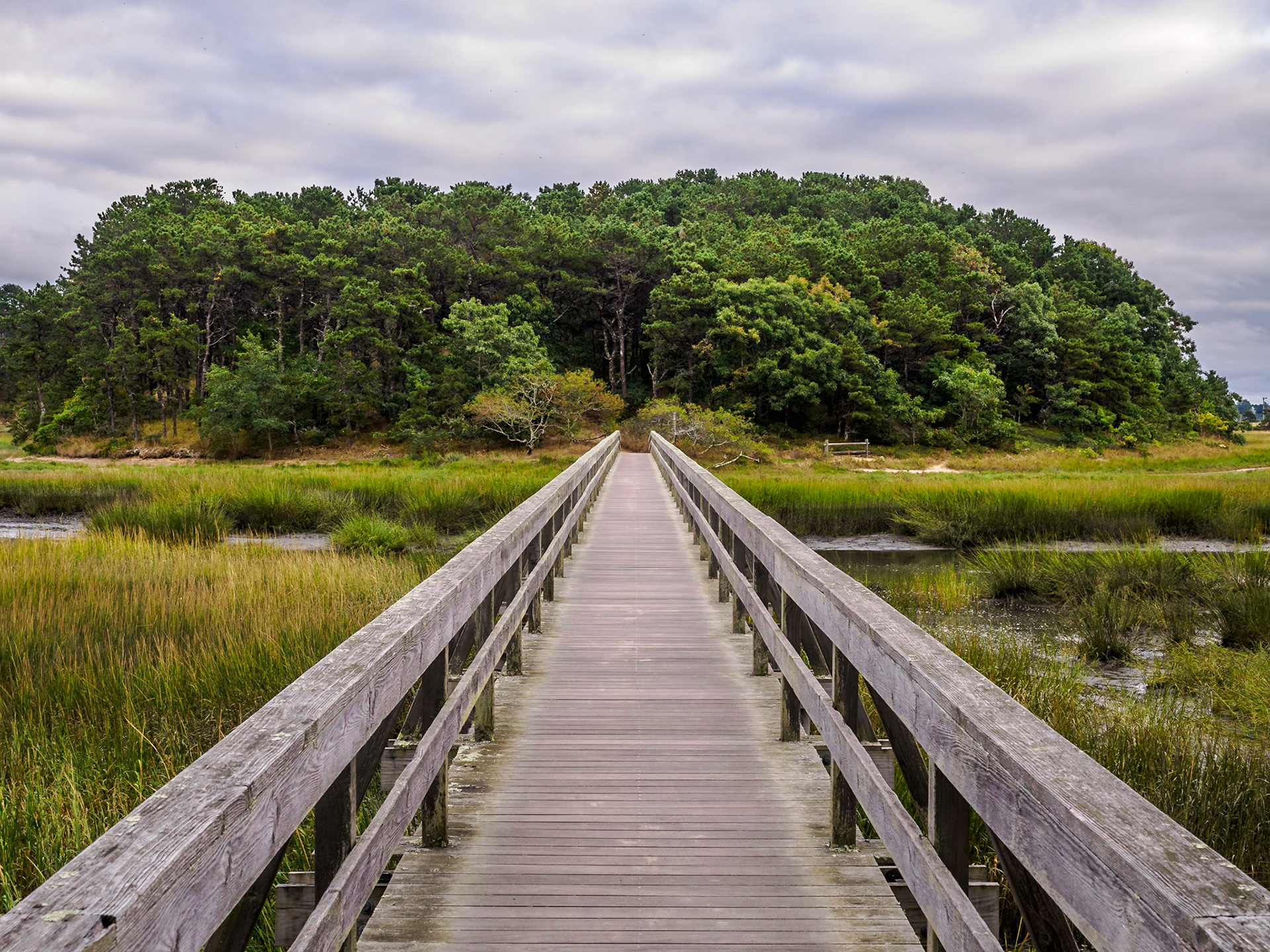
We walked across Uncle Tim's Bridge in Wellfleet and enjoyed the trail around the little island there.

Plimoth Patuxet Museum

A housewife in one of the homes of the 17th century.
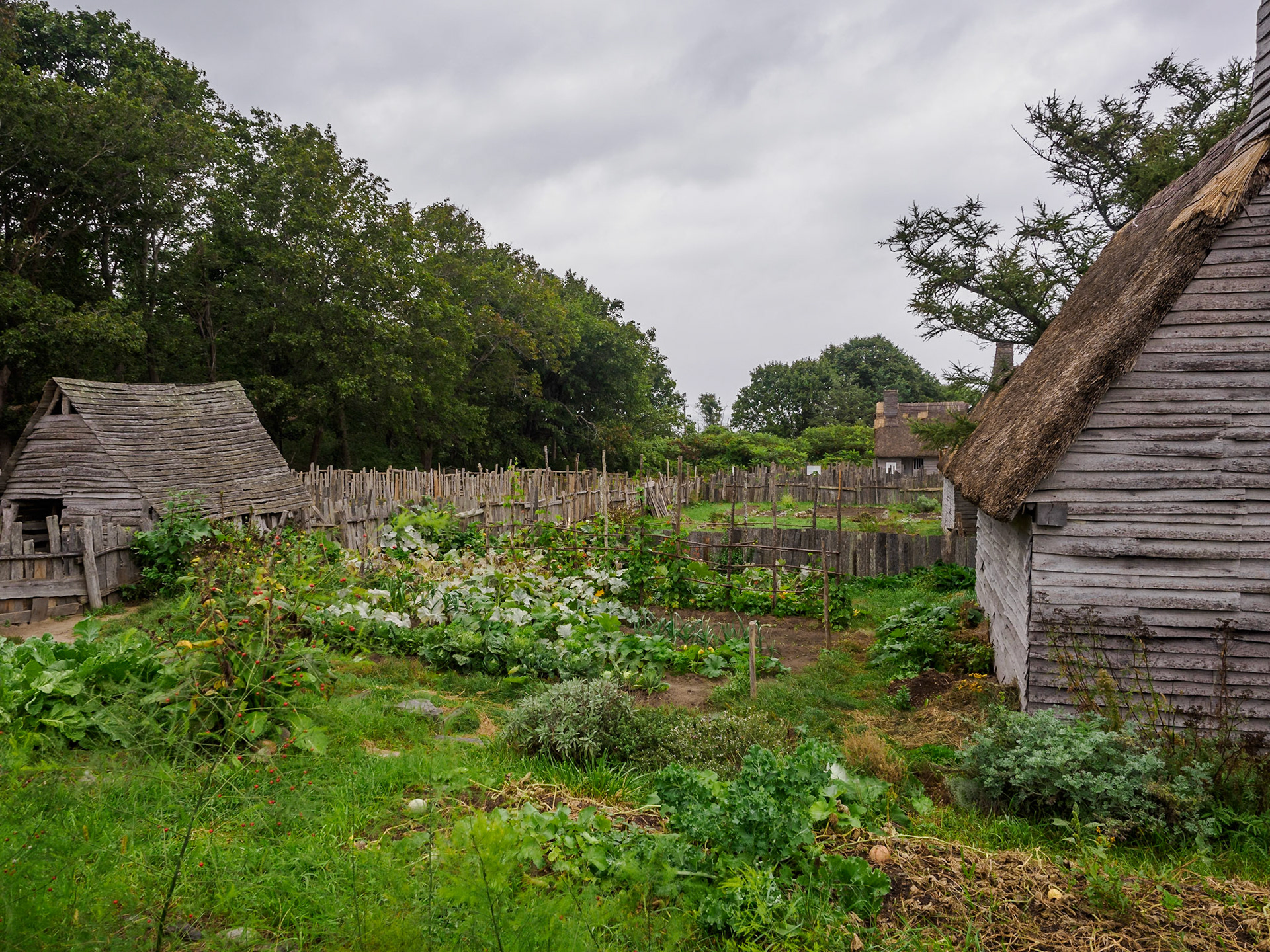
Vegetable gardens in the Pilgrim village.
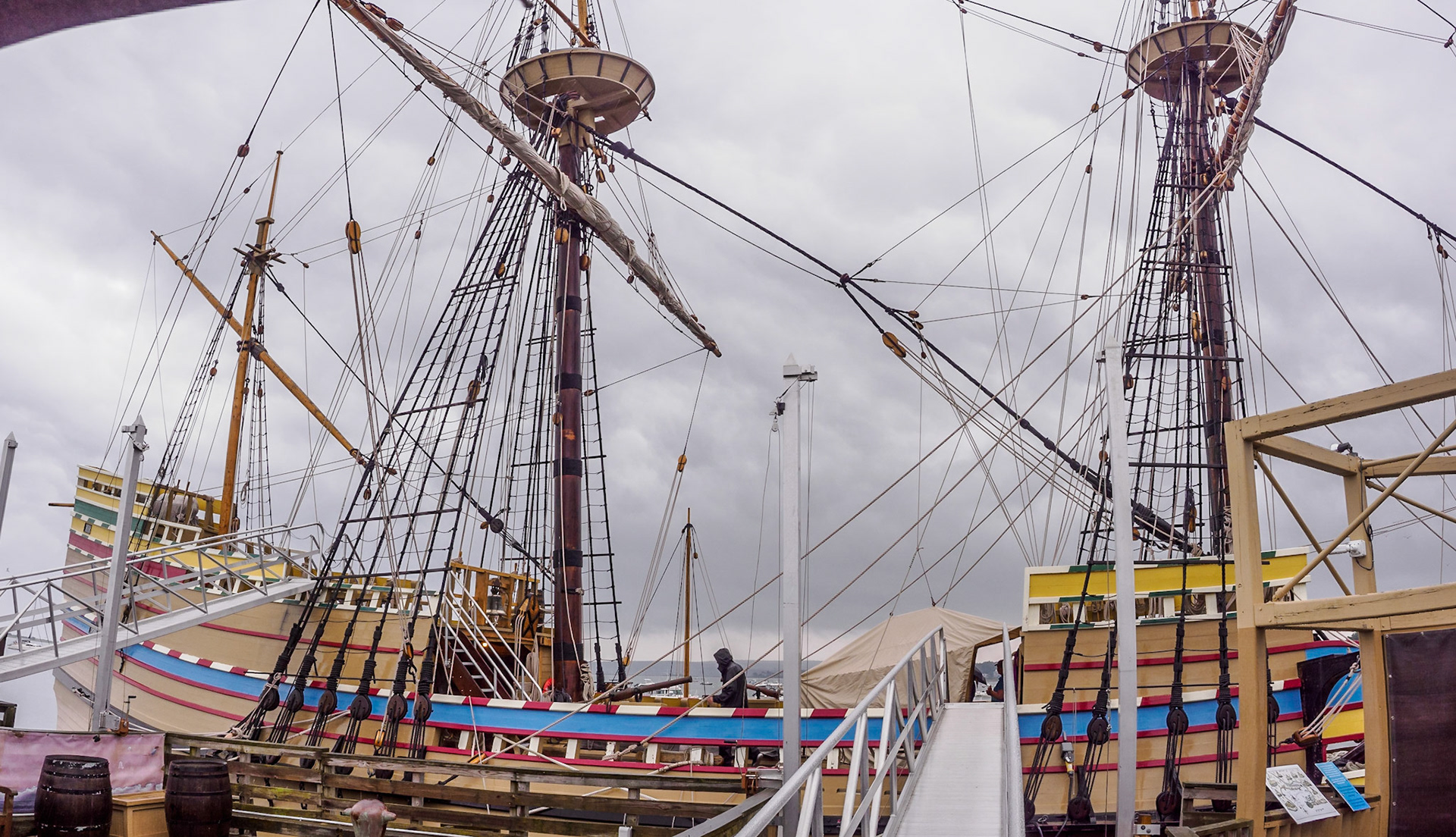
Mayflower II

The captain's quarters were luxurious compared to the space allotted to the crew and passengers. In addition to his sleeping quarters he had an office and dining area.
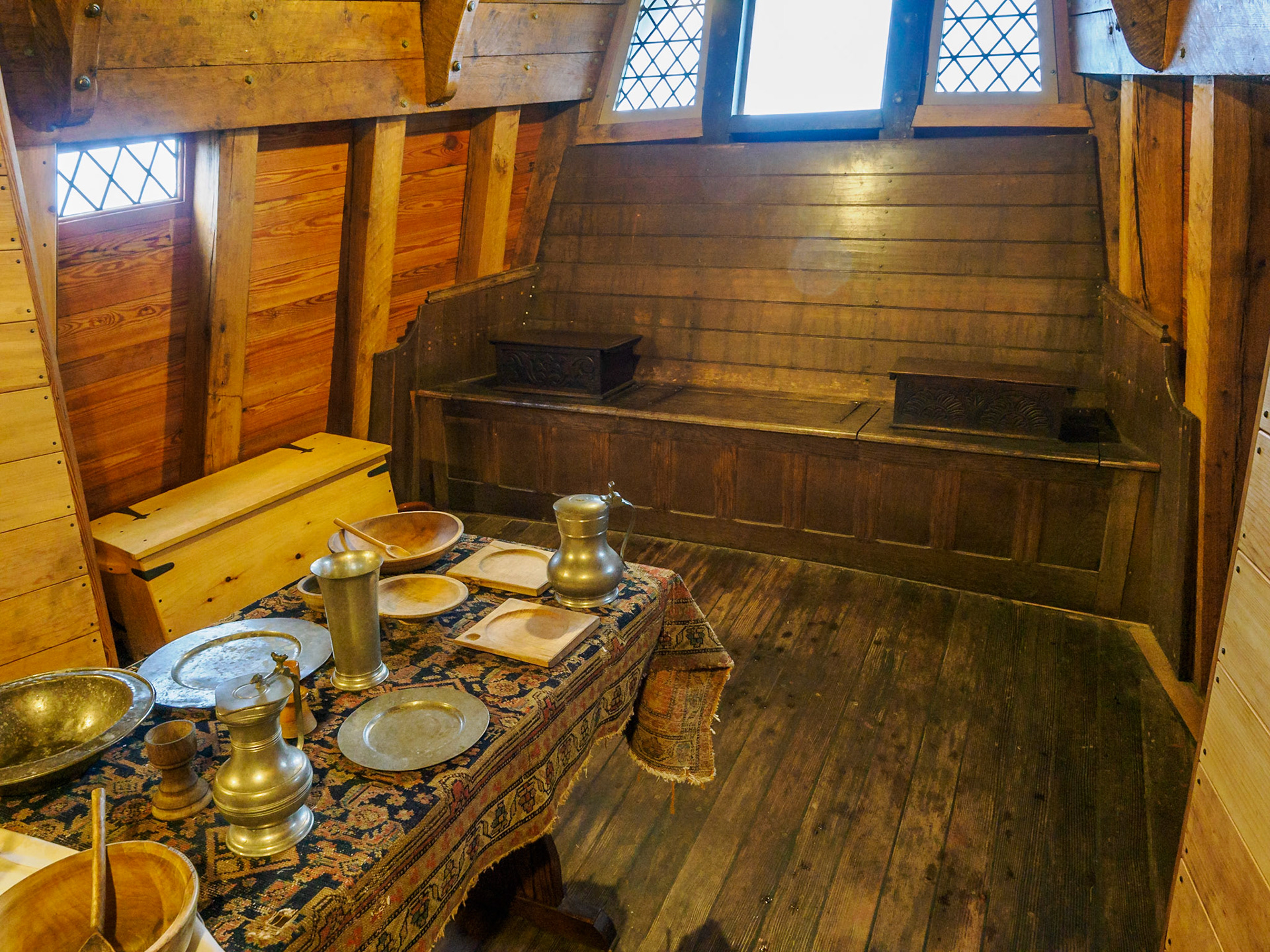
Mayflower II
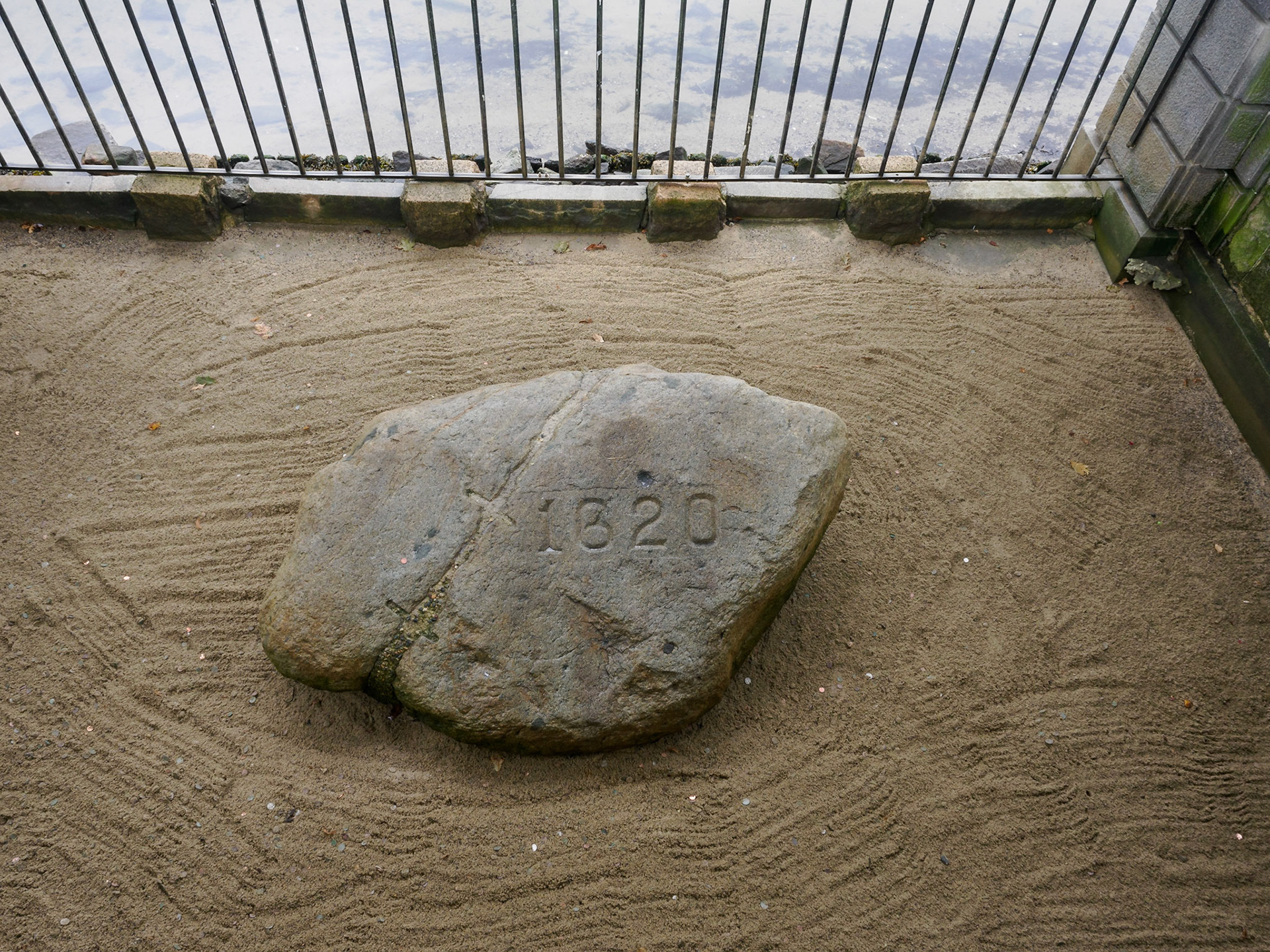
Plymoth Rock
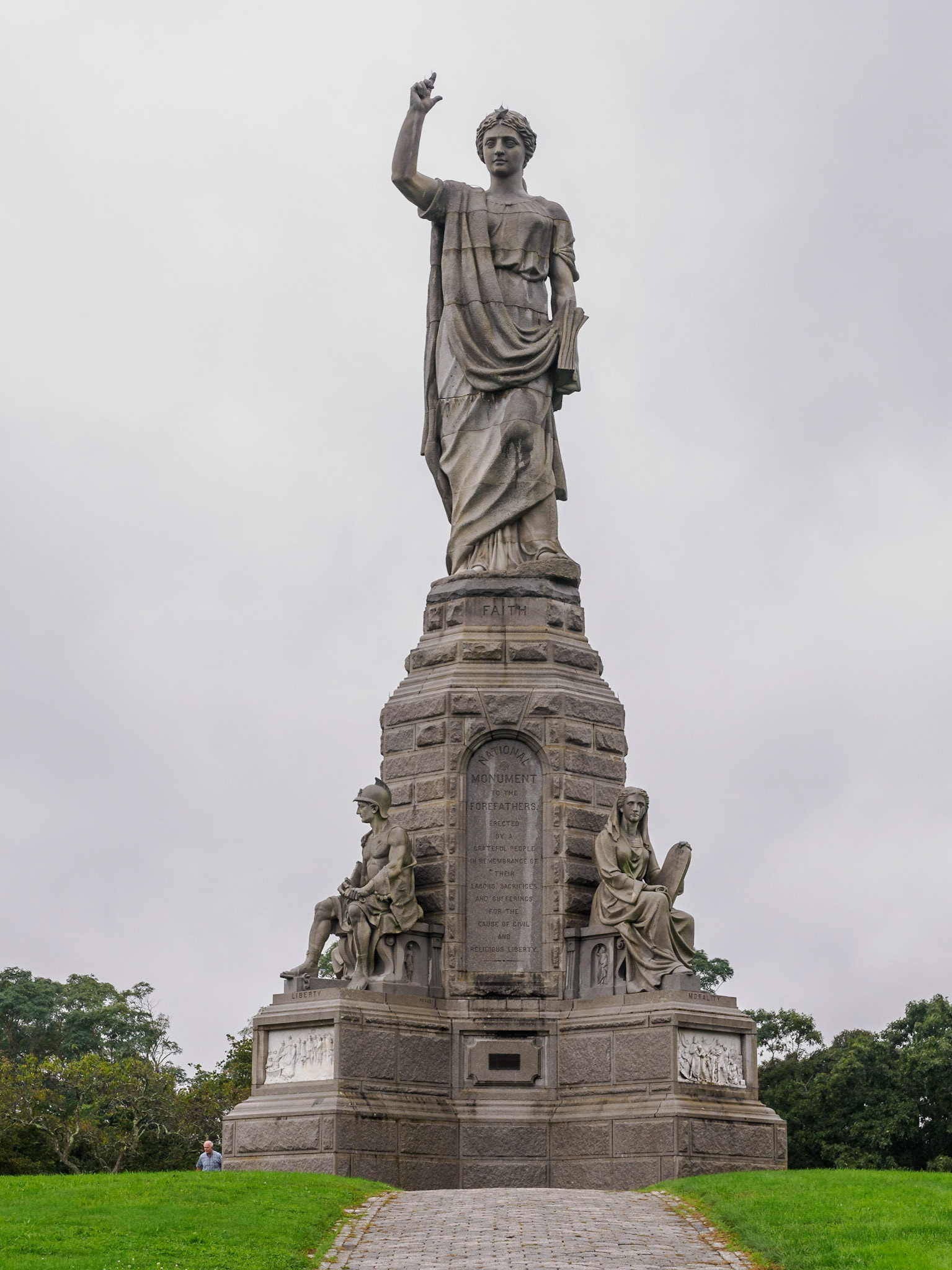
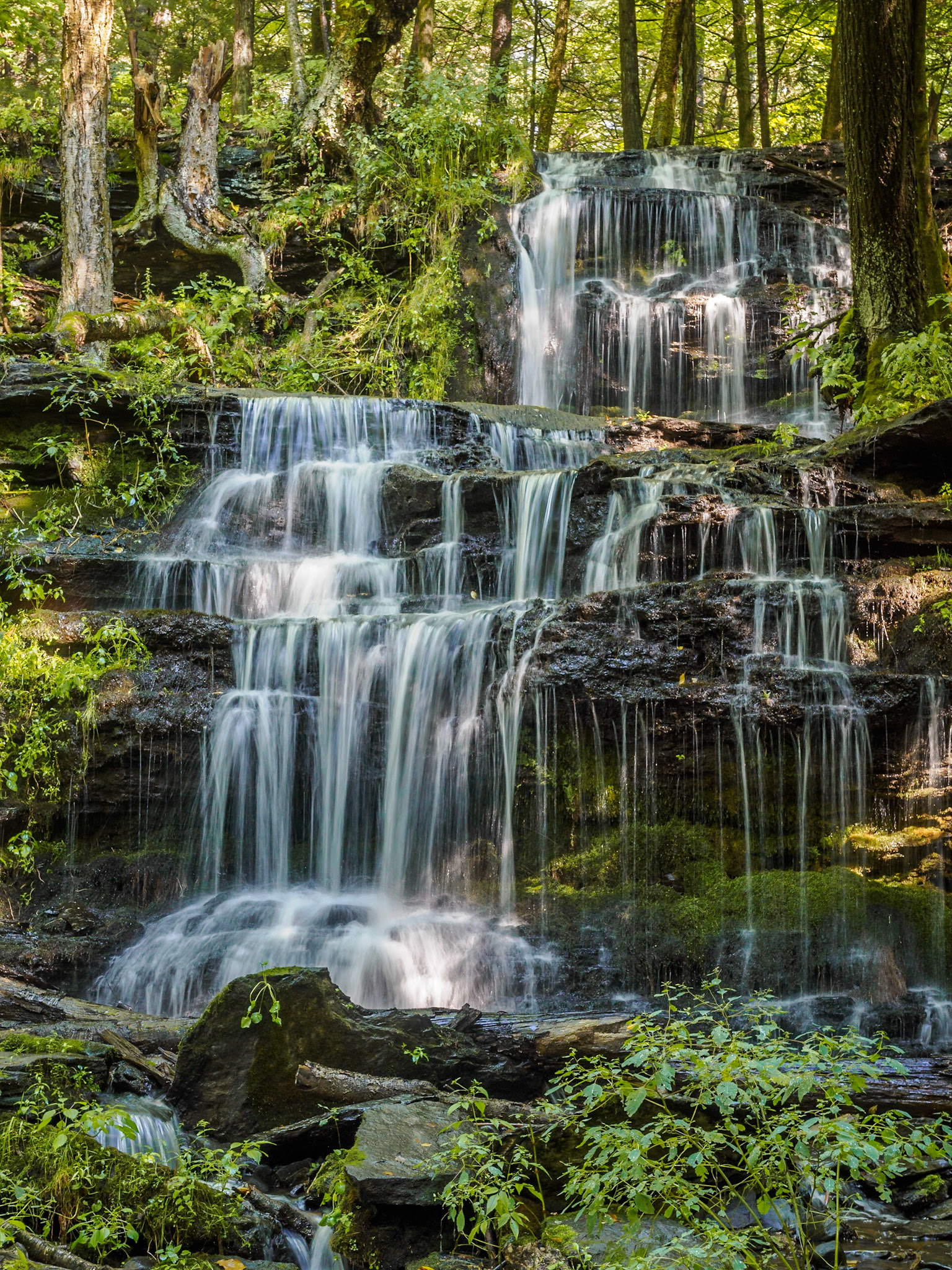
Heading west and north we found Gunn Brook Falls. Dan read about this waterfall on the internet as one of the best in Massachusetts. The description of how to get there was sketchy, but we were able to find the turn-off and slowly drove up a gravel path/road. The morning's rain was enough to make the falls a really nice surprise, and we were the only ones there.
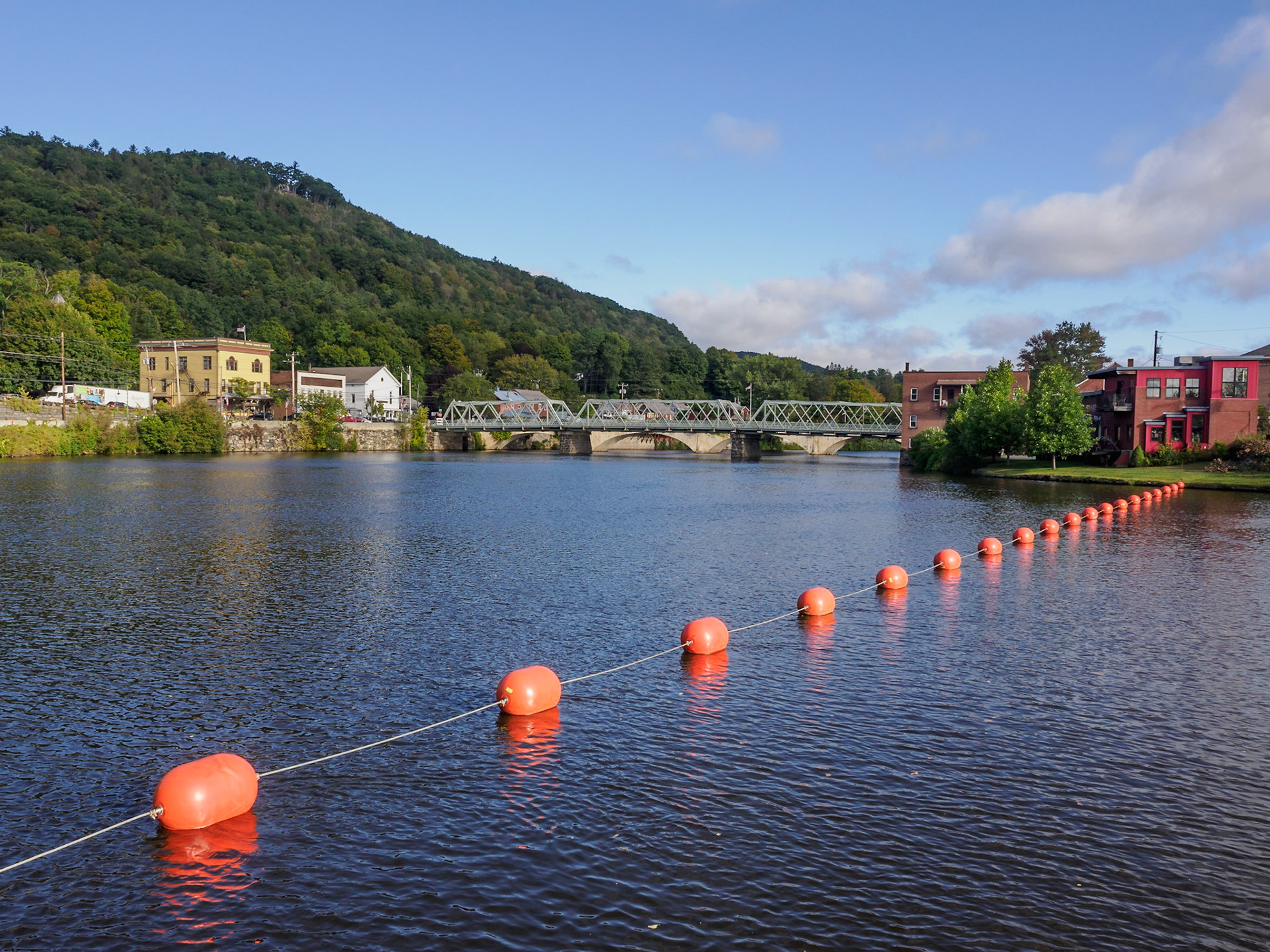
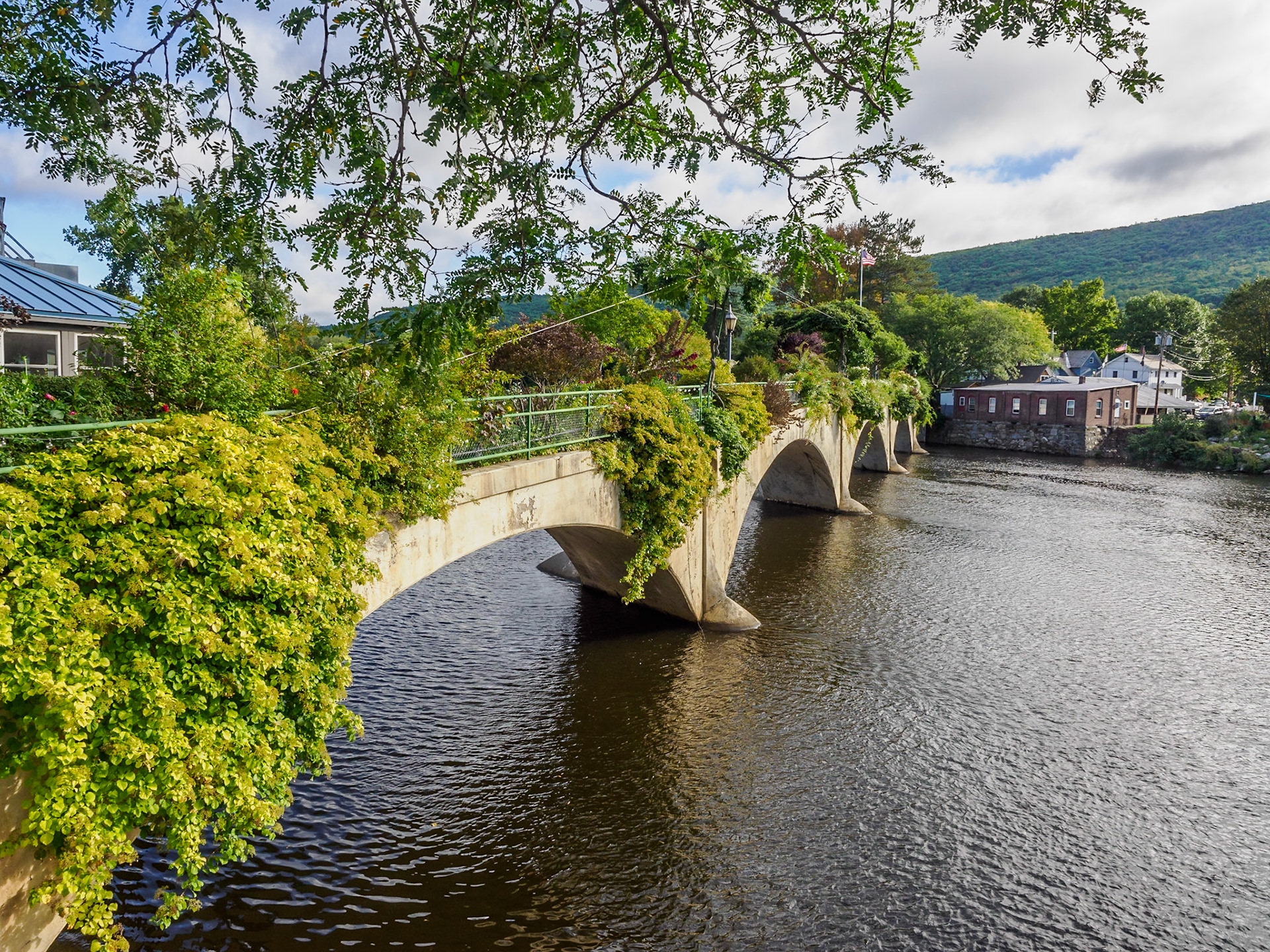
Bridge of Flowers
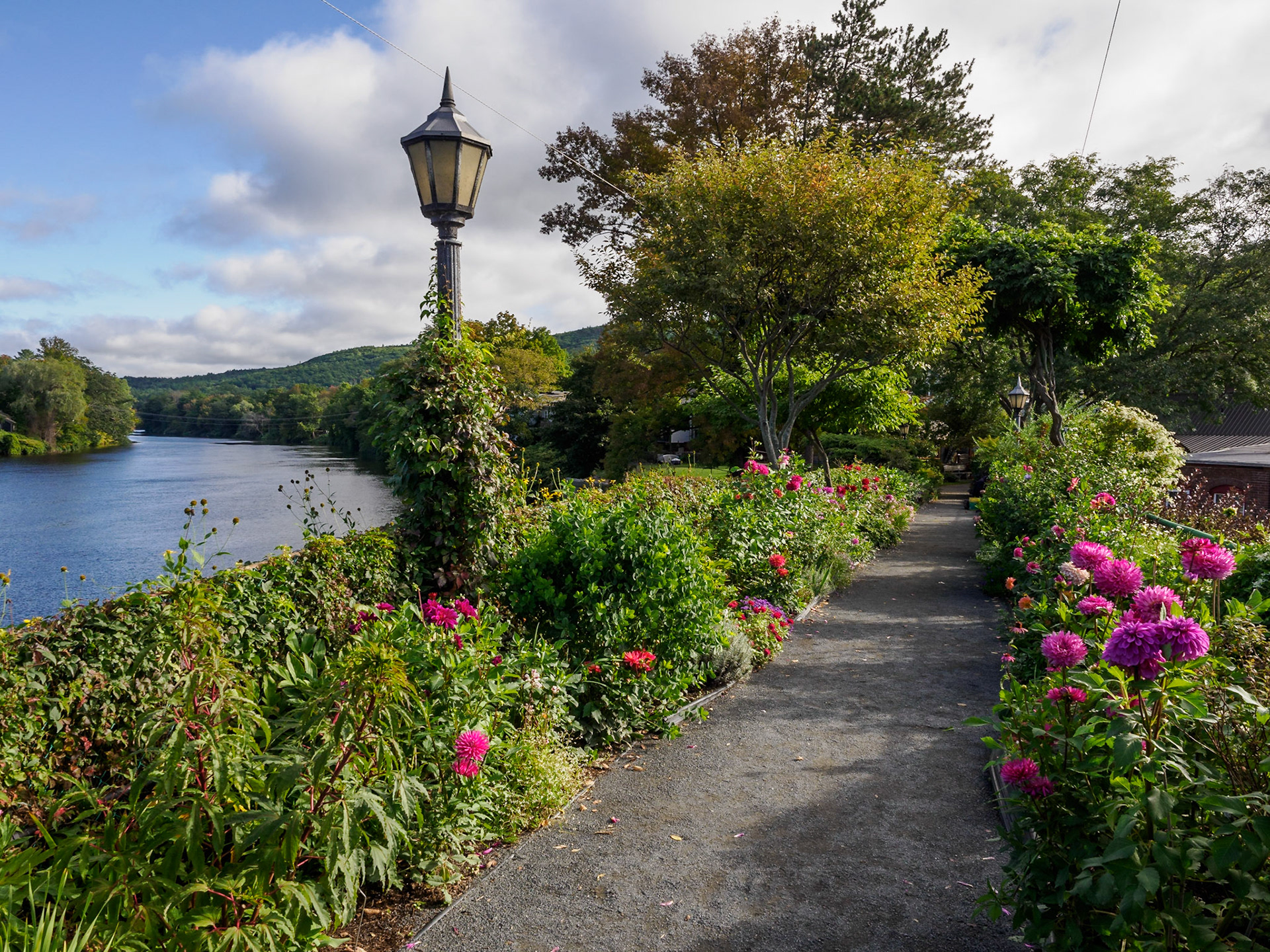

Just outside of Shelburne Falls we came across this large wooden Indian outside a Native American owned and operated gift shop, welcoming us to the Mohawk Trail.
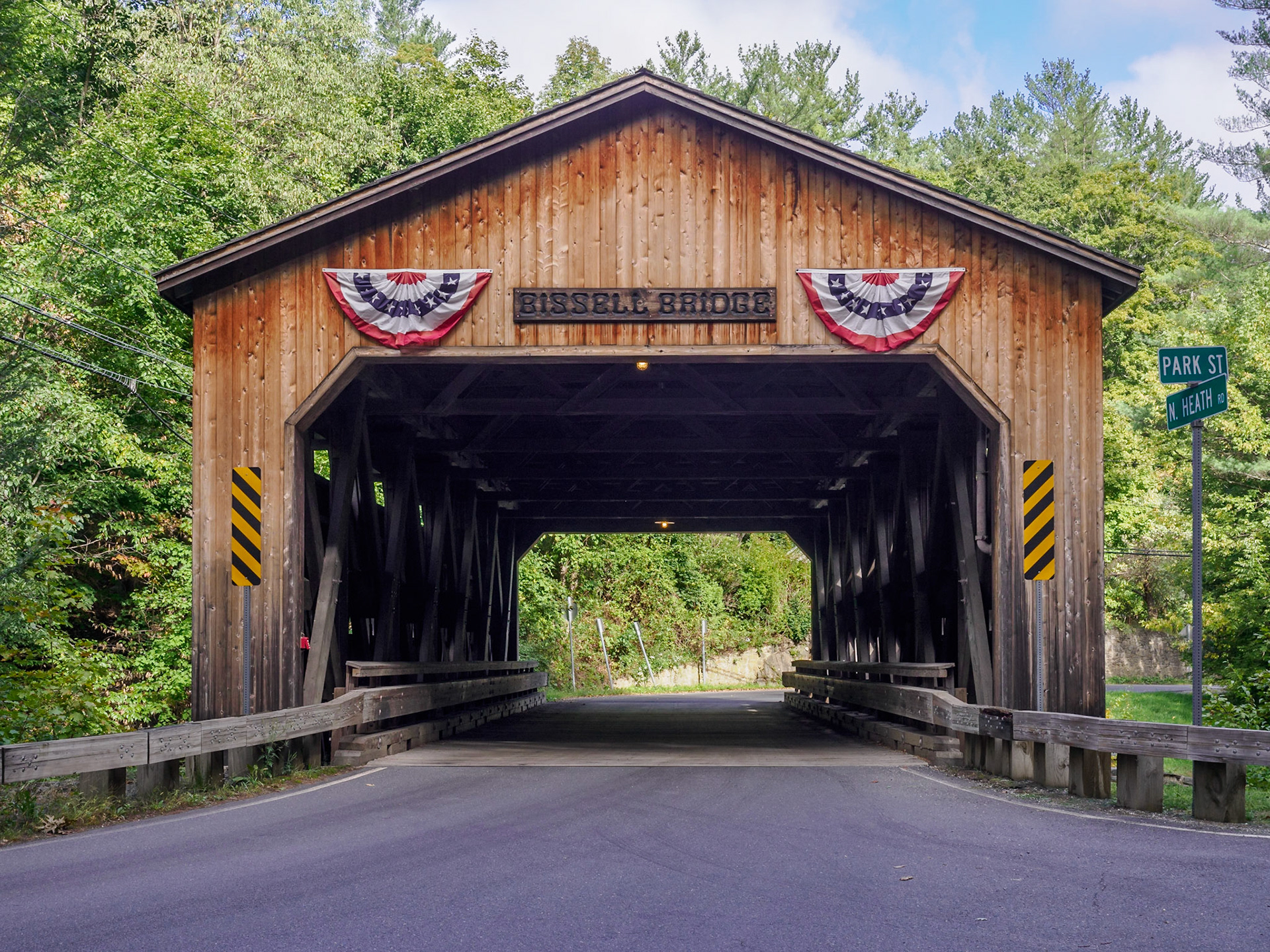
The Bissell Bridge is a "historic" covered bridge in Charlemont, Massachusetts. The first covered bridge was built in 1880. In the 1950s, it deteriorated and was condemed by the DOT, who wanted to replace it with a modern steel and concrete bridge. The community people protested and a near-replica of the original bridge was built instead. By the 1990s, the new bridge was also deteriorating, so it was closed and rehabilitated. It was placed on the National Register of Historic Places in 2004. Surprisingly, it still looked good at the time we visited.

Some autumn color along the Cold River
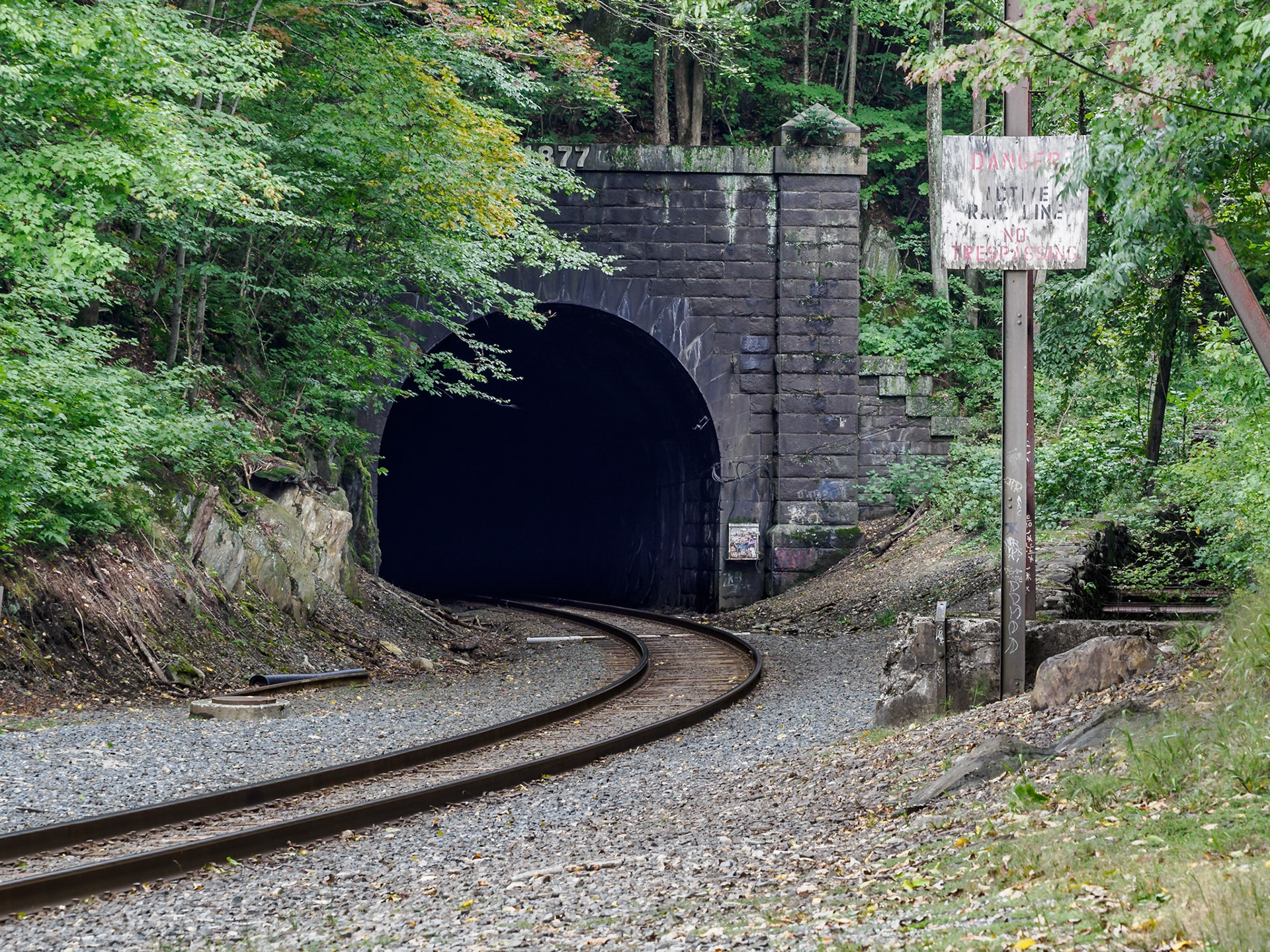
The eastern end of the Hoosac Tunnel in Florida, Massachusetts. It is a railroad tunnel through the Northern Berkshire mountains, ending 4 3/4 miles to the west in North Adams, Mass. It took a good 25 years to build; from 1851 to 1876.
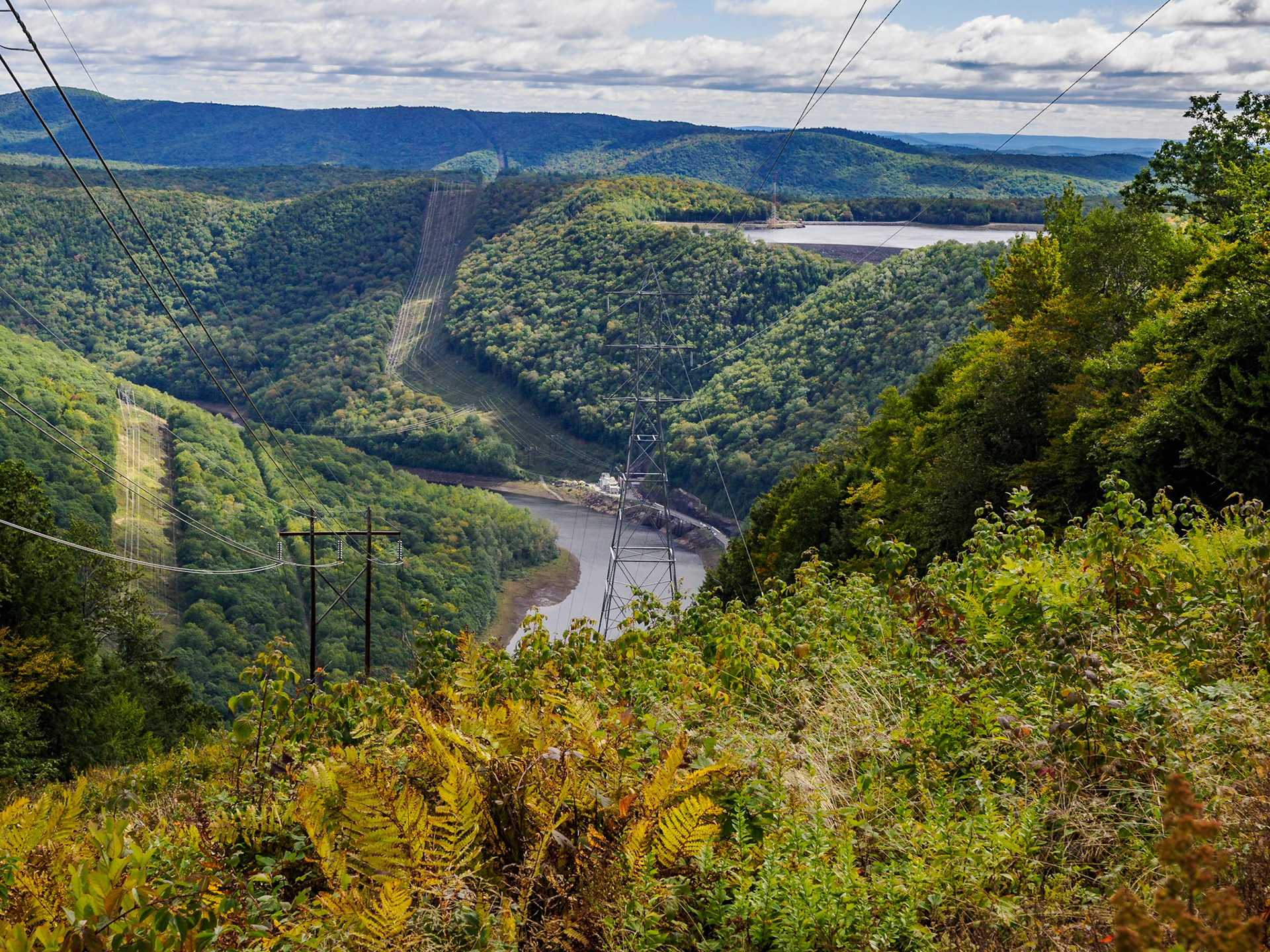
This was an unexpected find along the trail–Transmission lines in the foreground and background lead to a 600 MW pumped hydro plant. The body of water near the top right of the photos is the upper reservoir and the water below is the lower reservoir. It was interesting to see both reservoirs of a pumped hydro plant so close to each other. Perhaps you need to be a DOUG (dumb old utility guy or gal) to find this interesting.
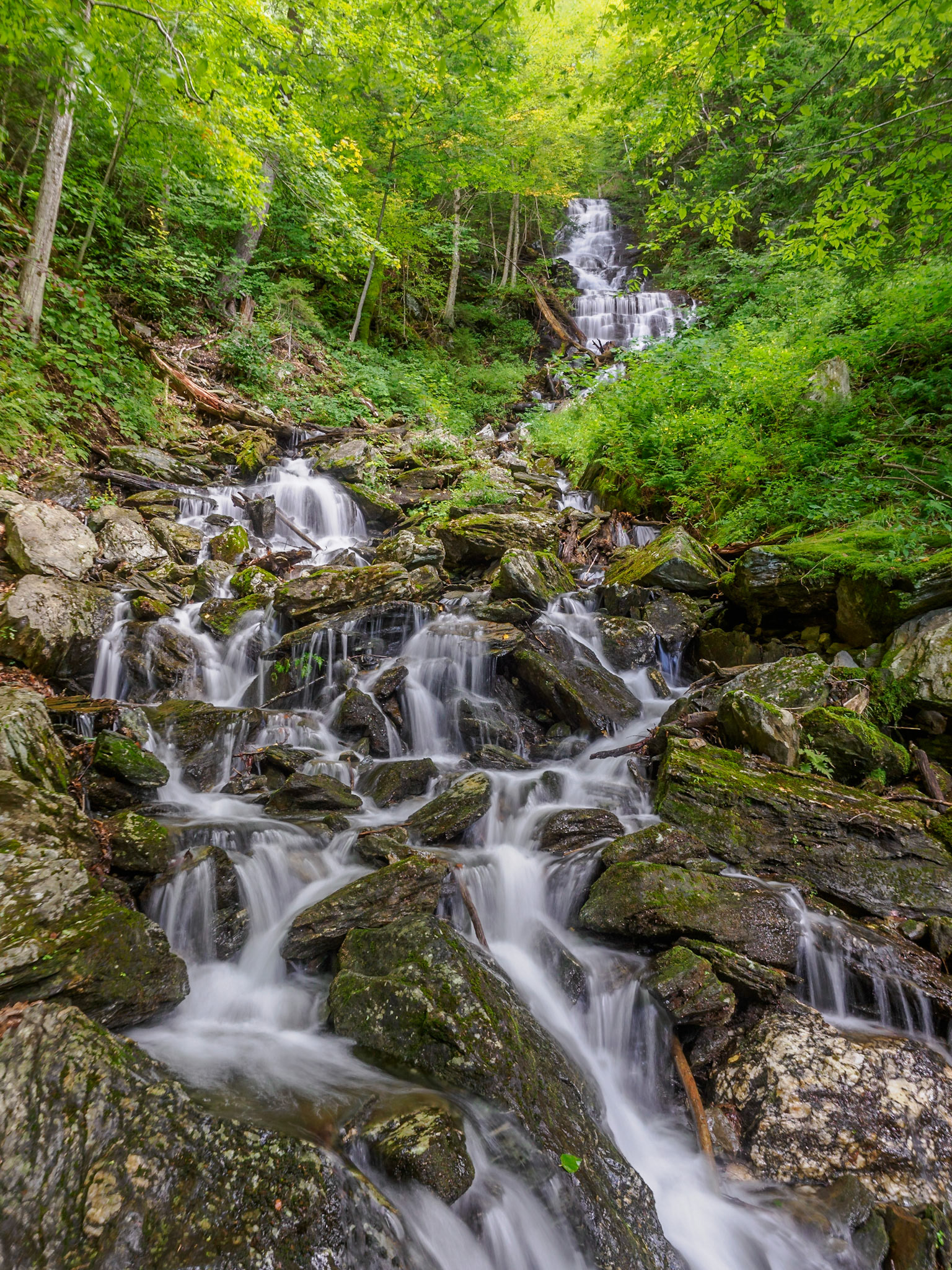
Money Brook Falls

Veterans War Memorial Tower
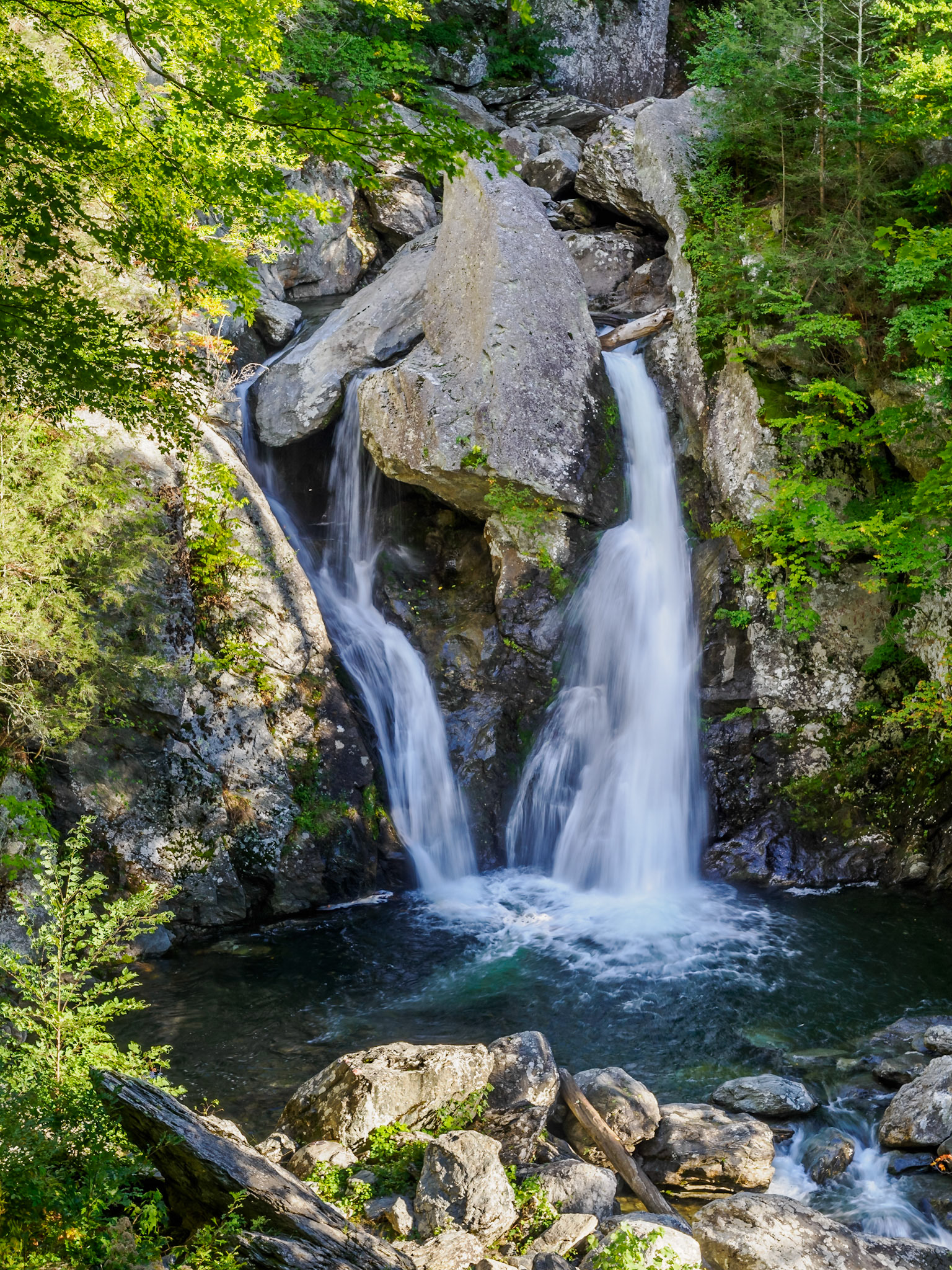
Bash Bish Falls
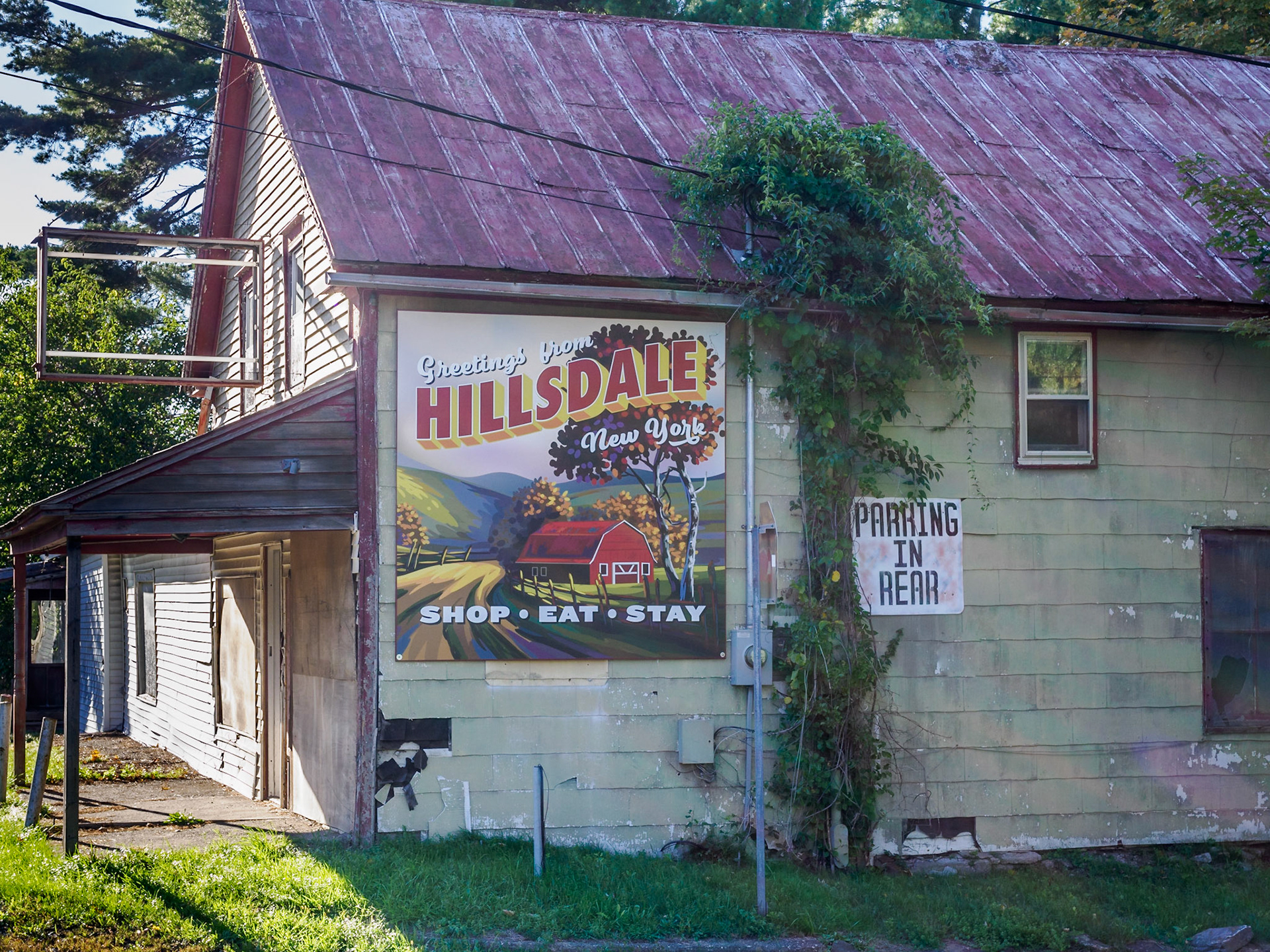
How could we not stop for an old-time Americana roadside sign on the side of a building? It didn't look like there had been any shopping, eating, or staying at this building in a while though.
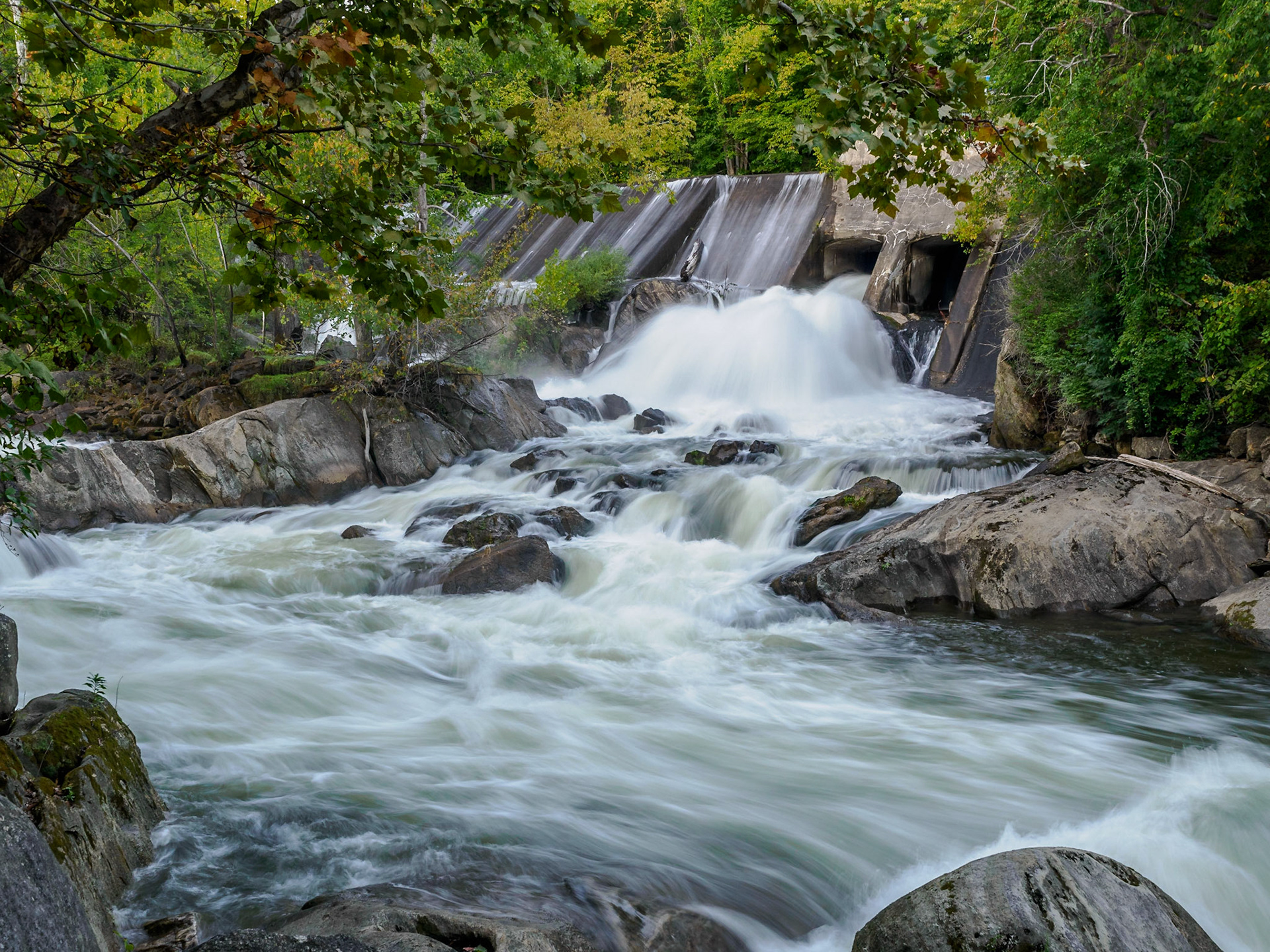
Housatonic River at Bulls Covered Bridge...our last photo op of the Connrhochucut part of New England.
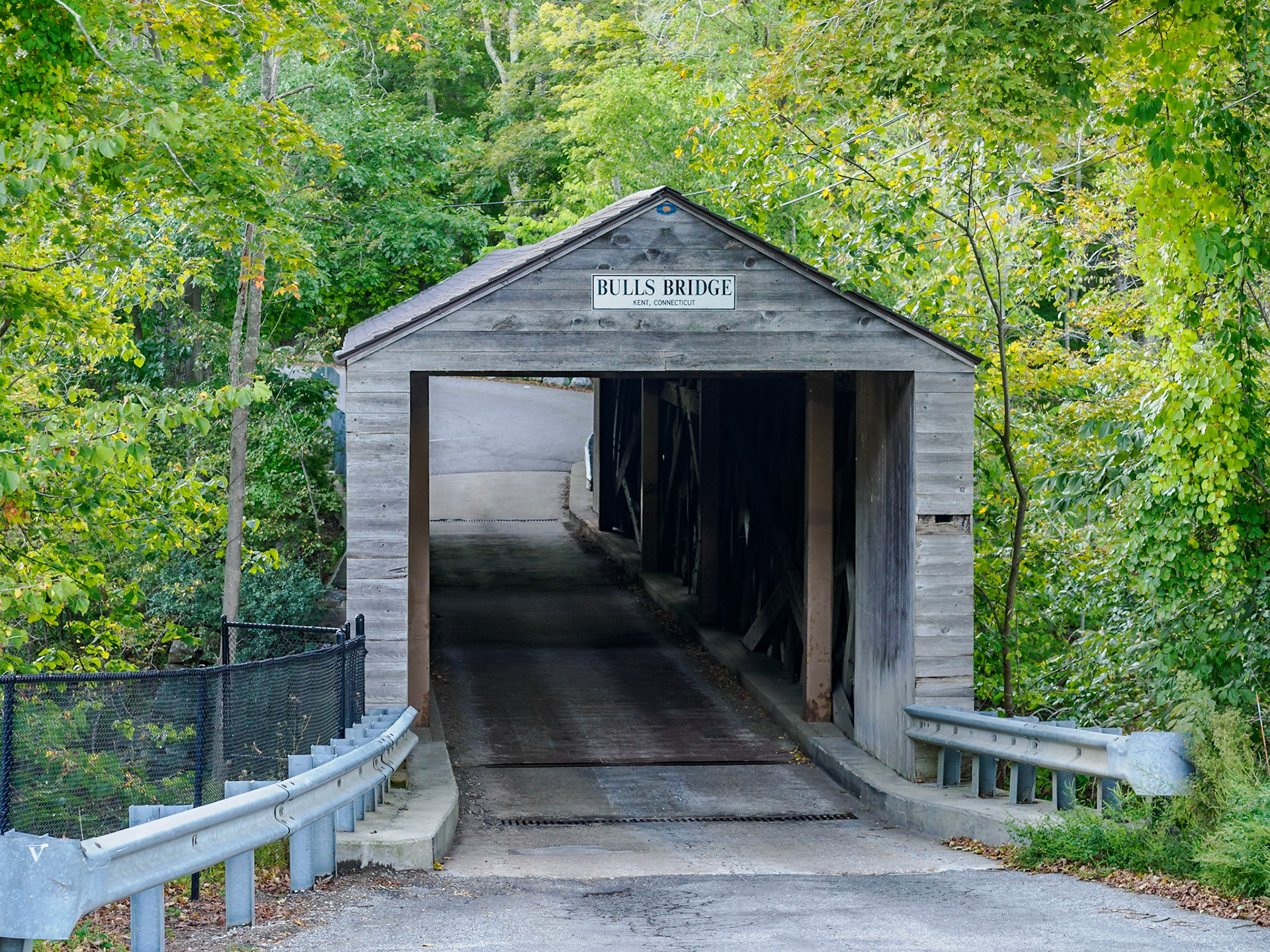
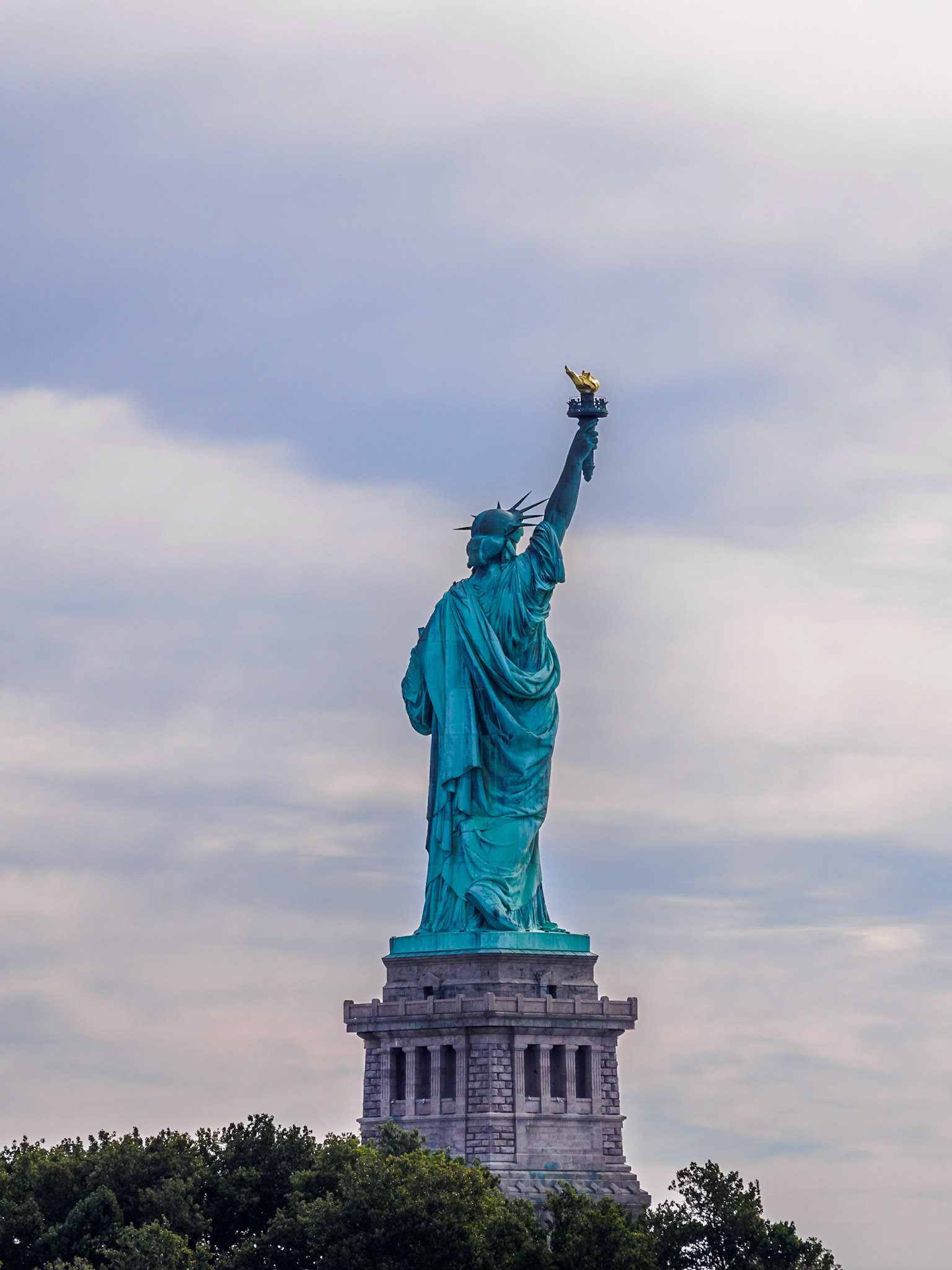
Statue of Liberty

World Trade Center and the Manhattan Skyline
